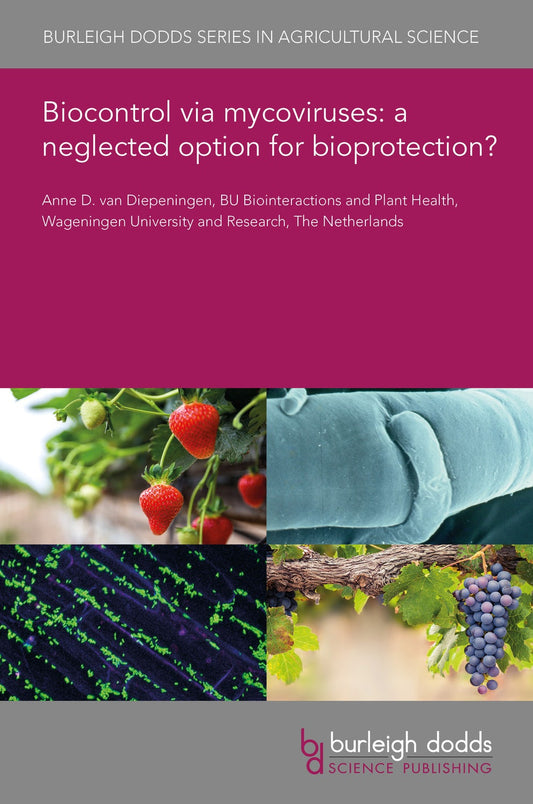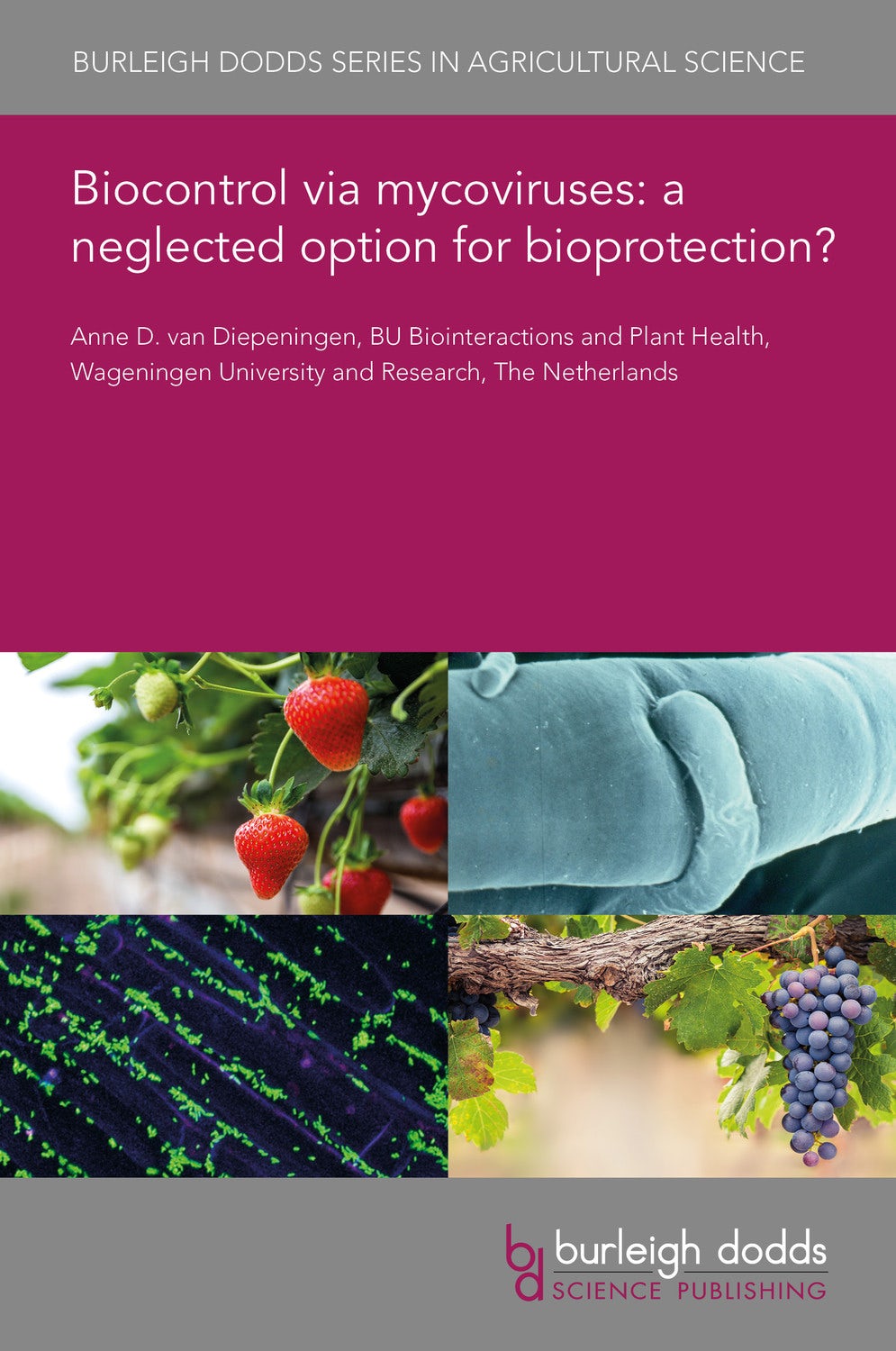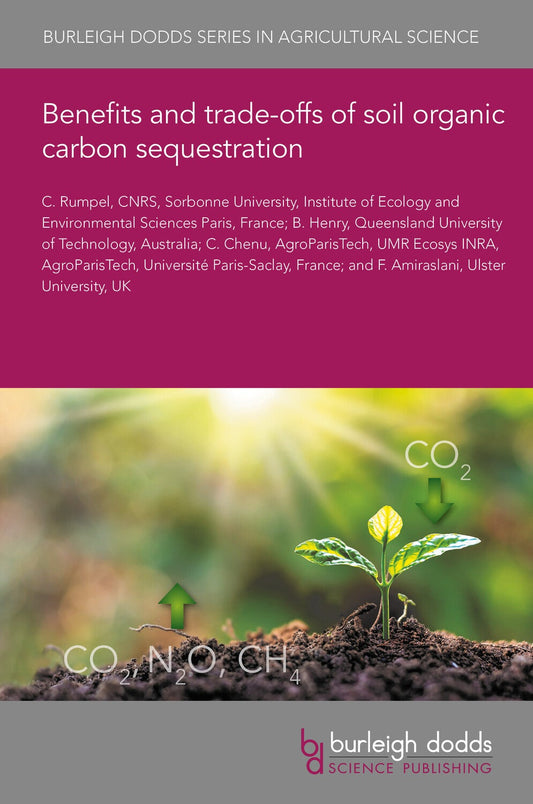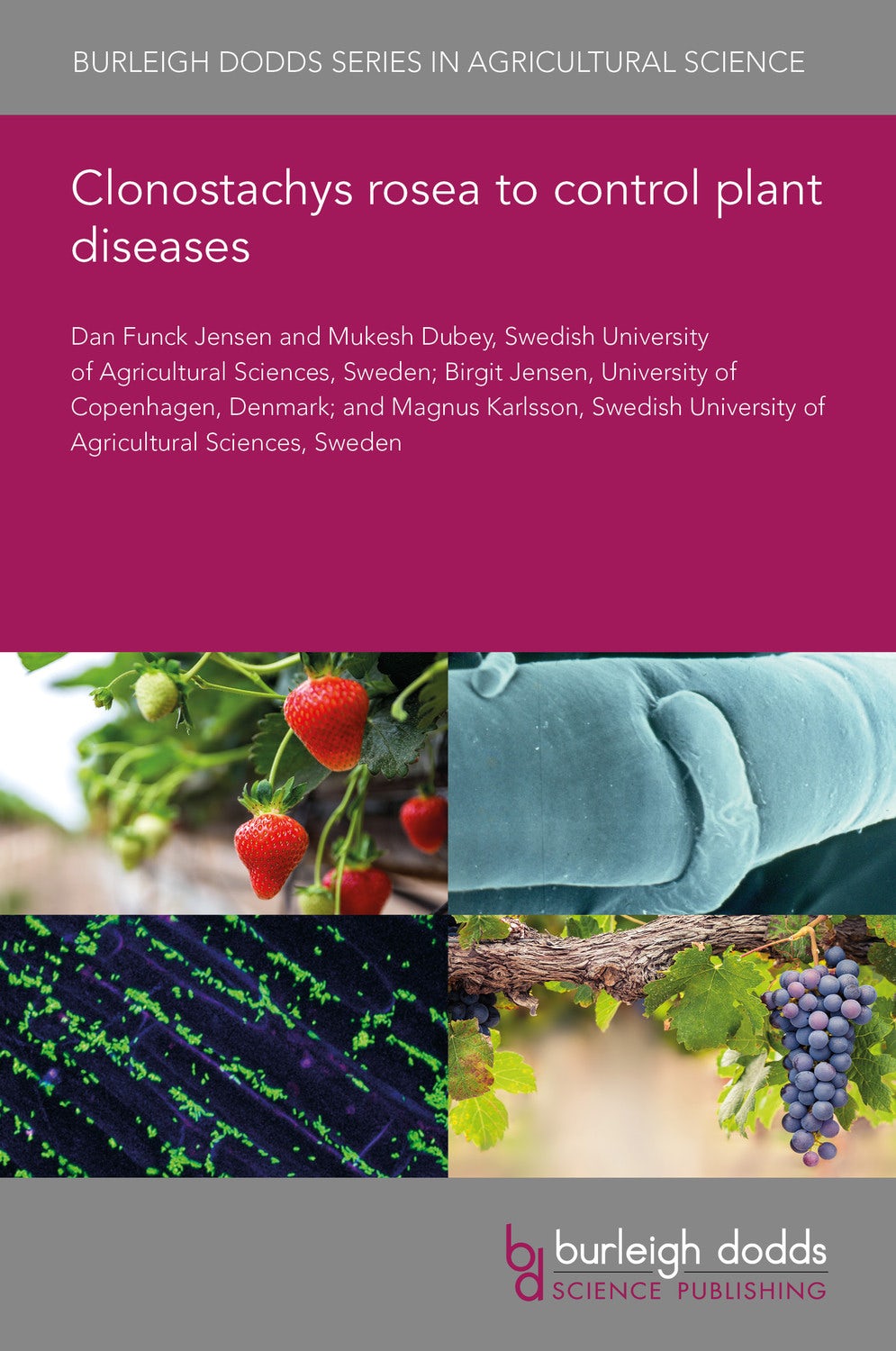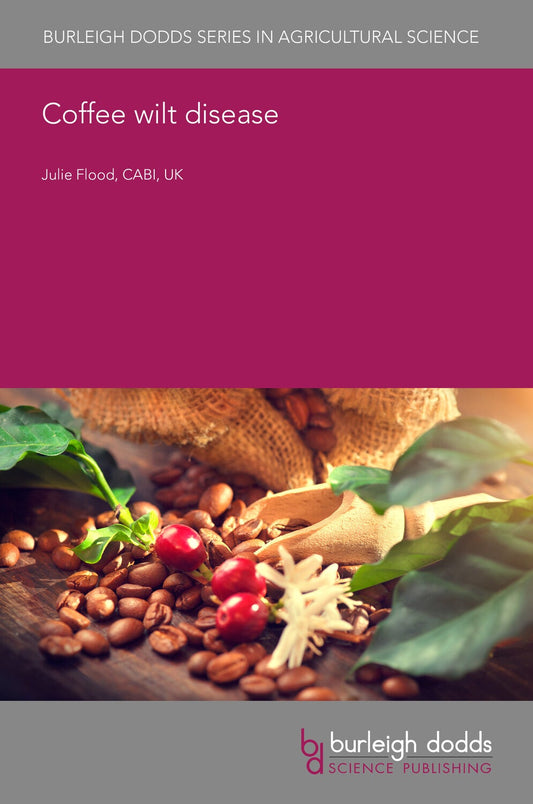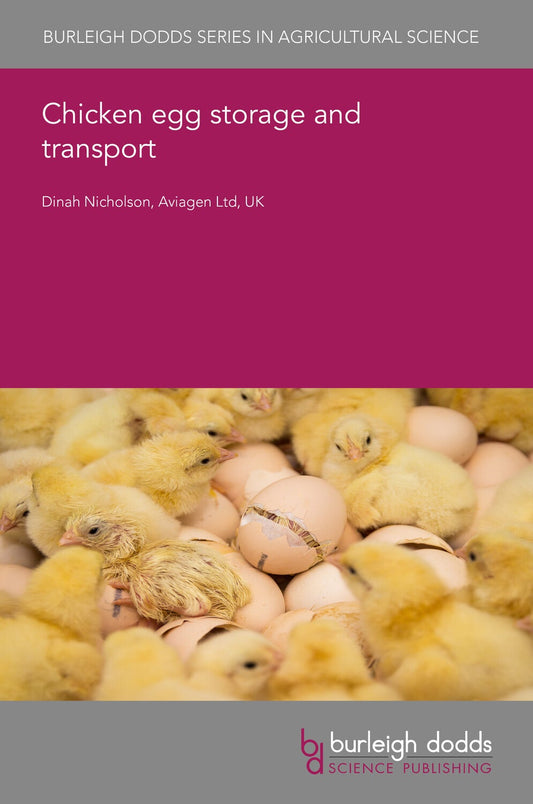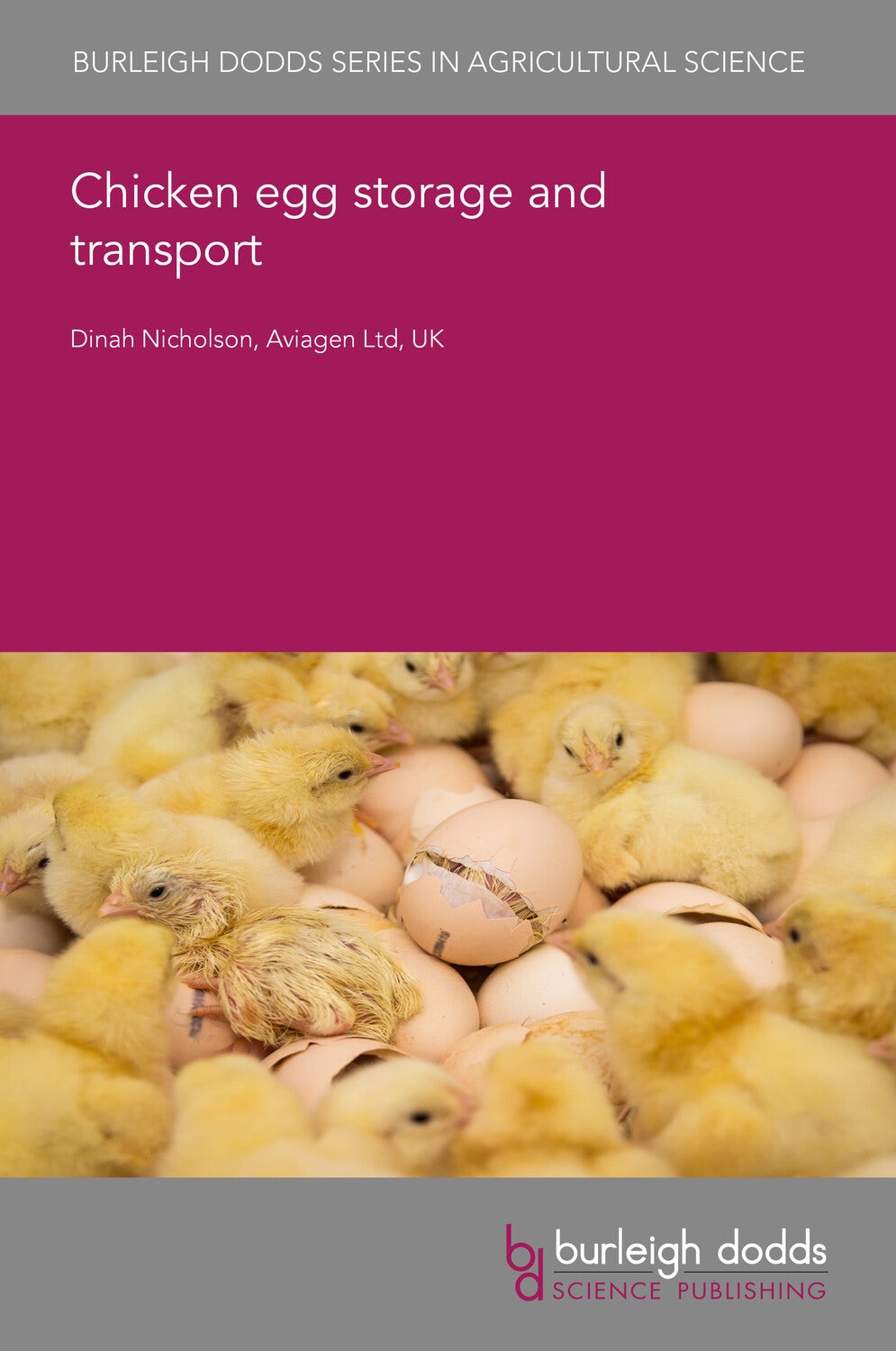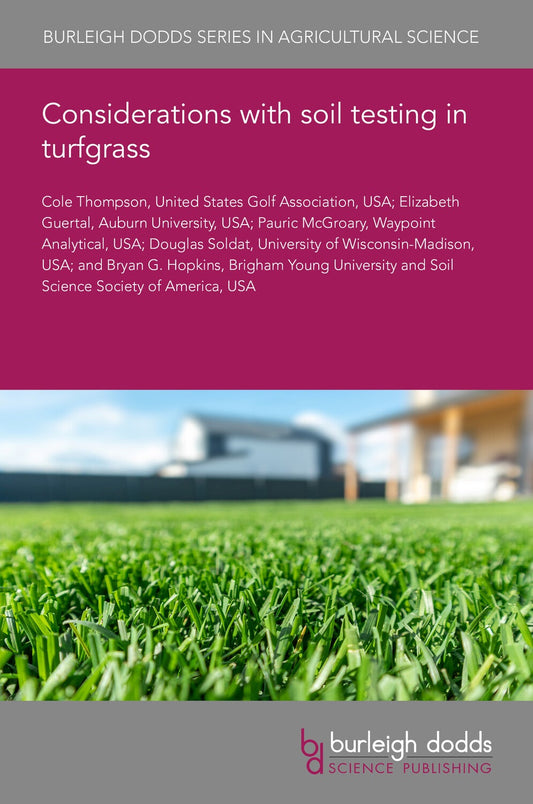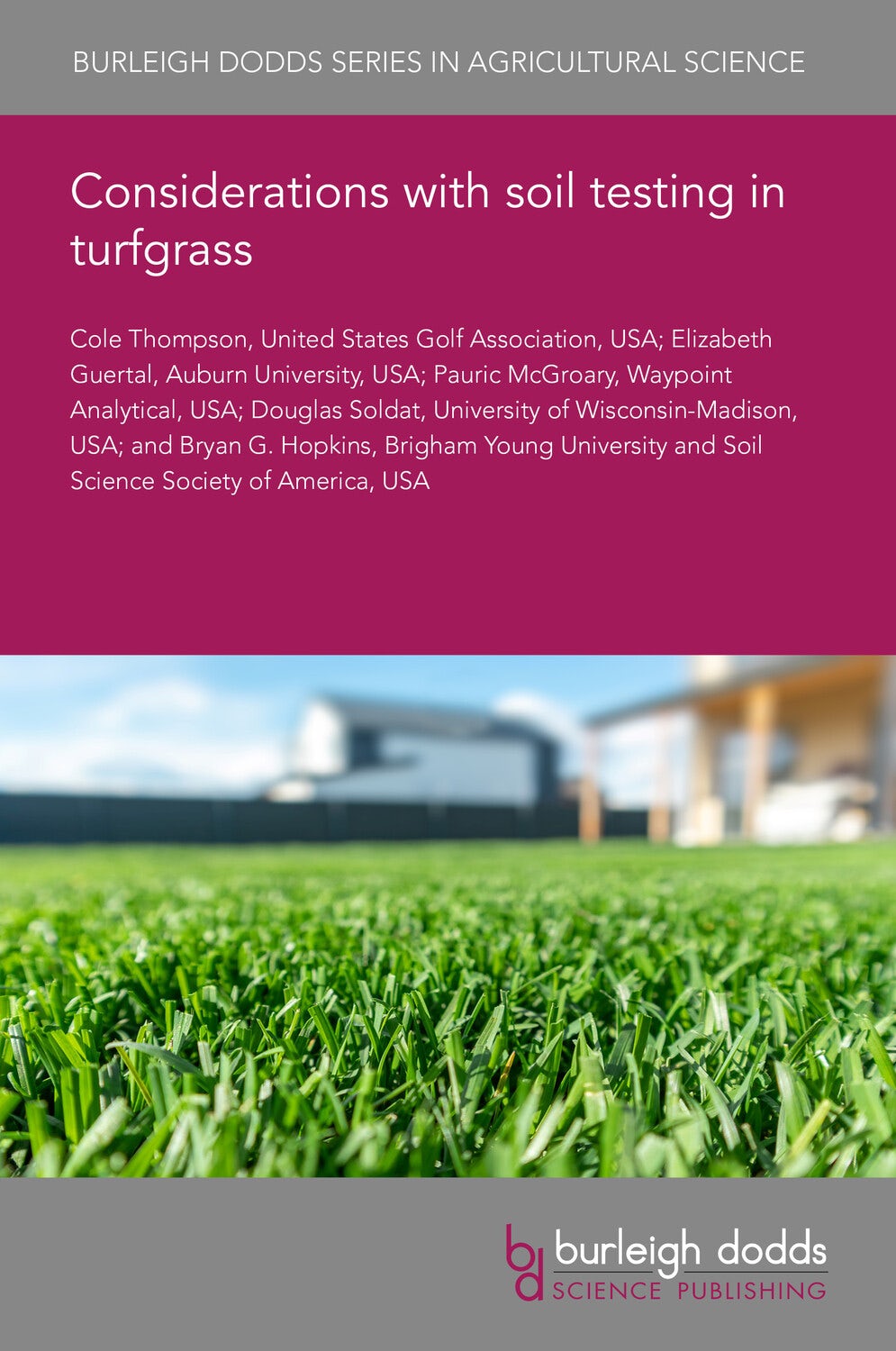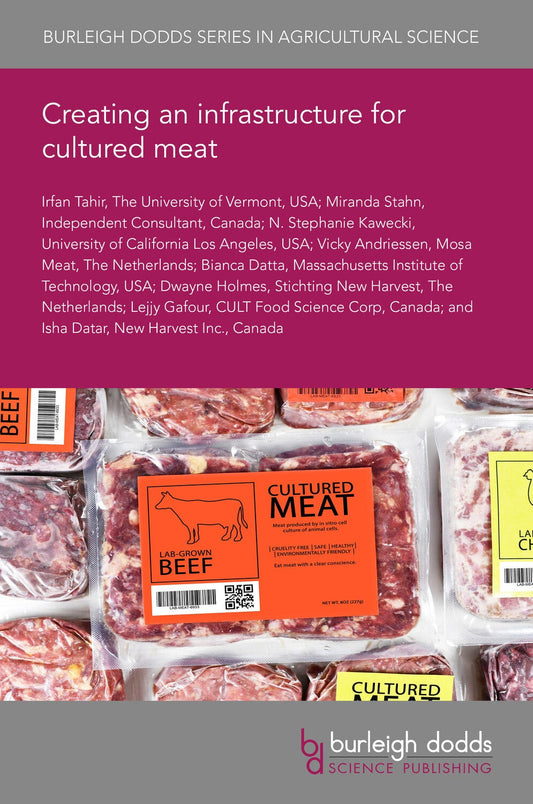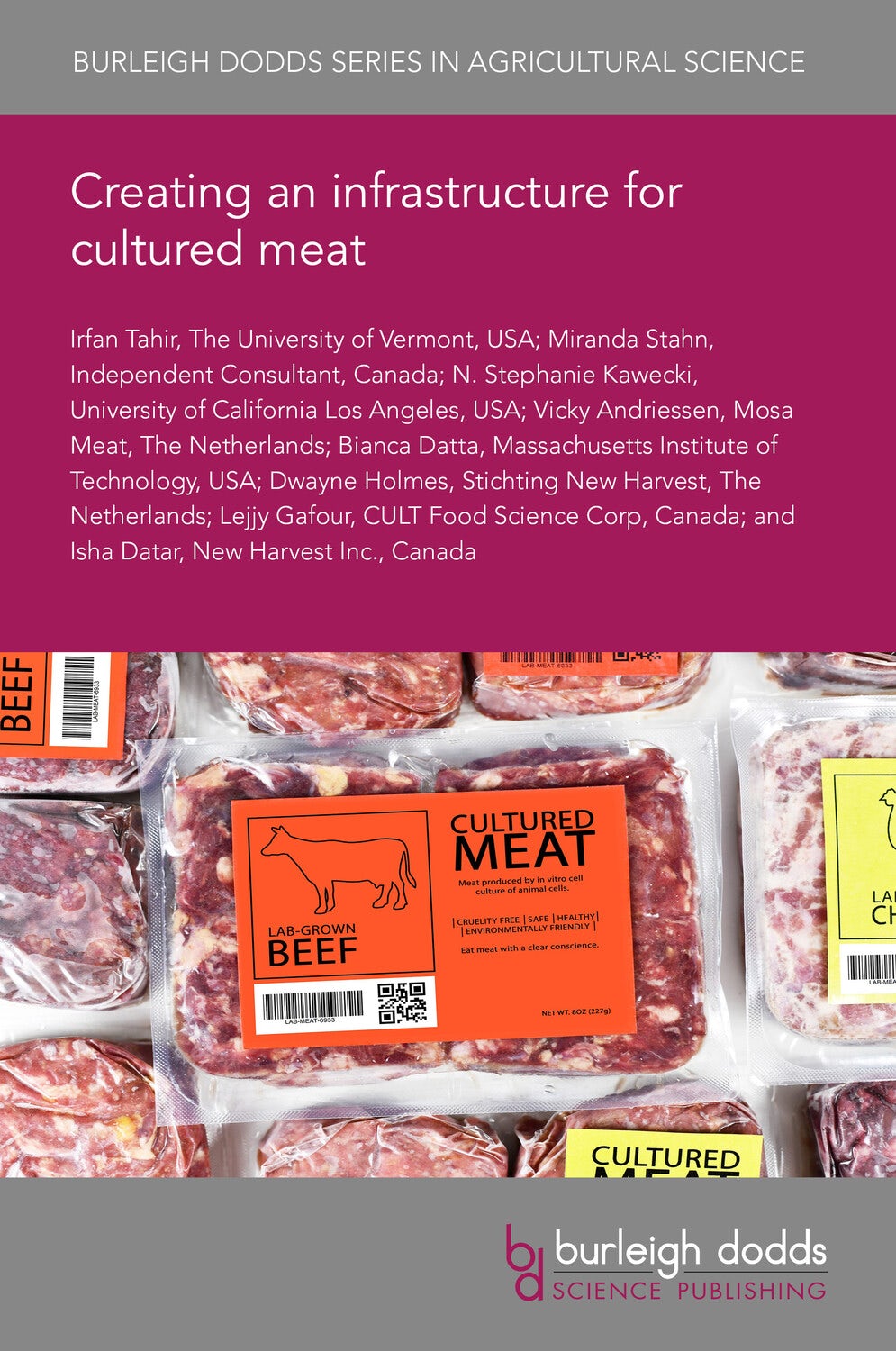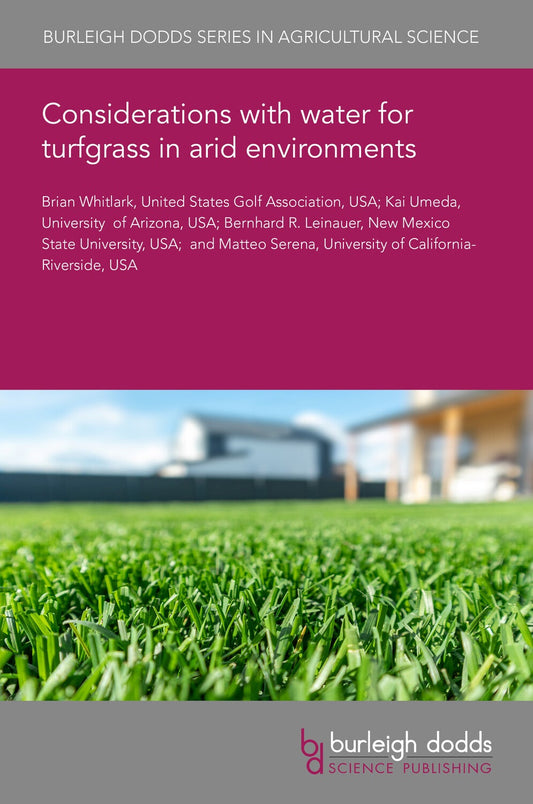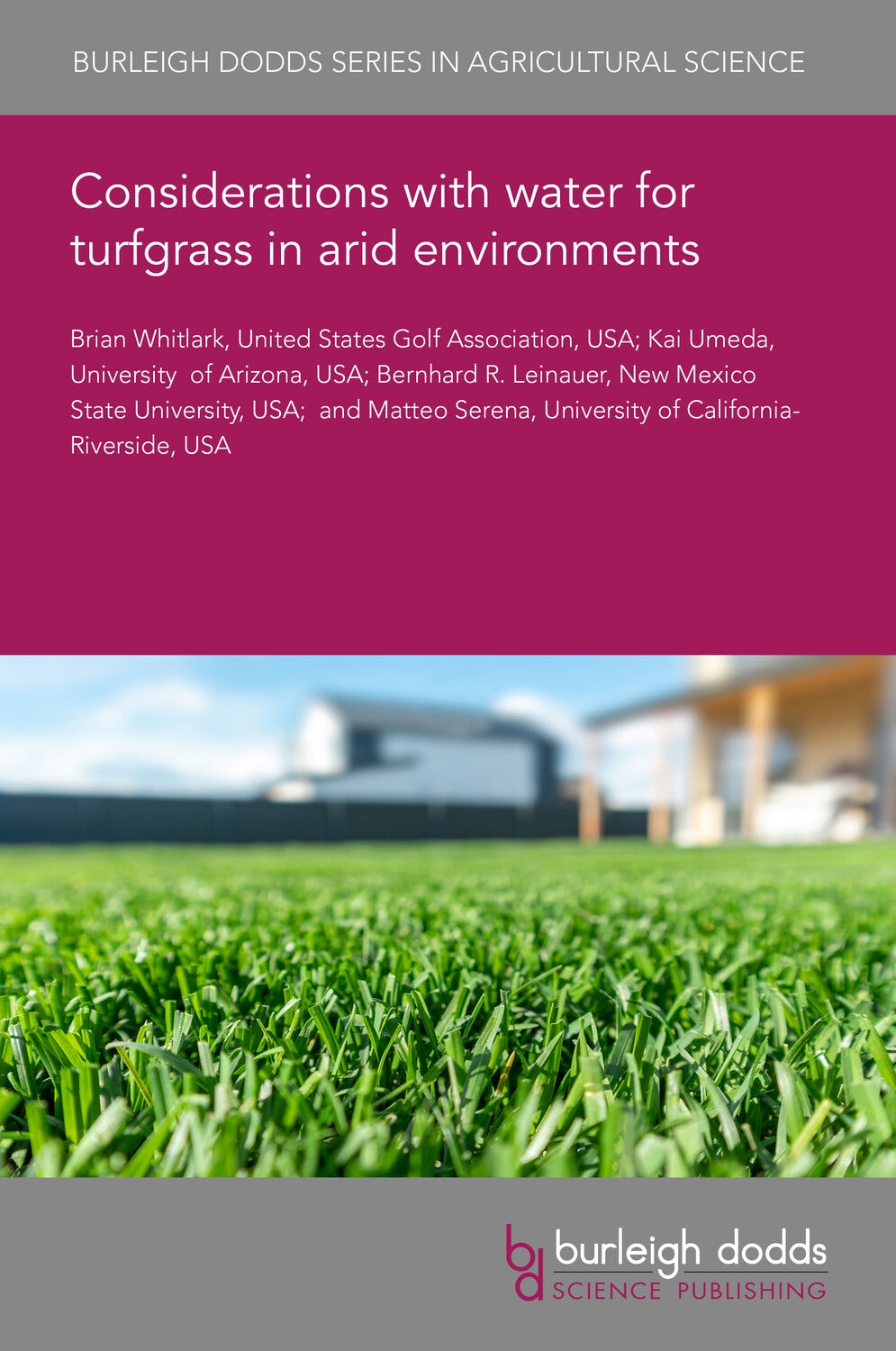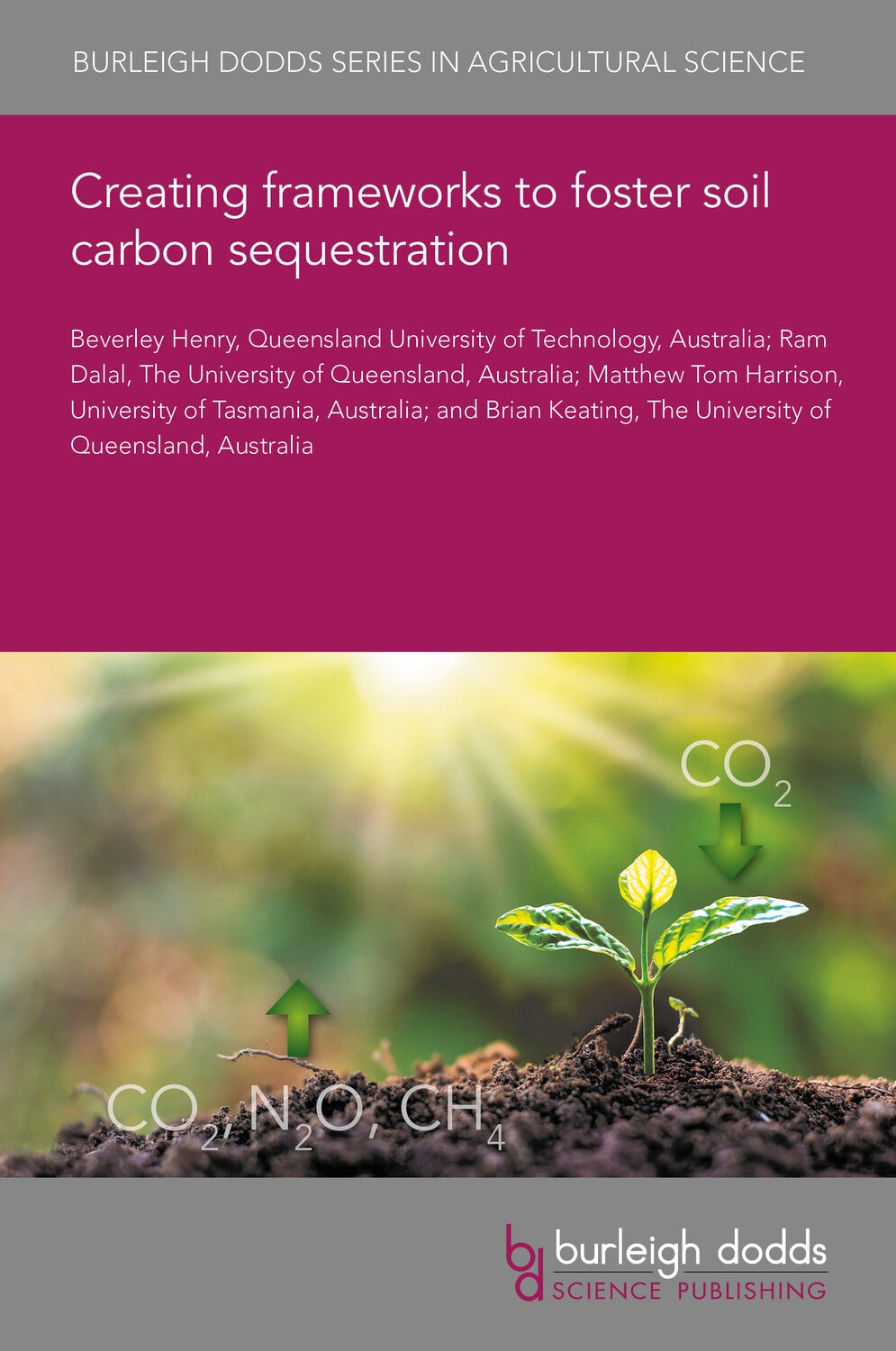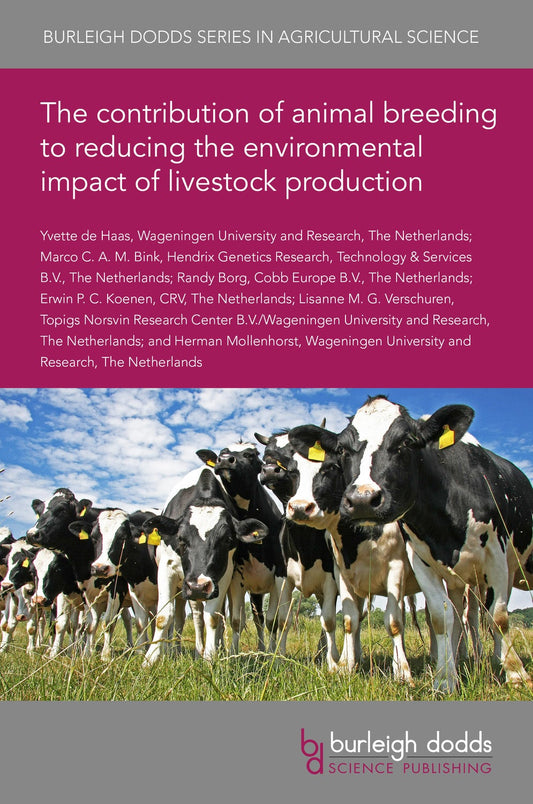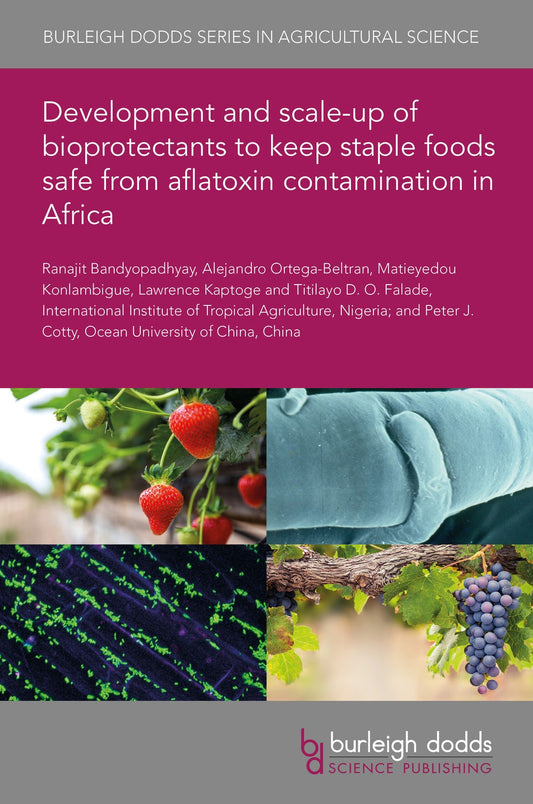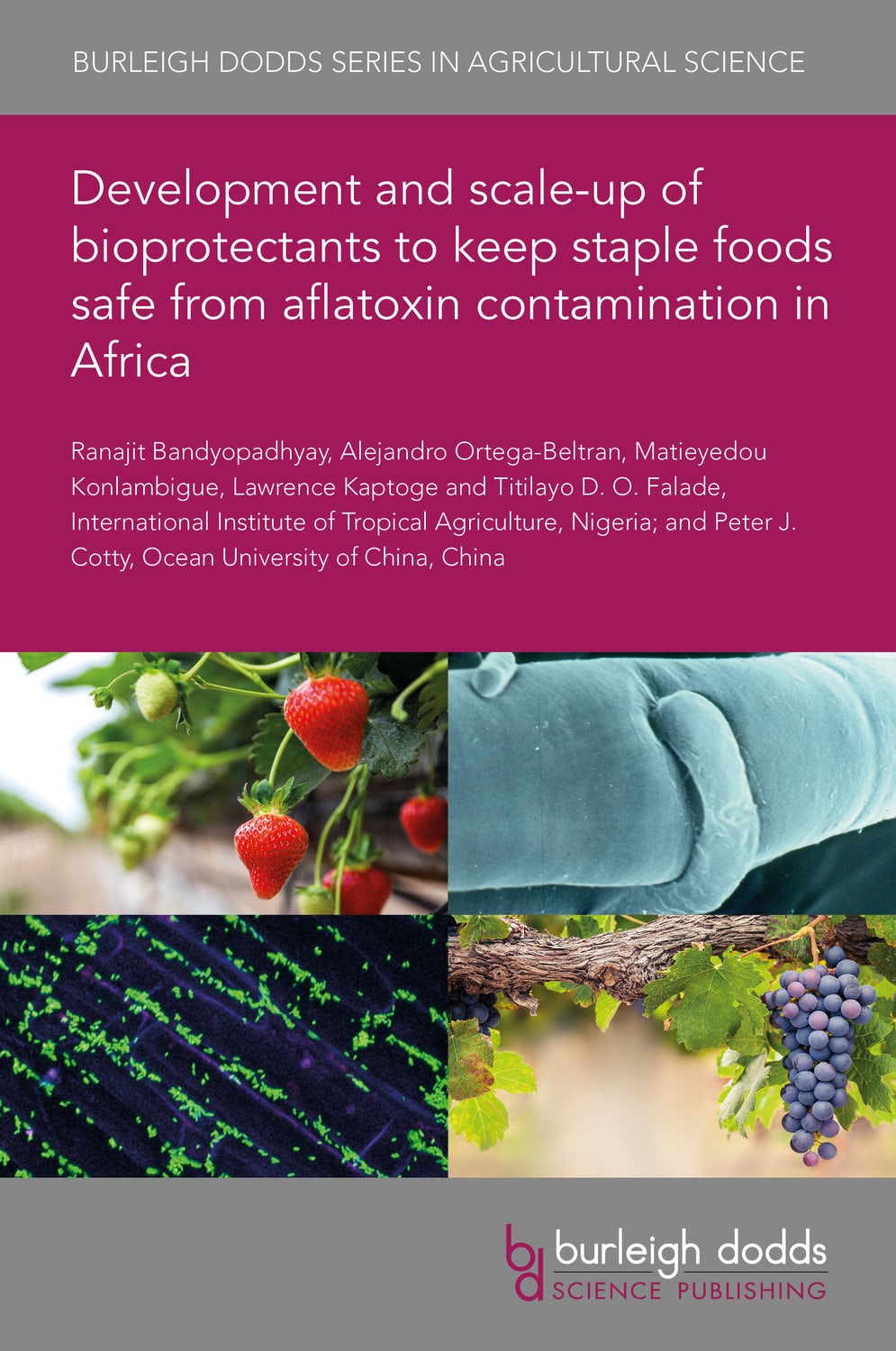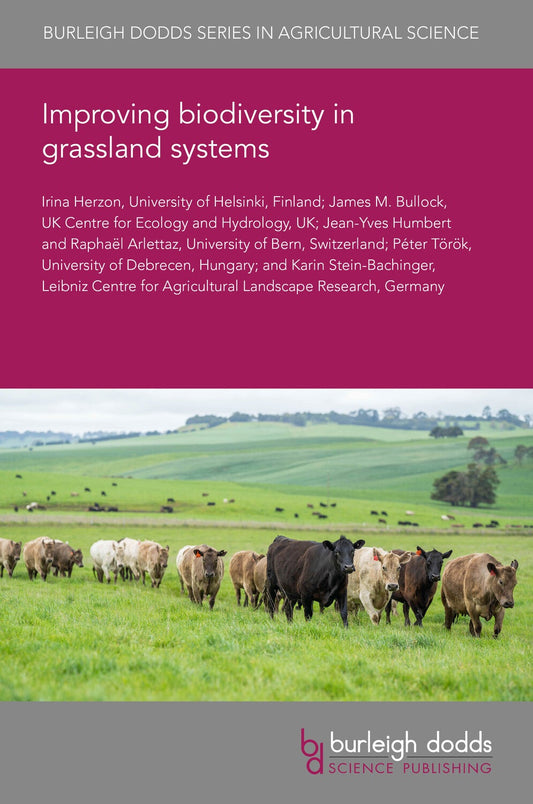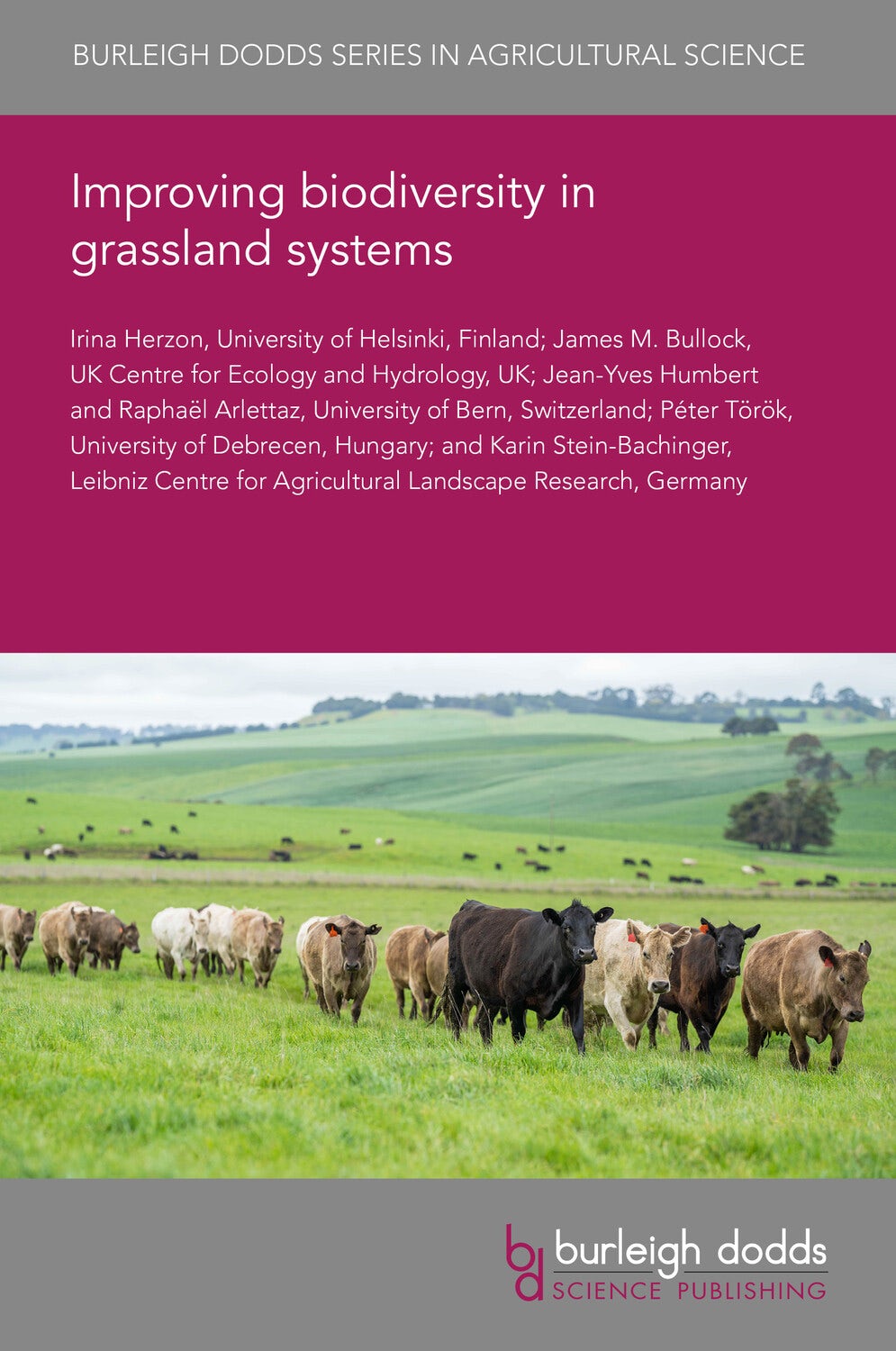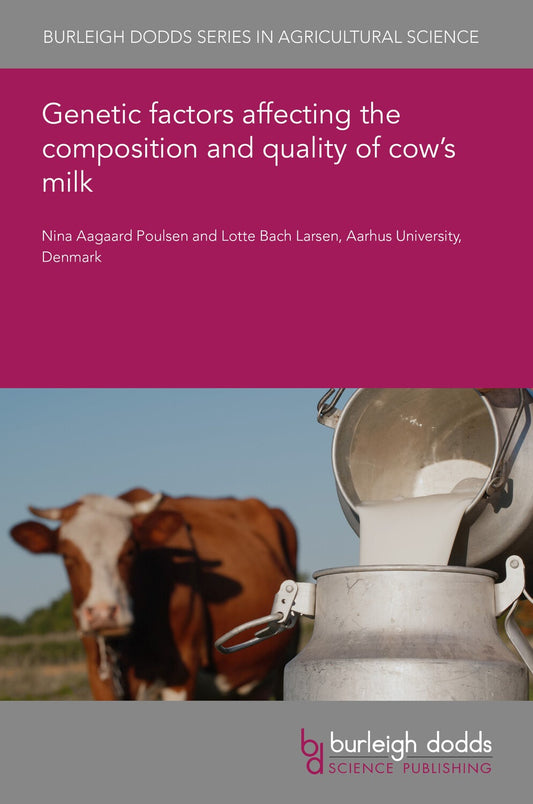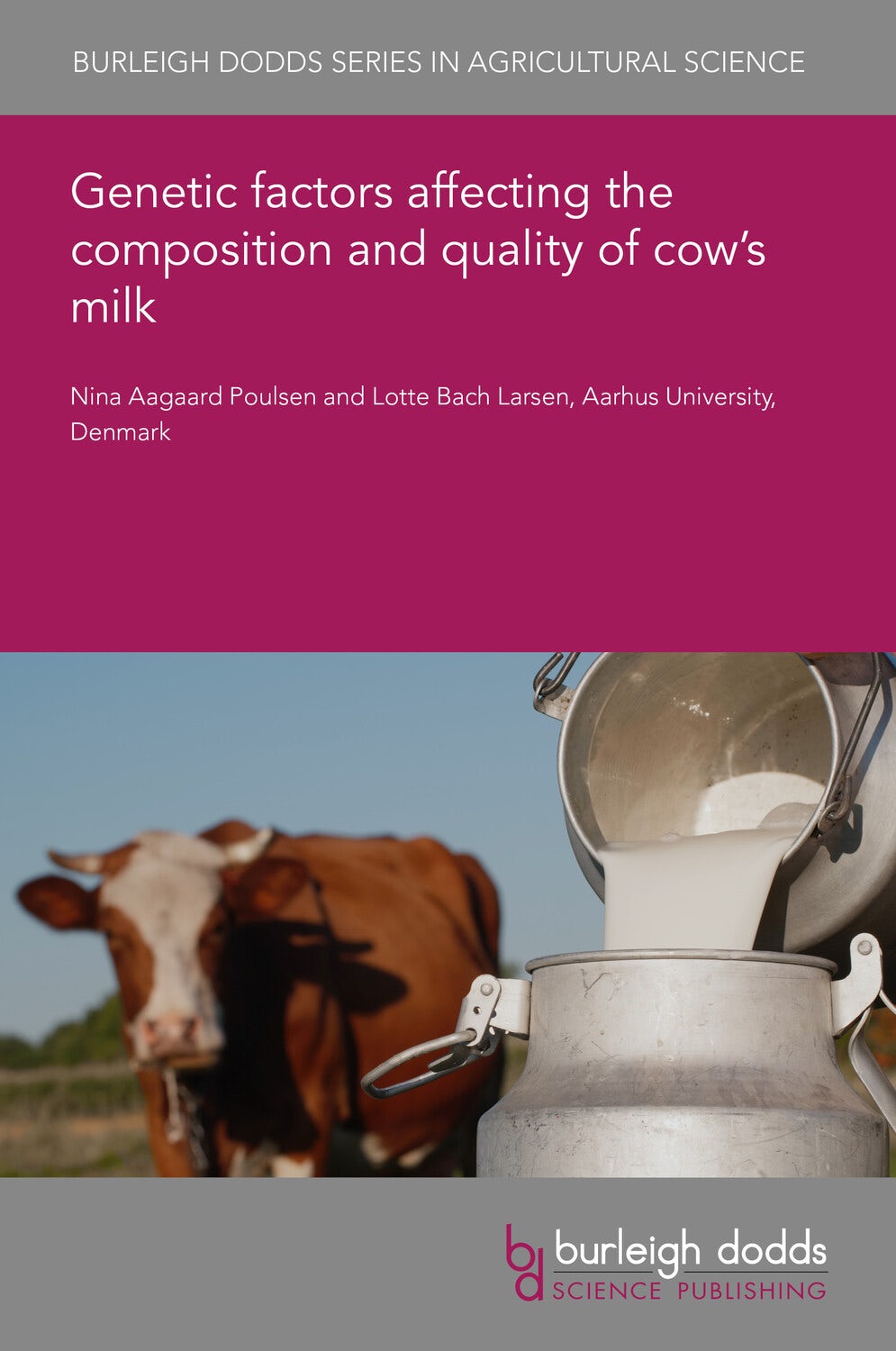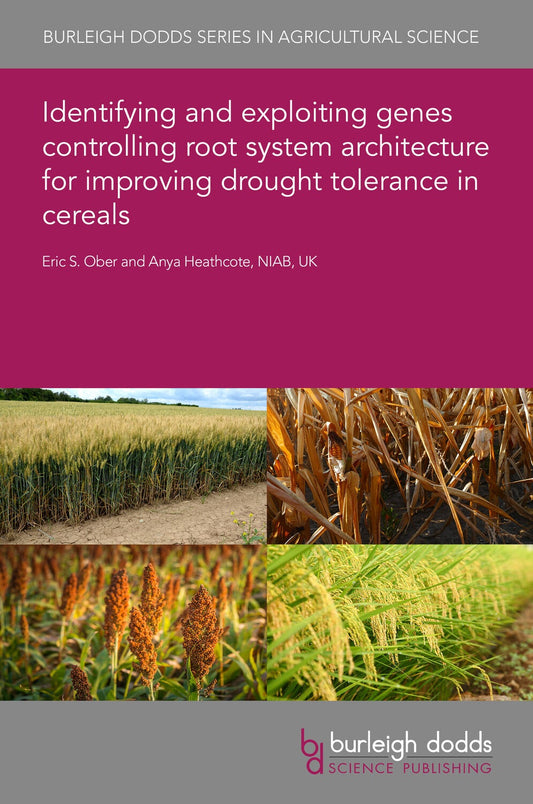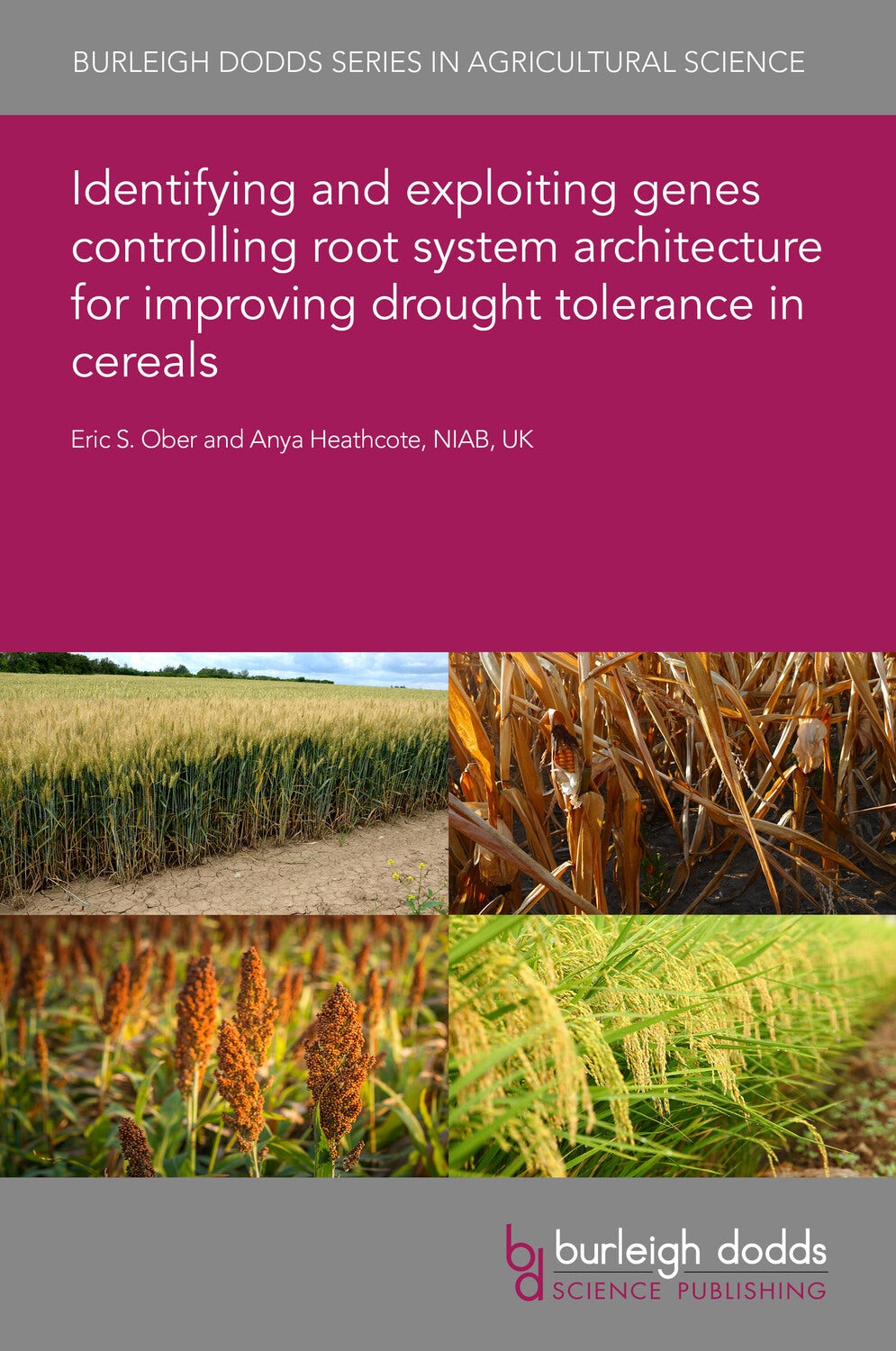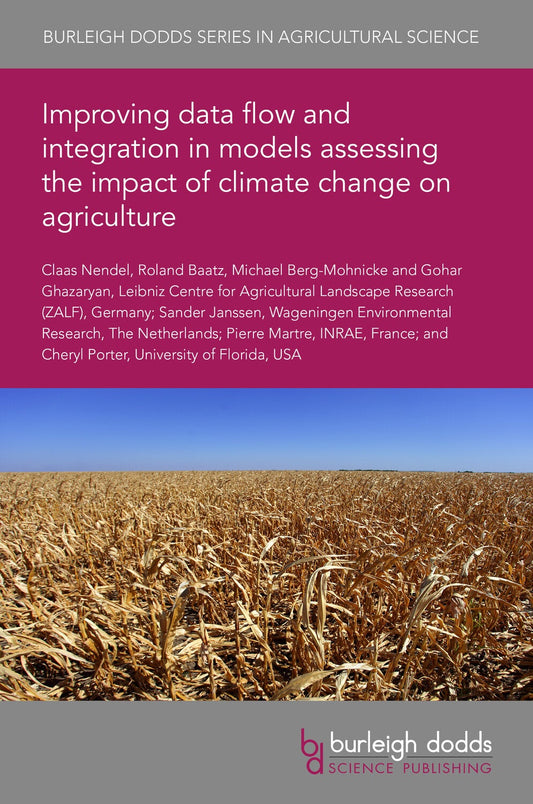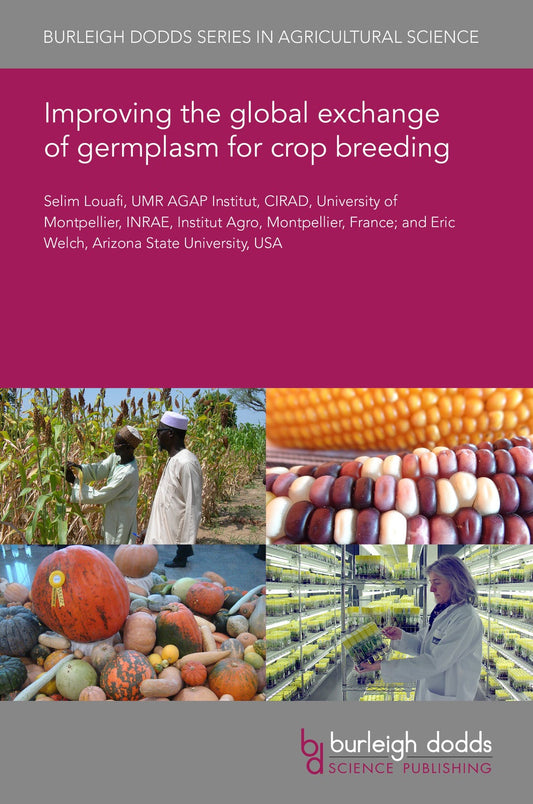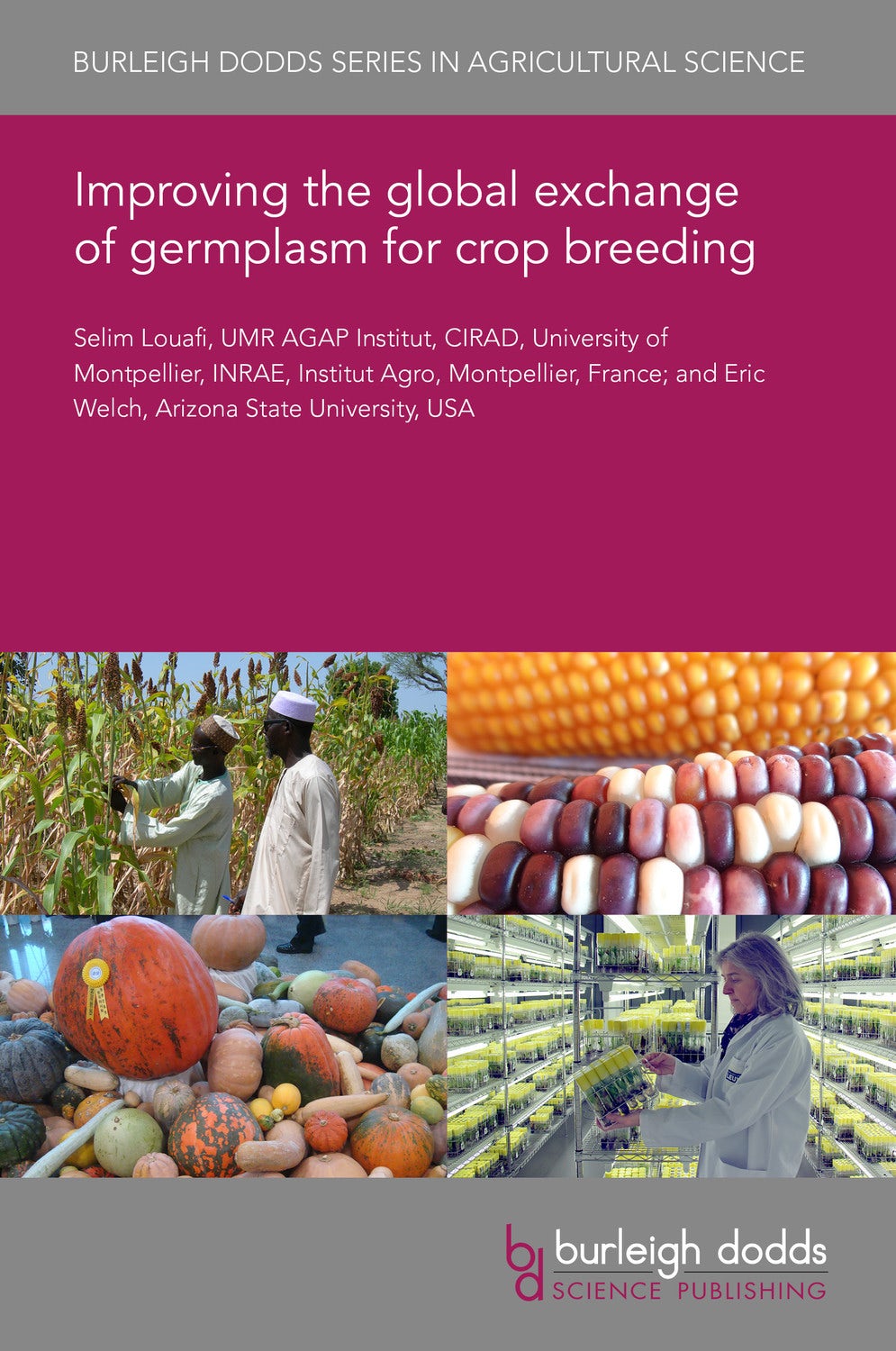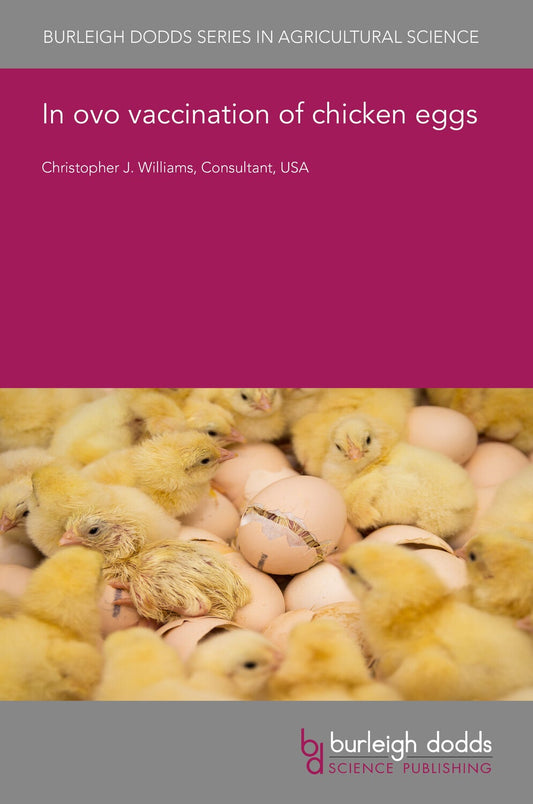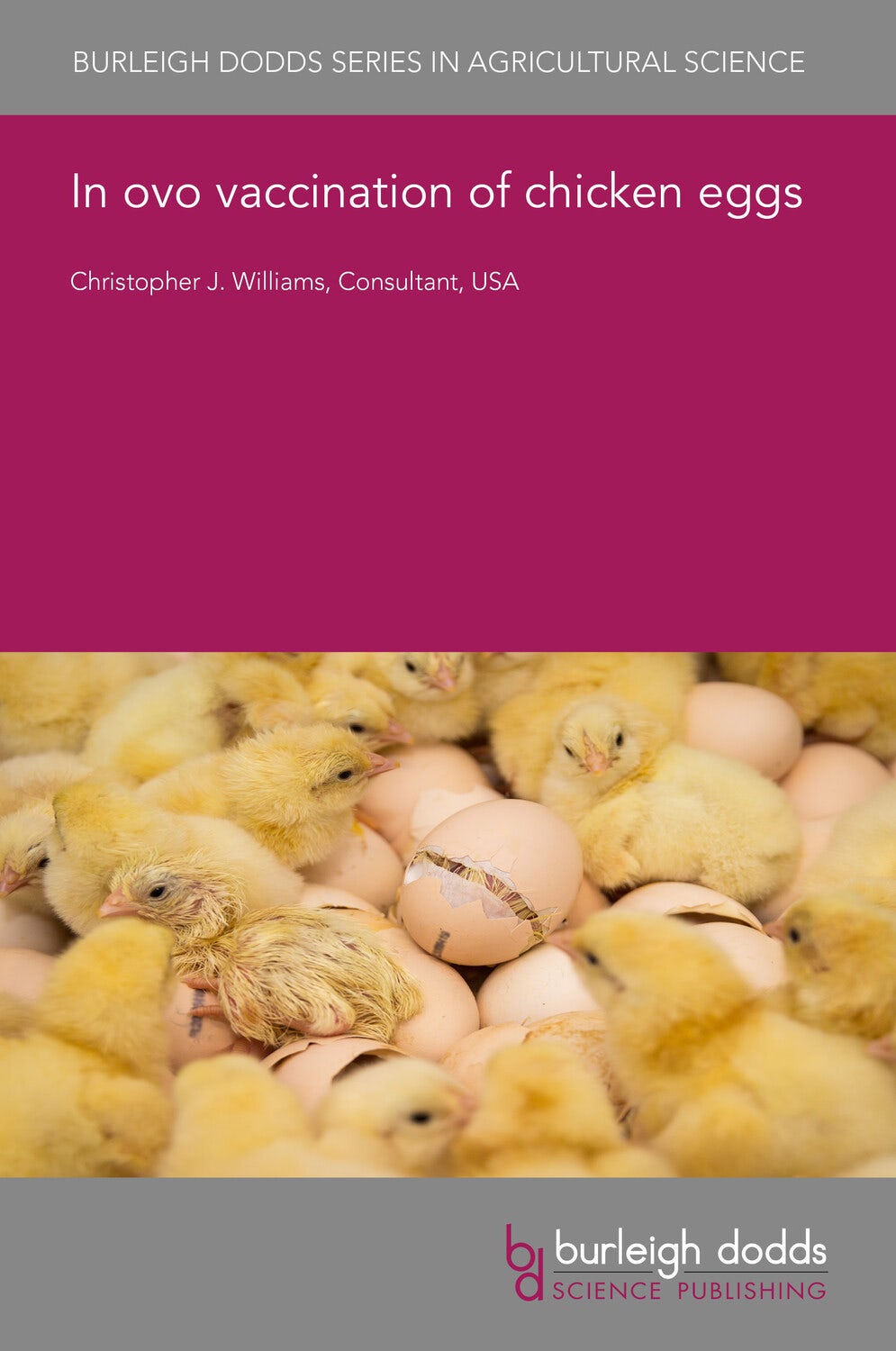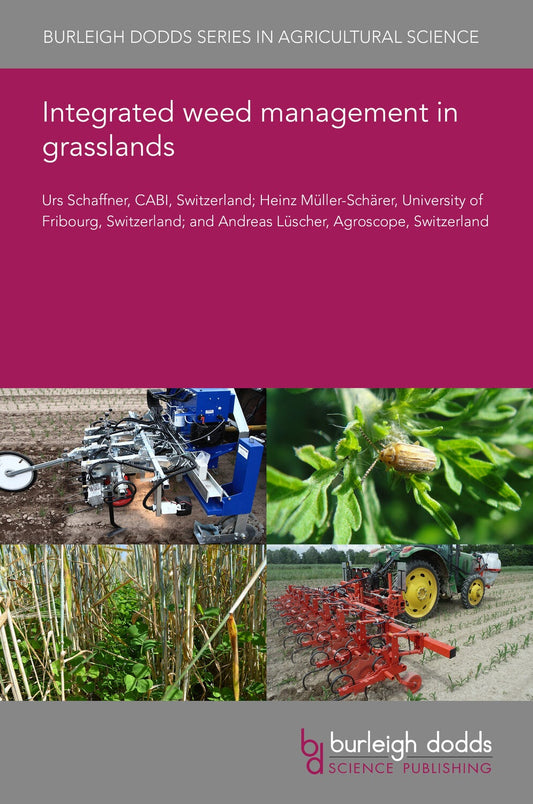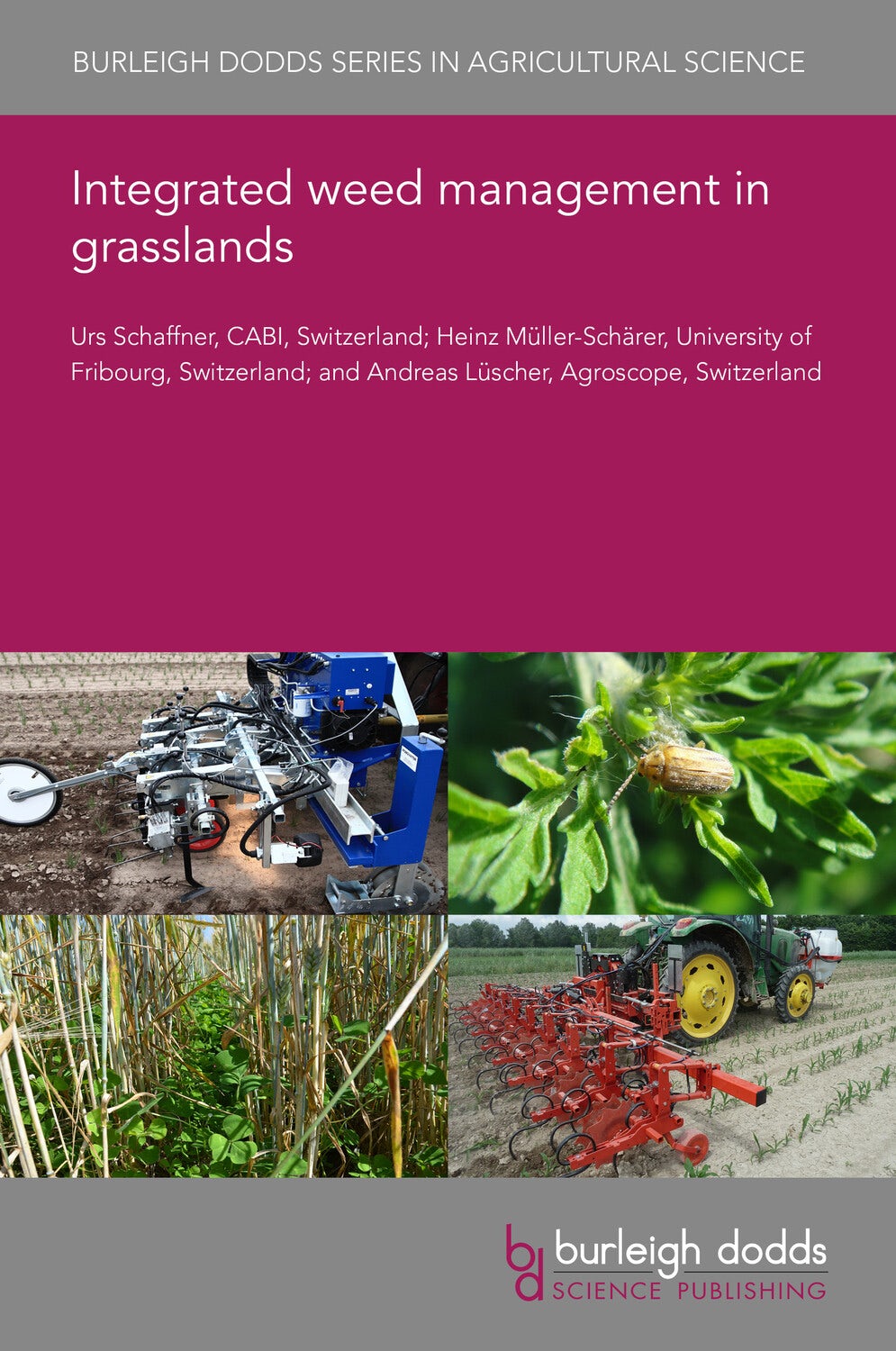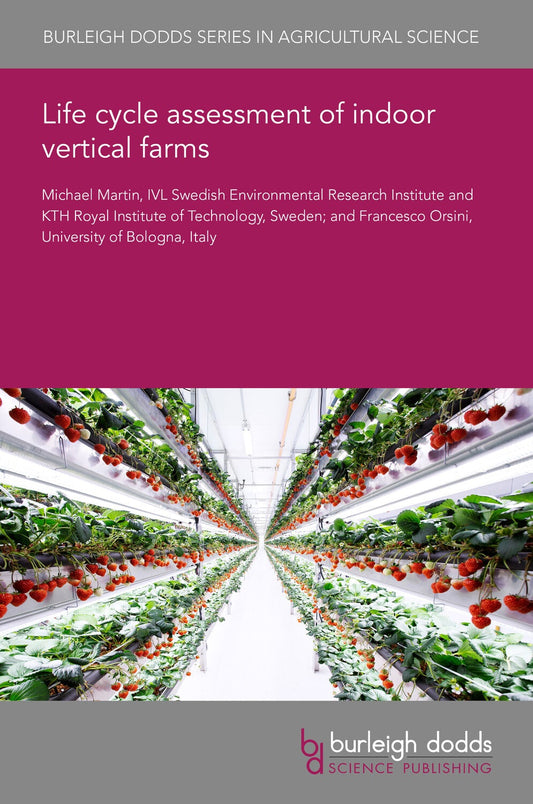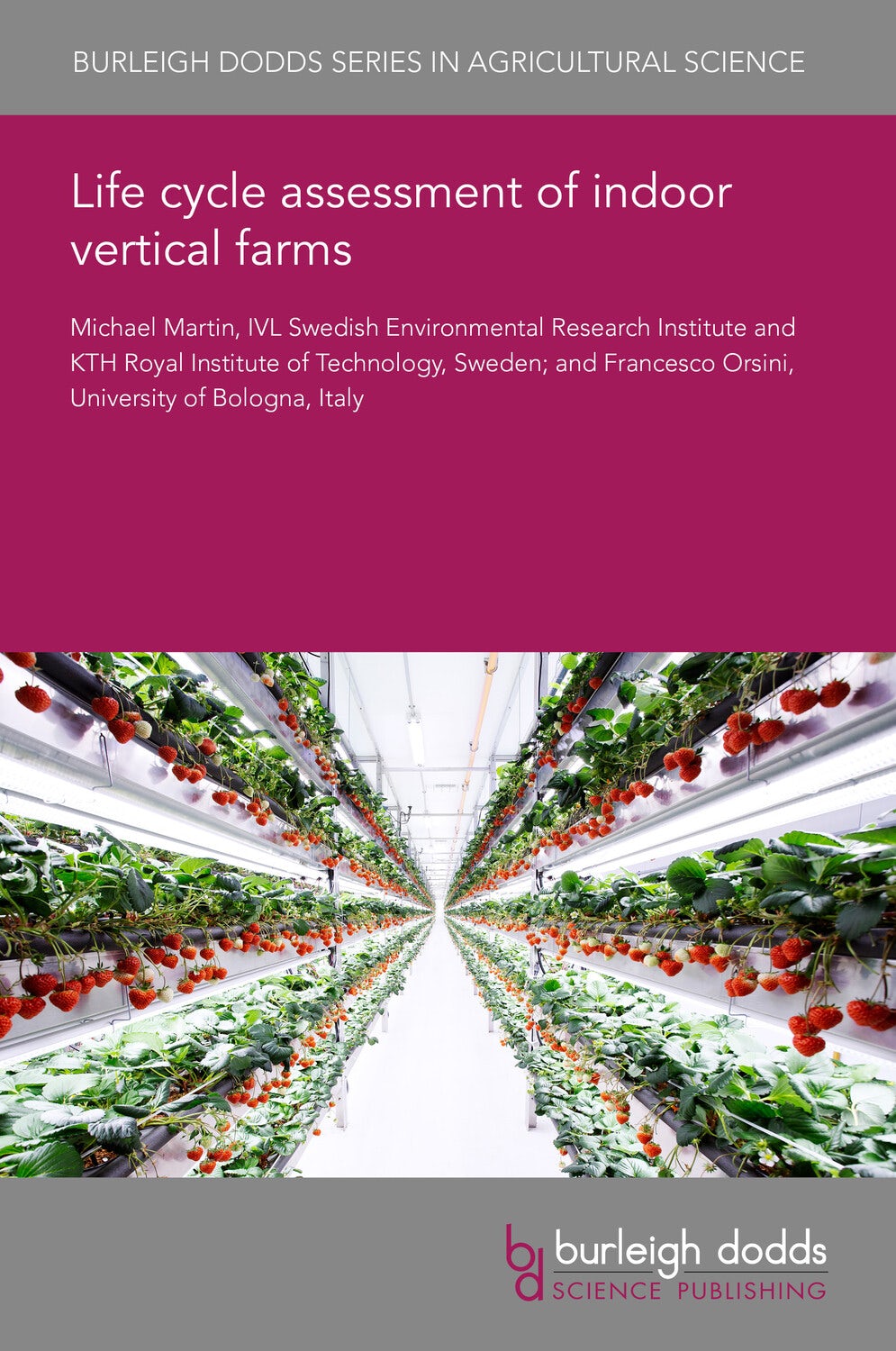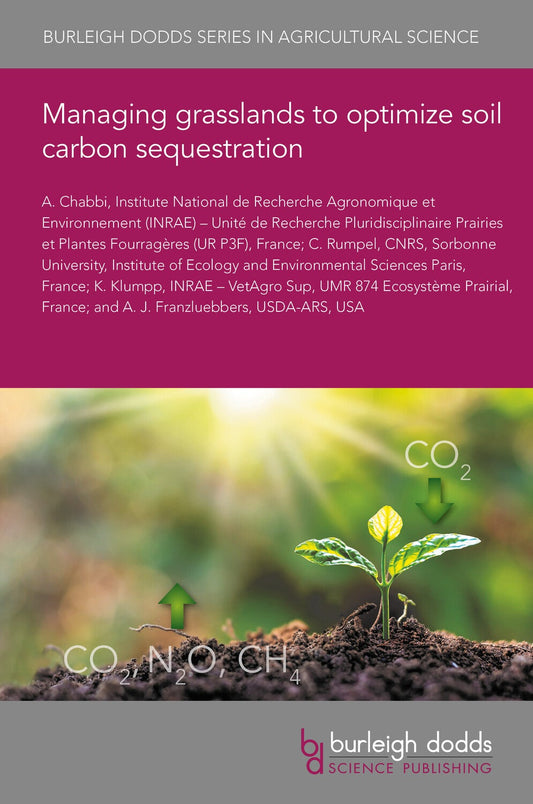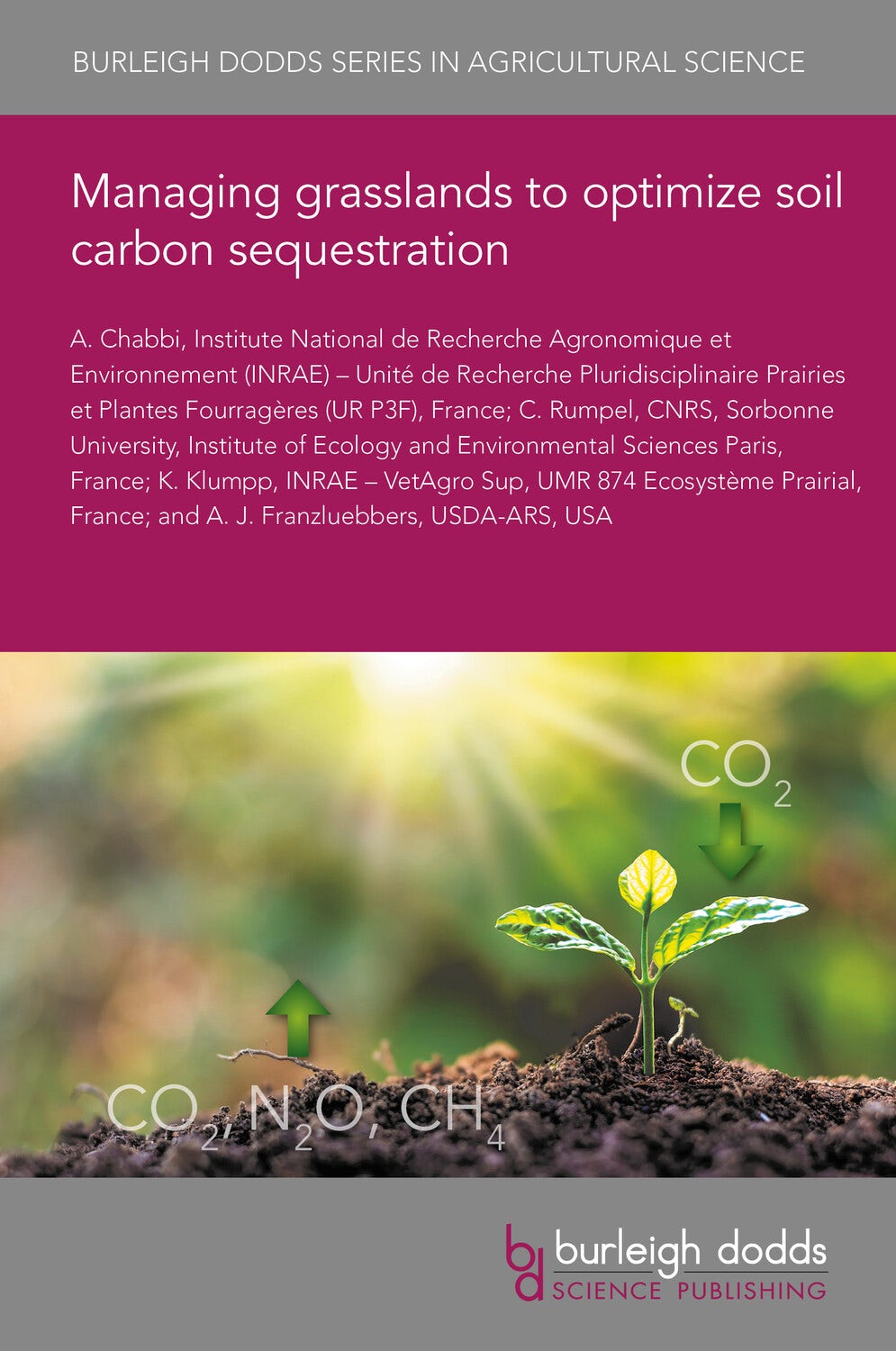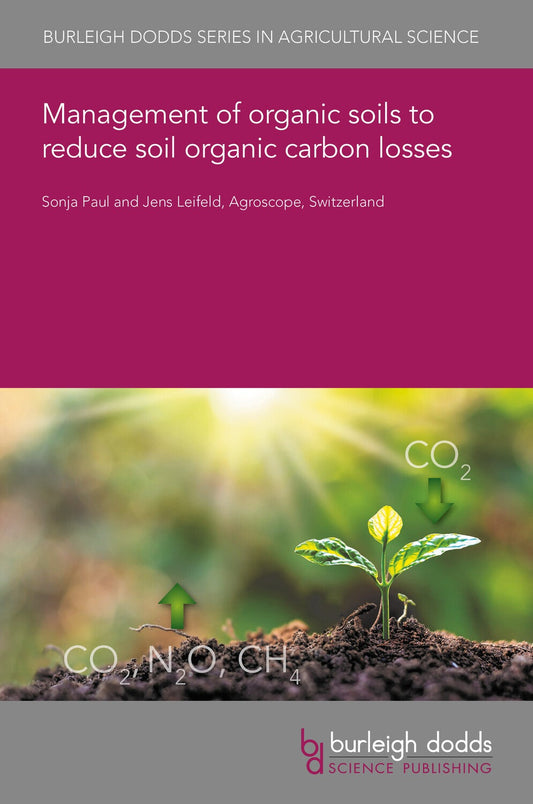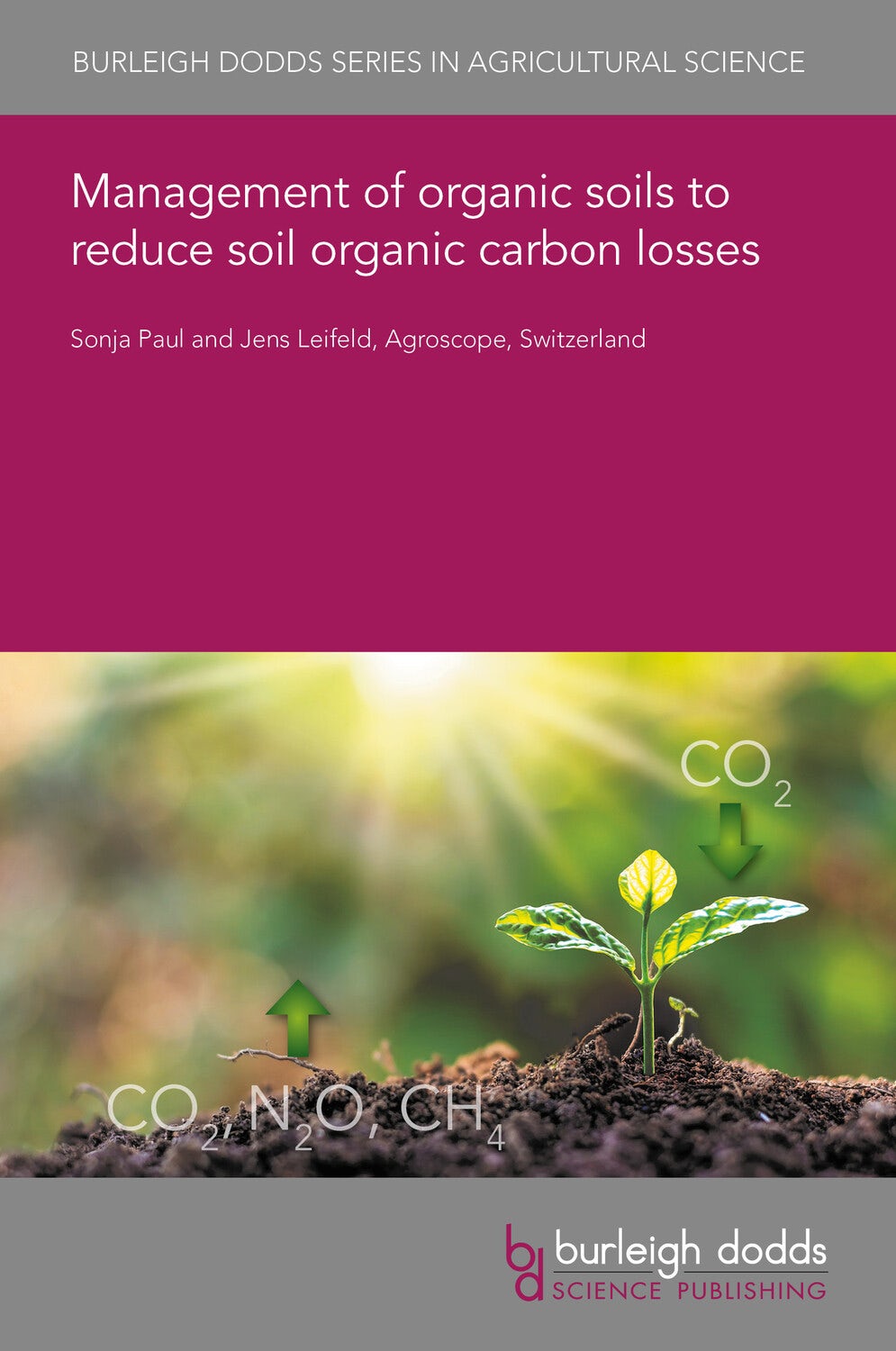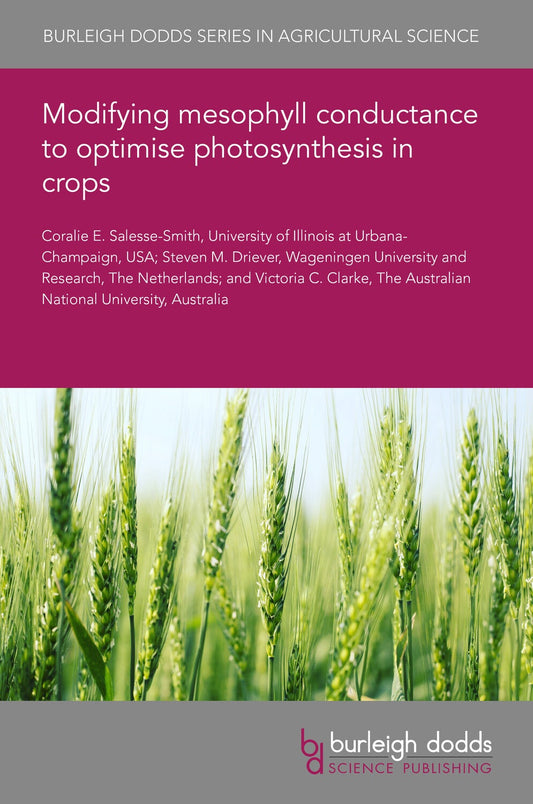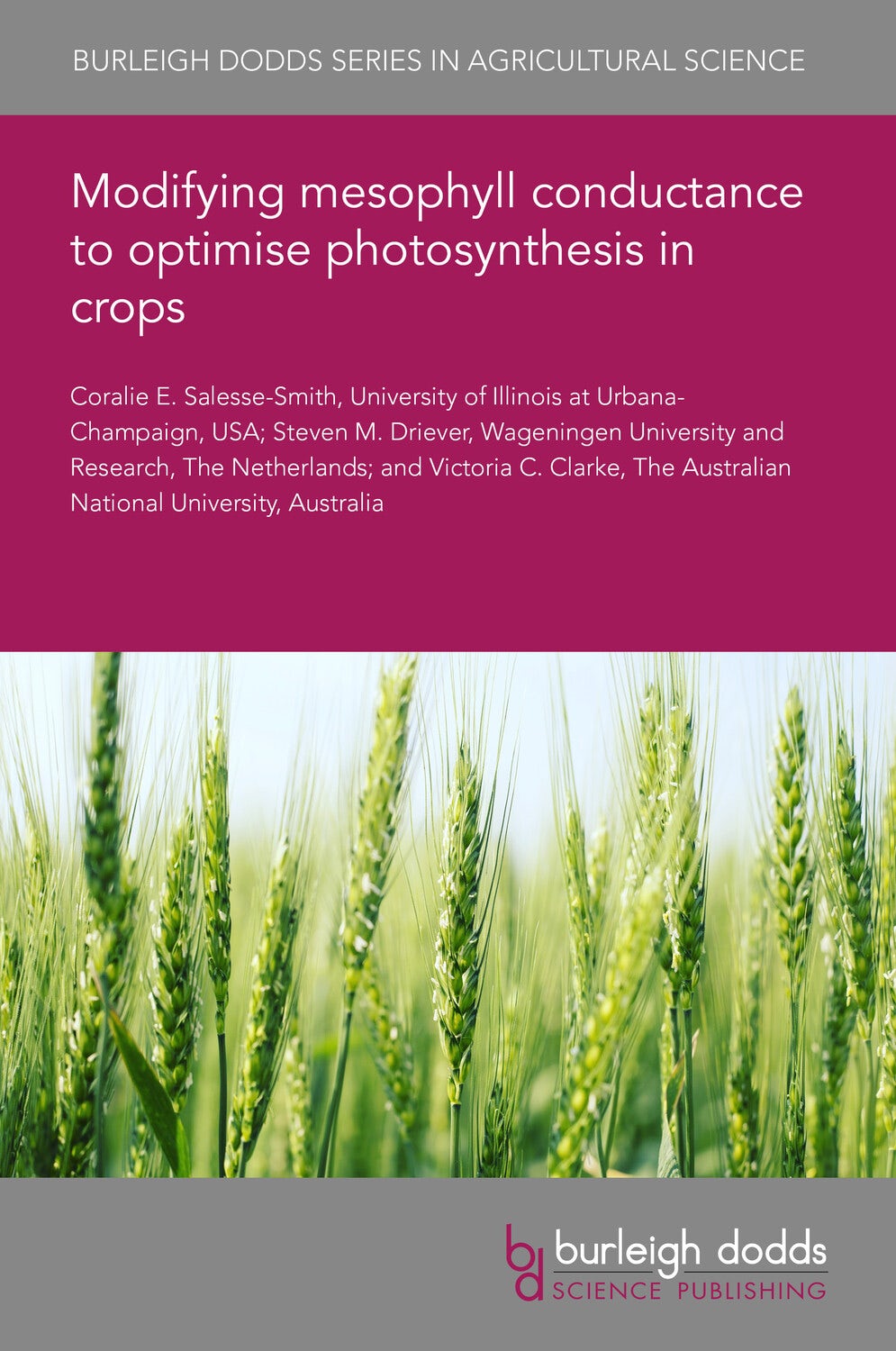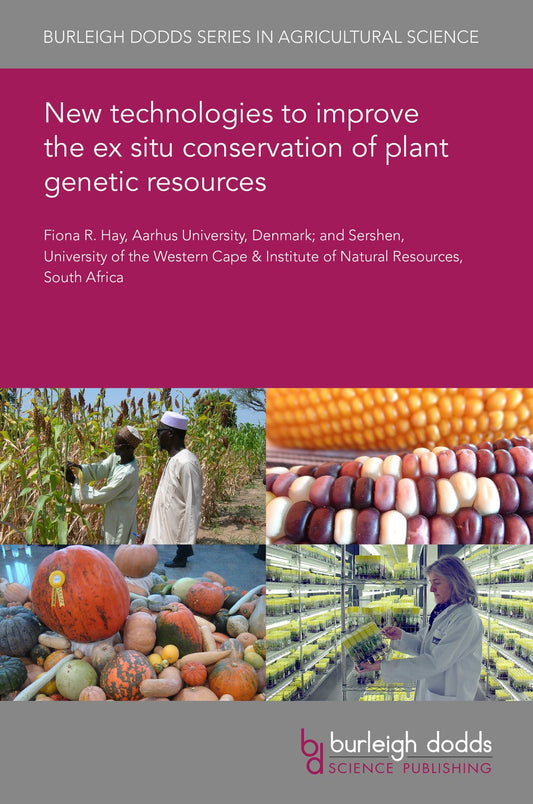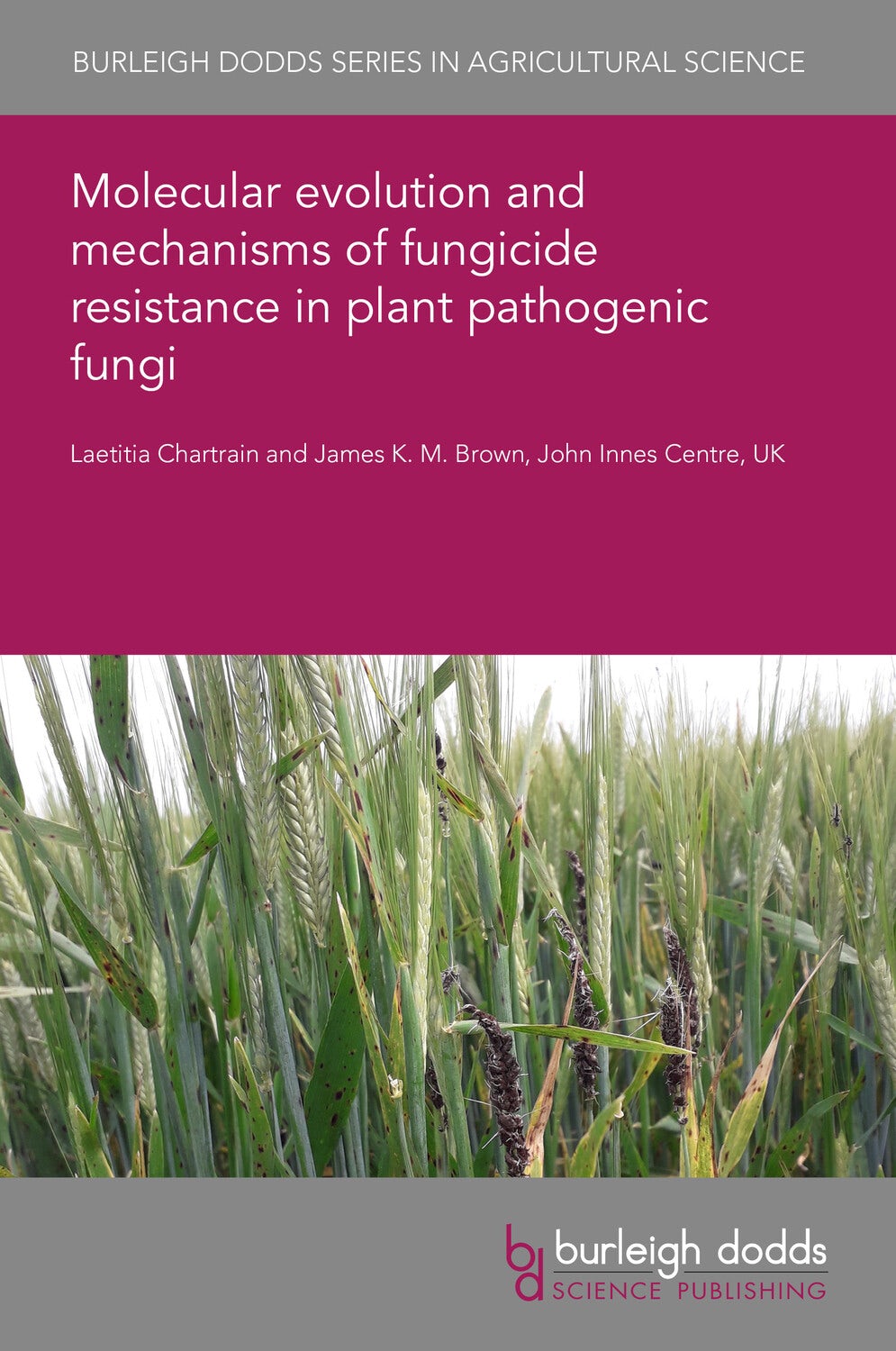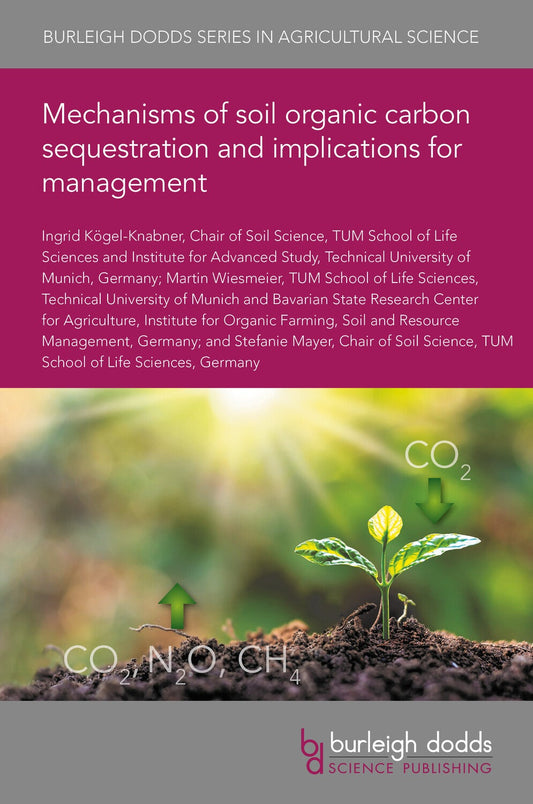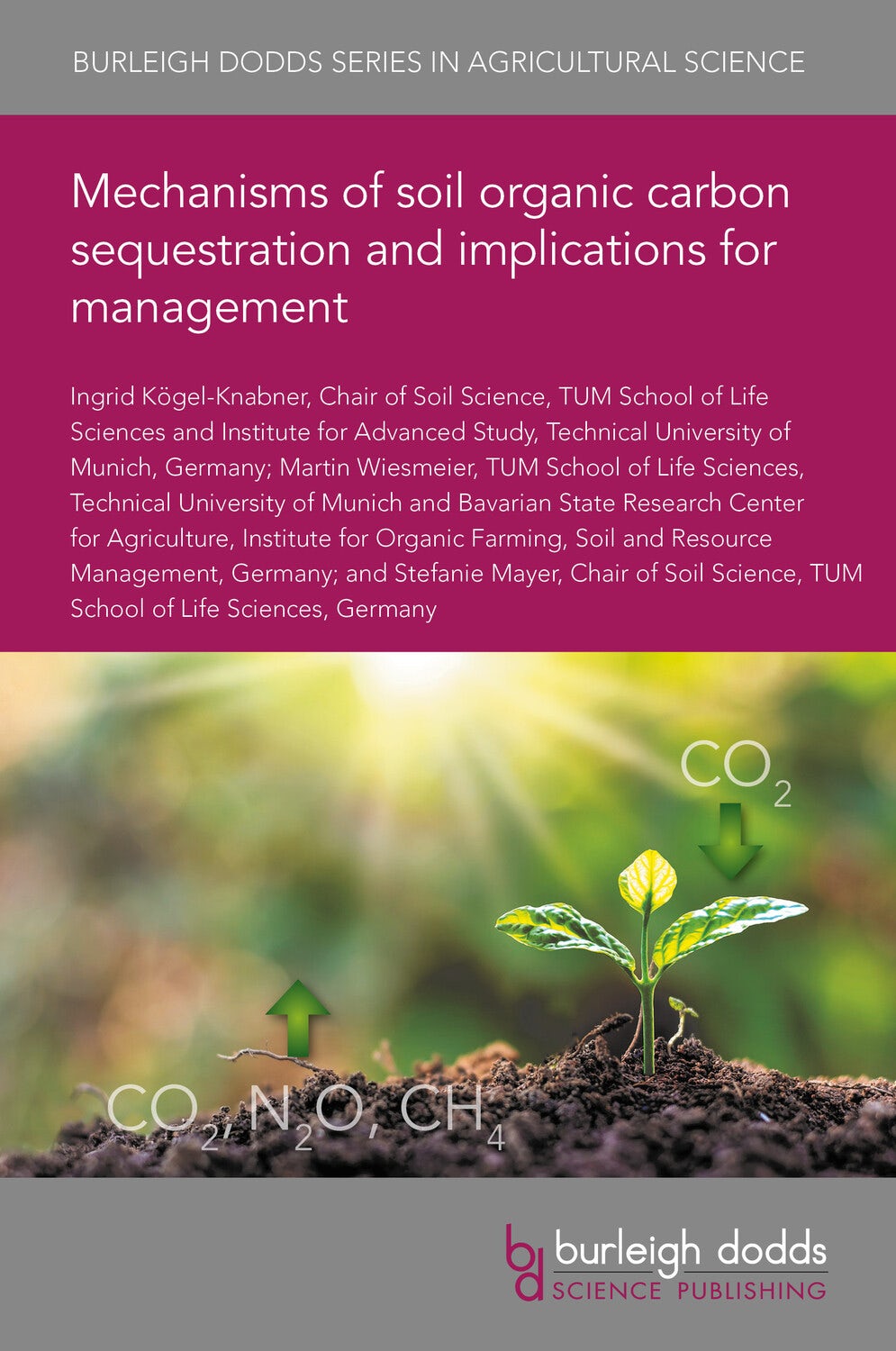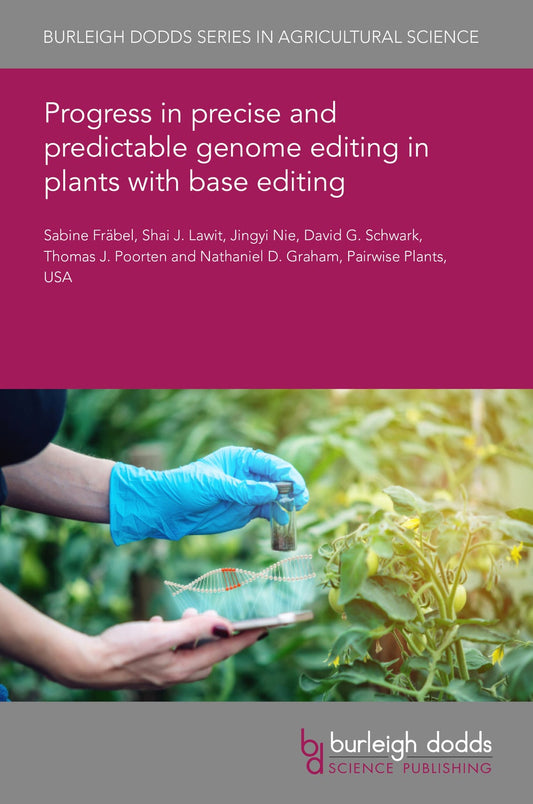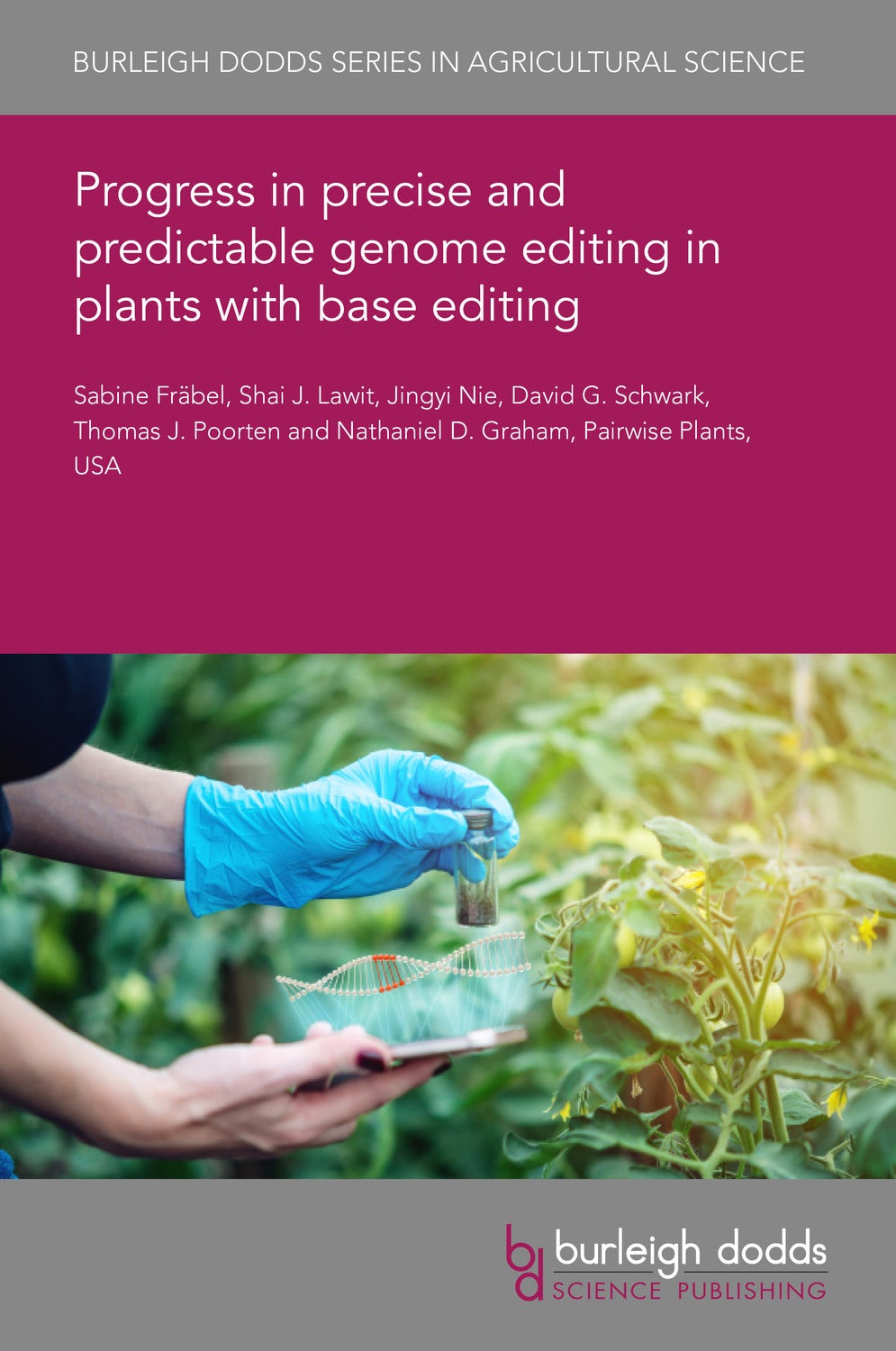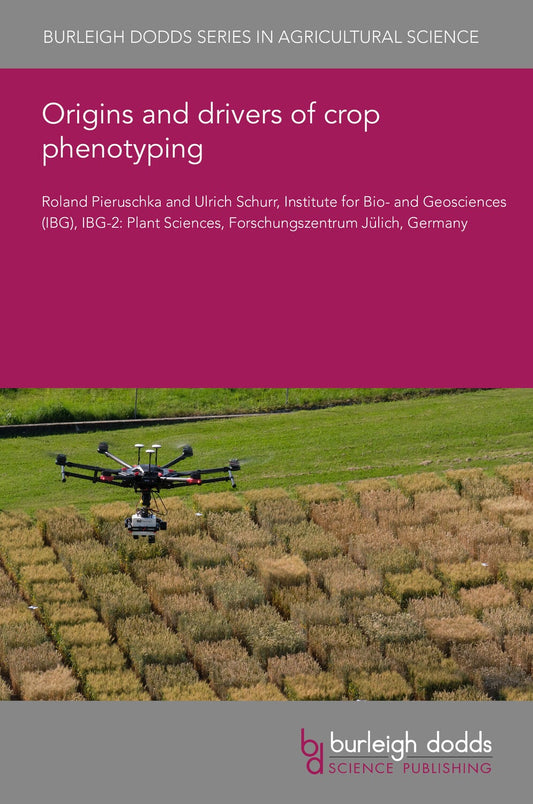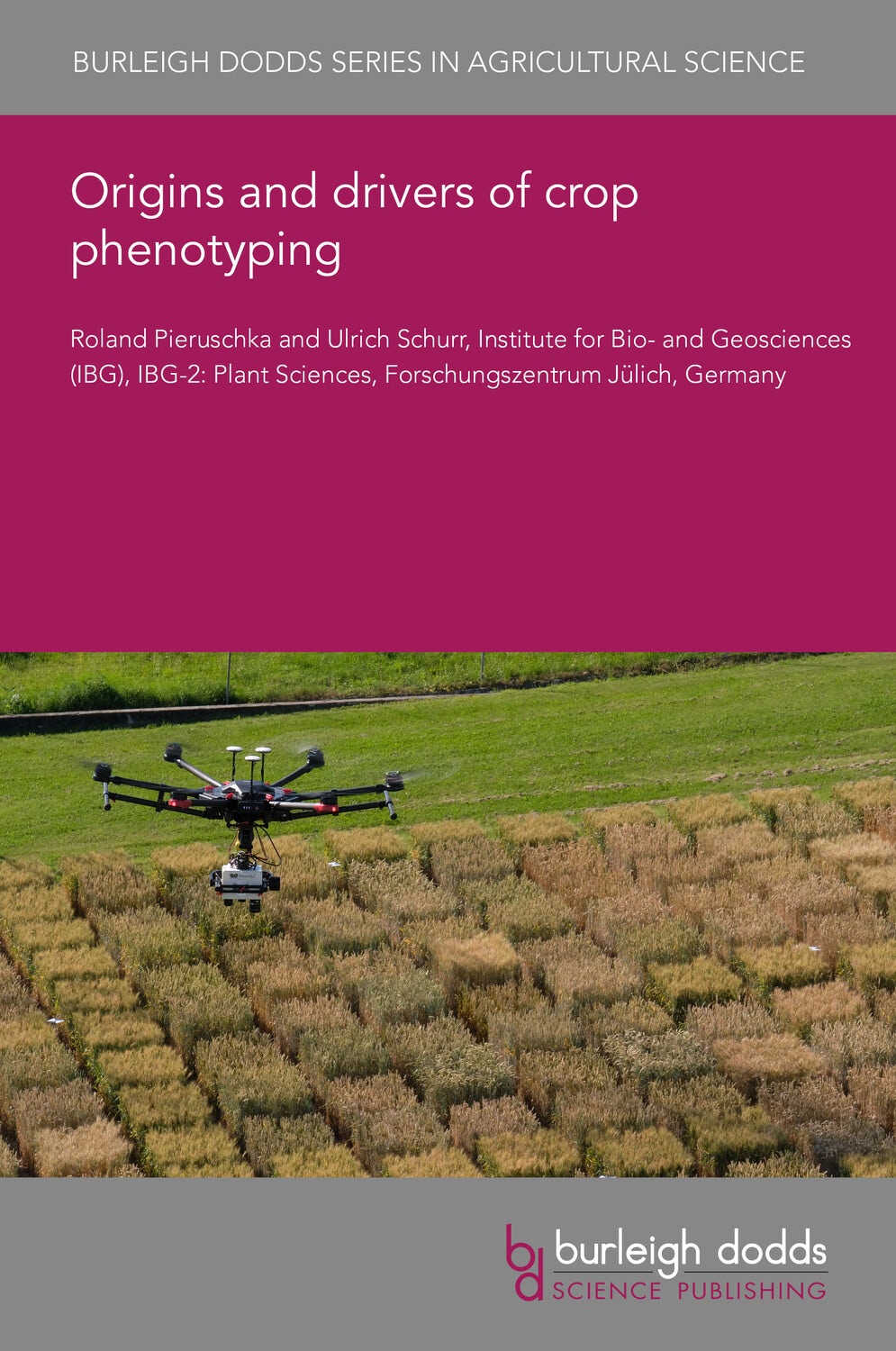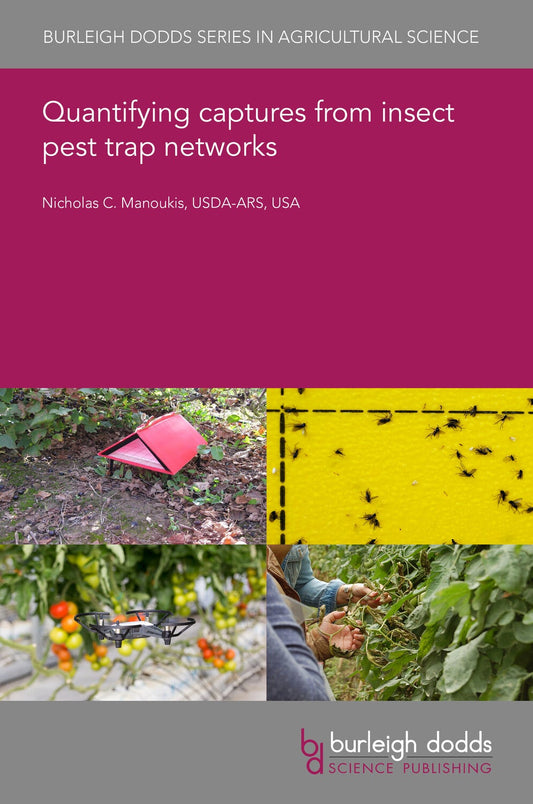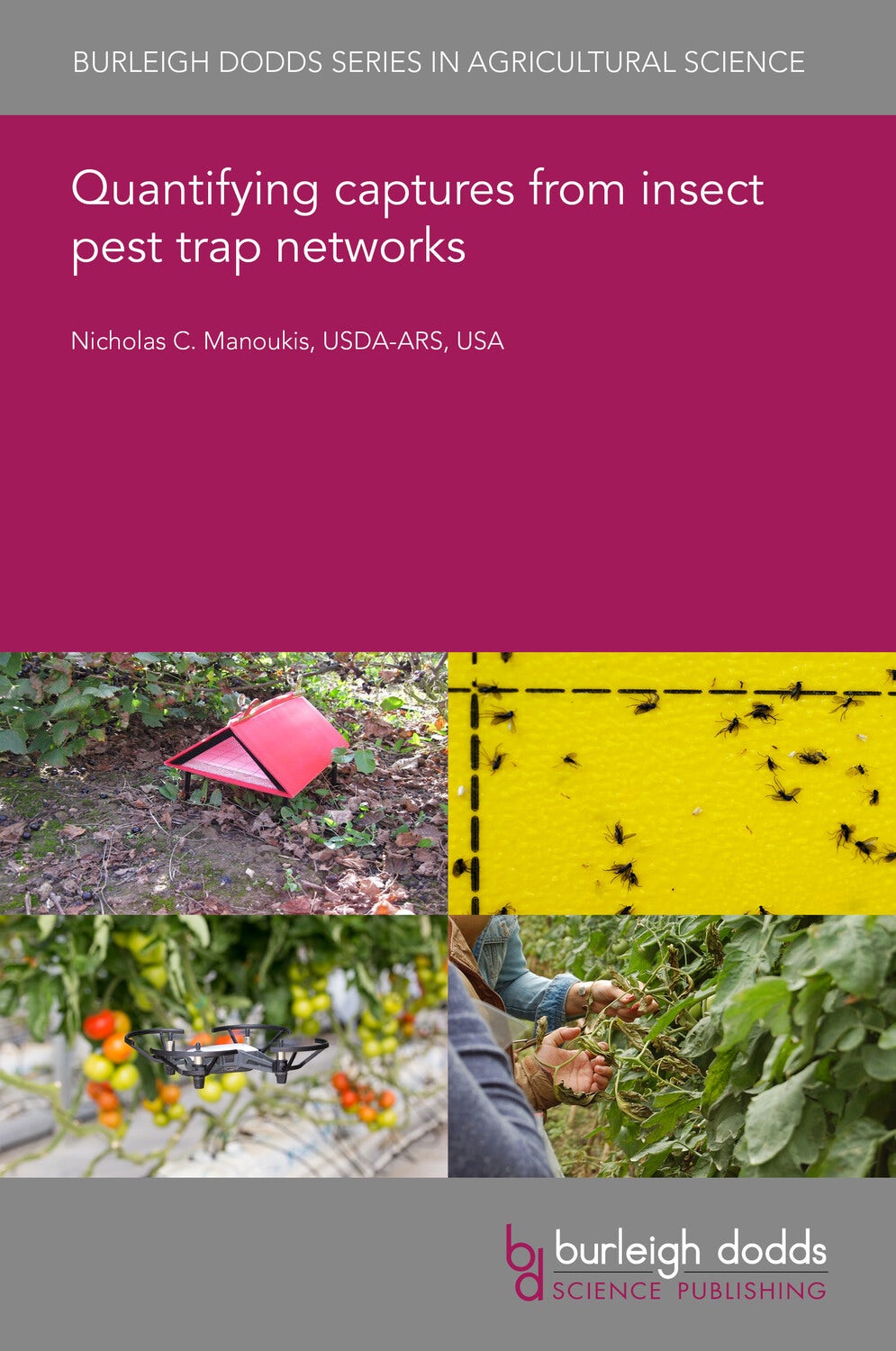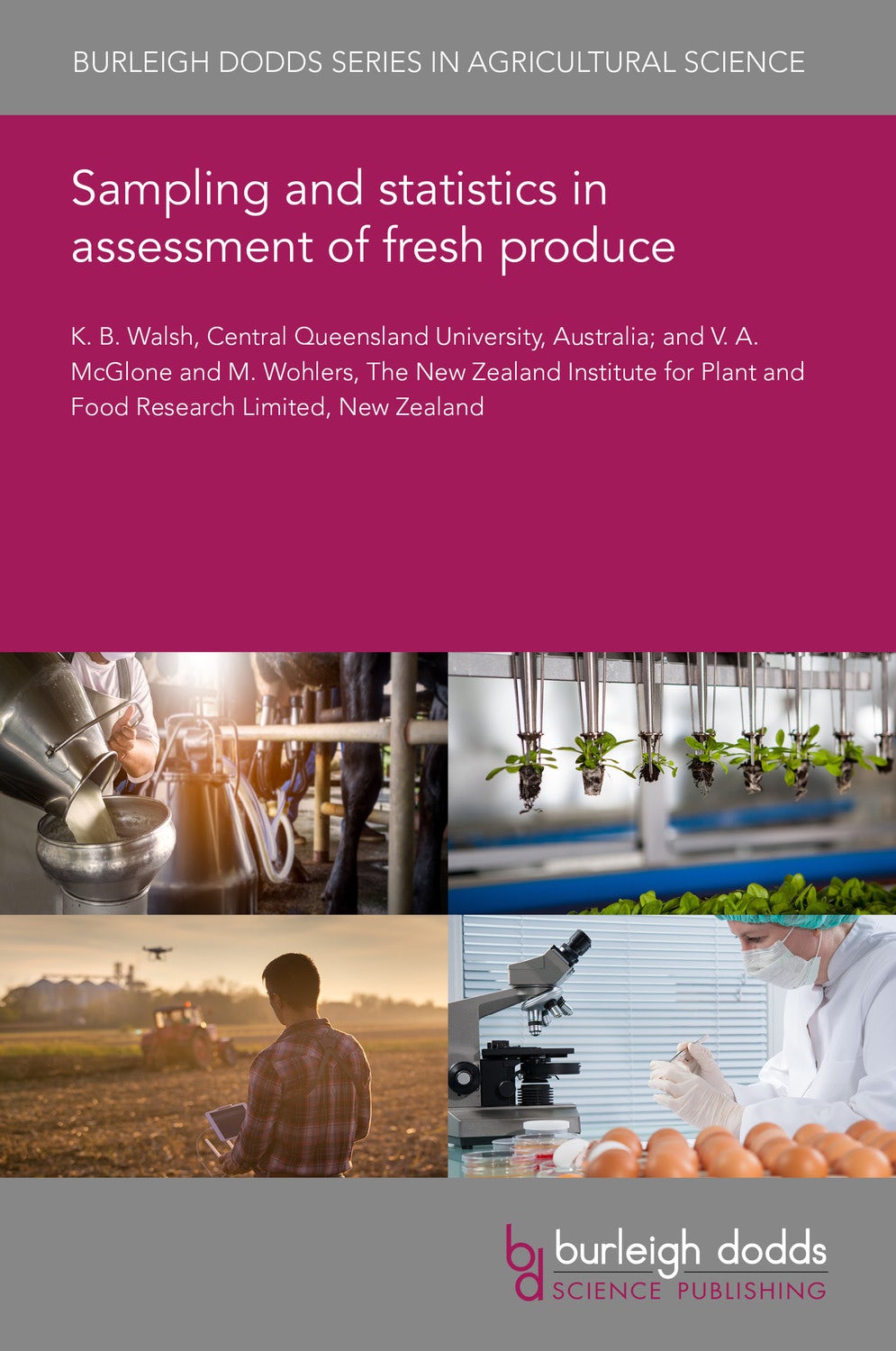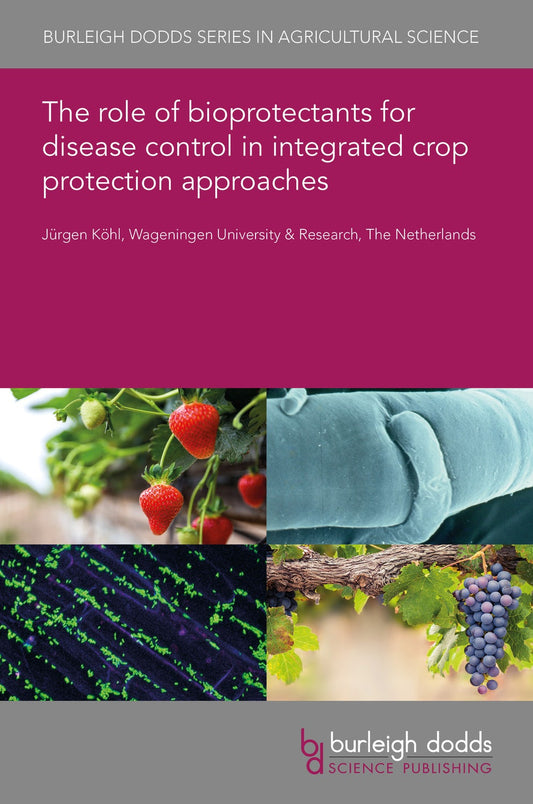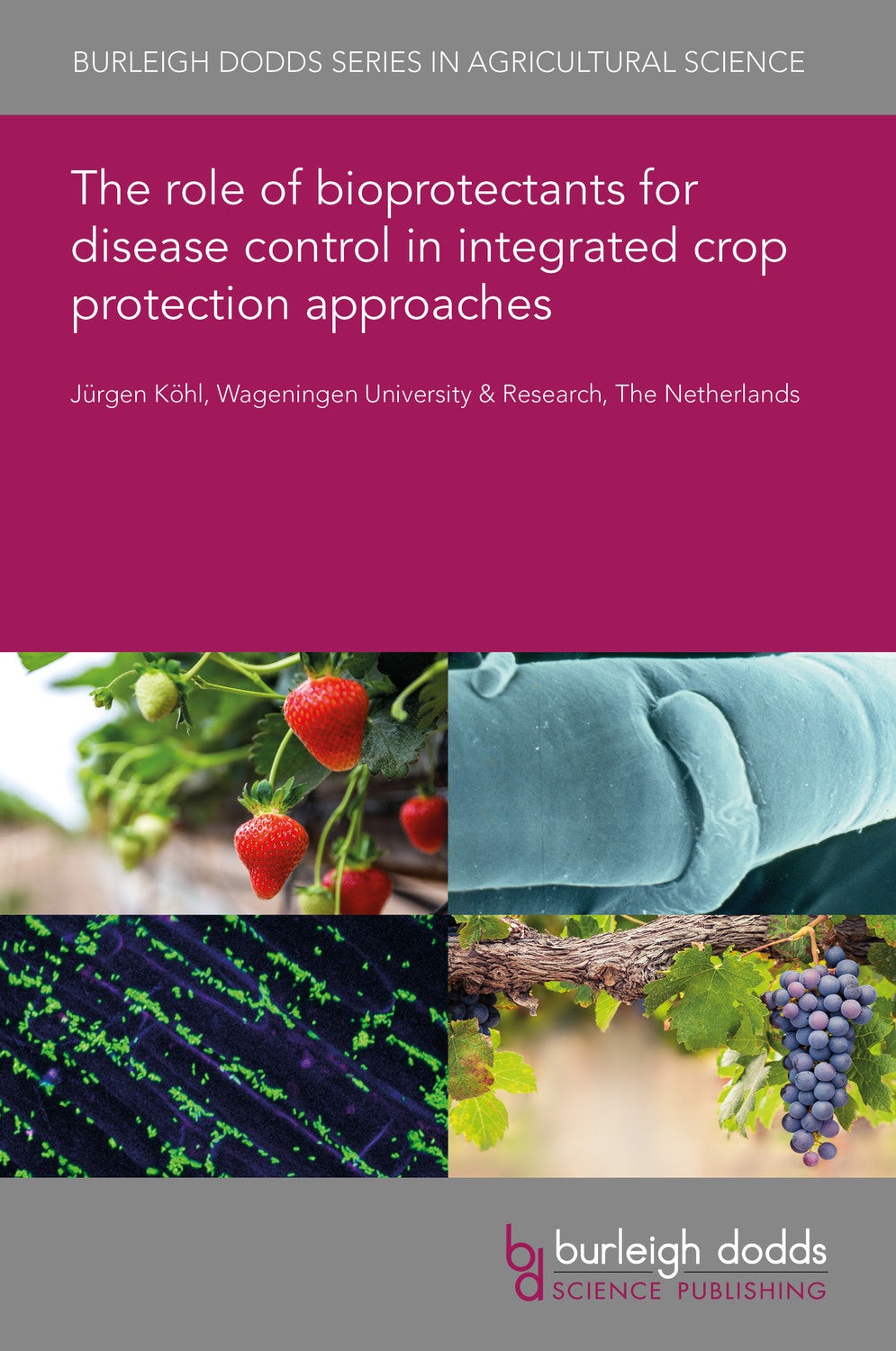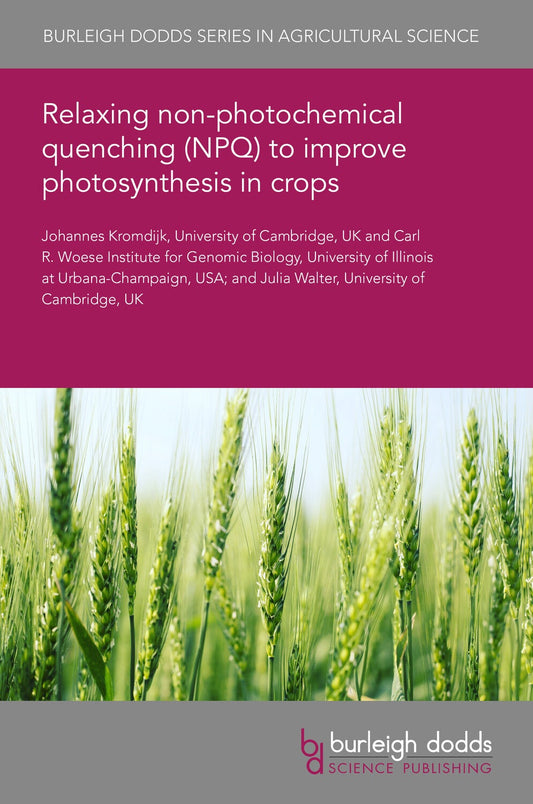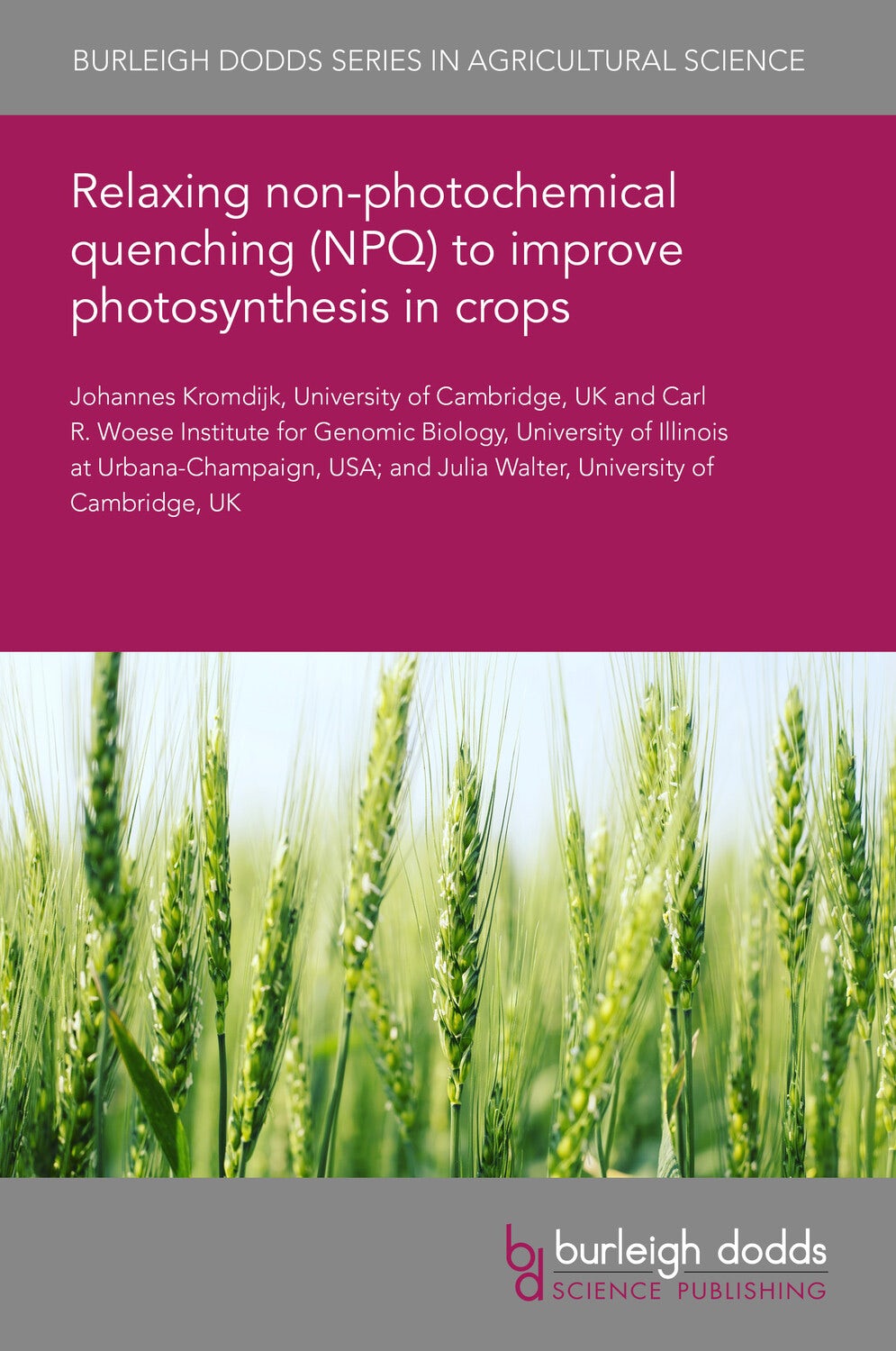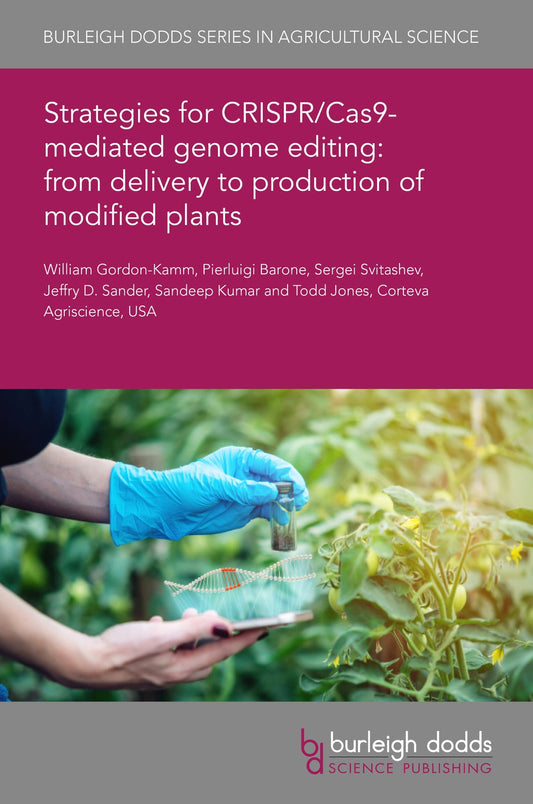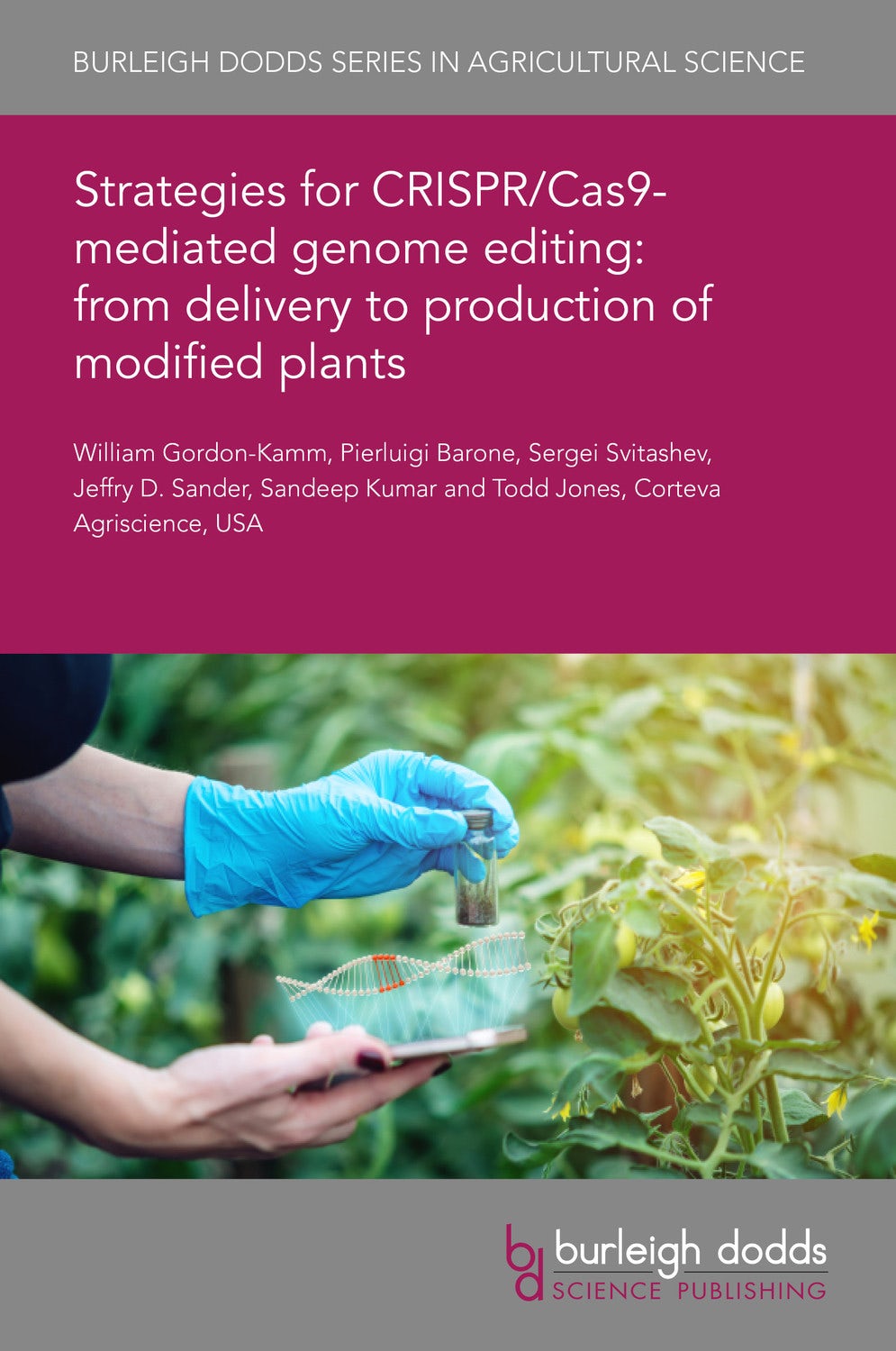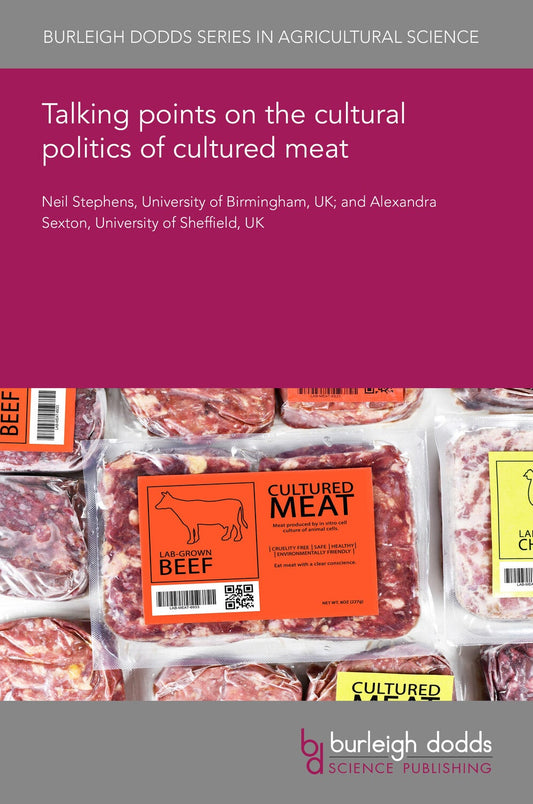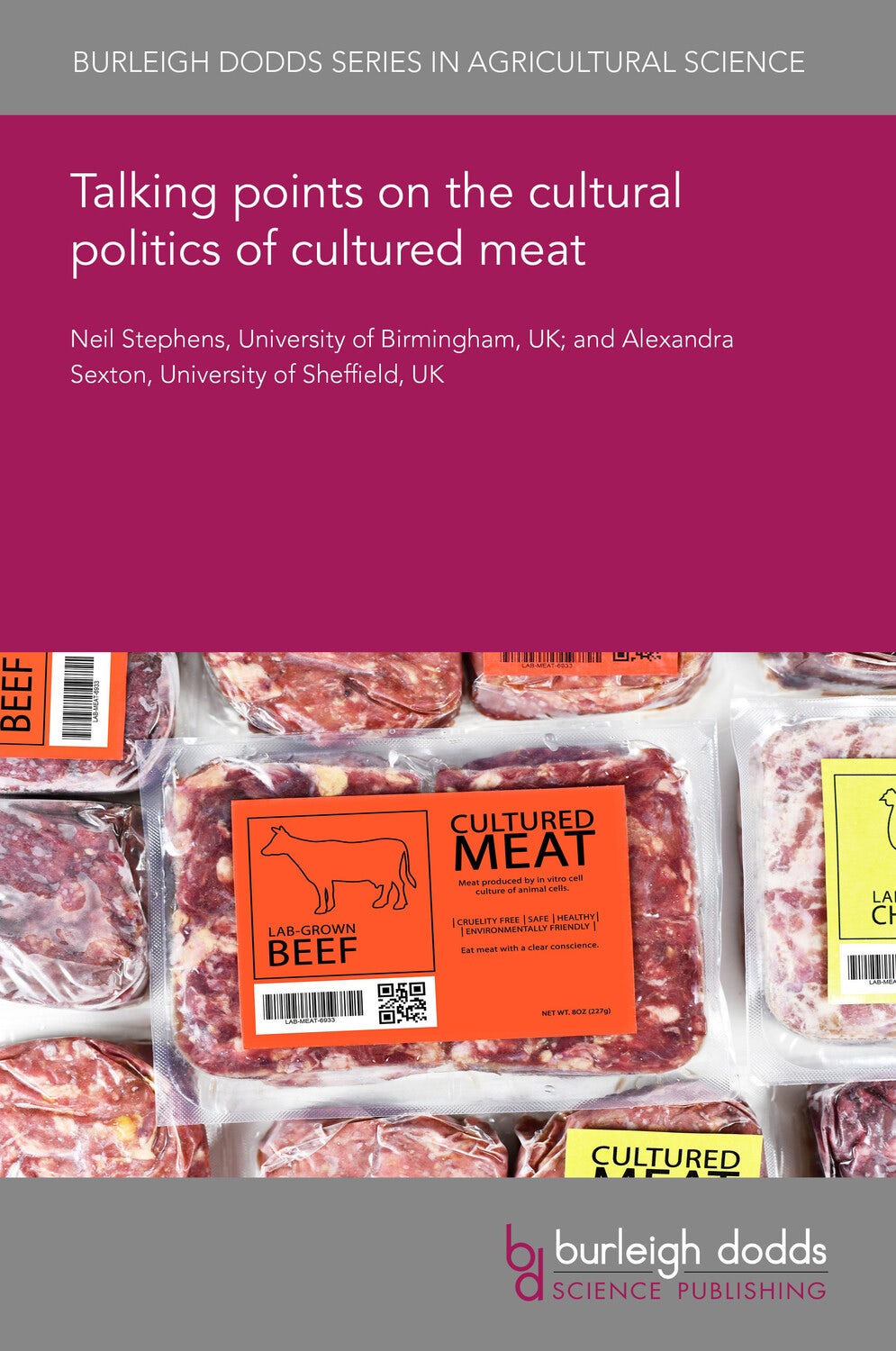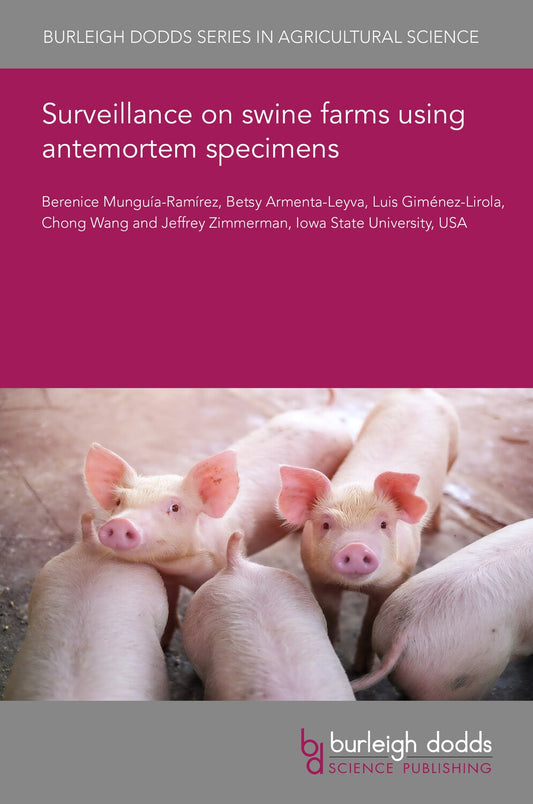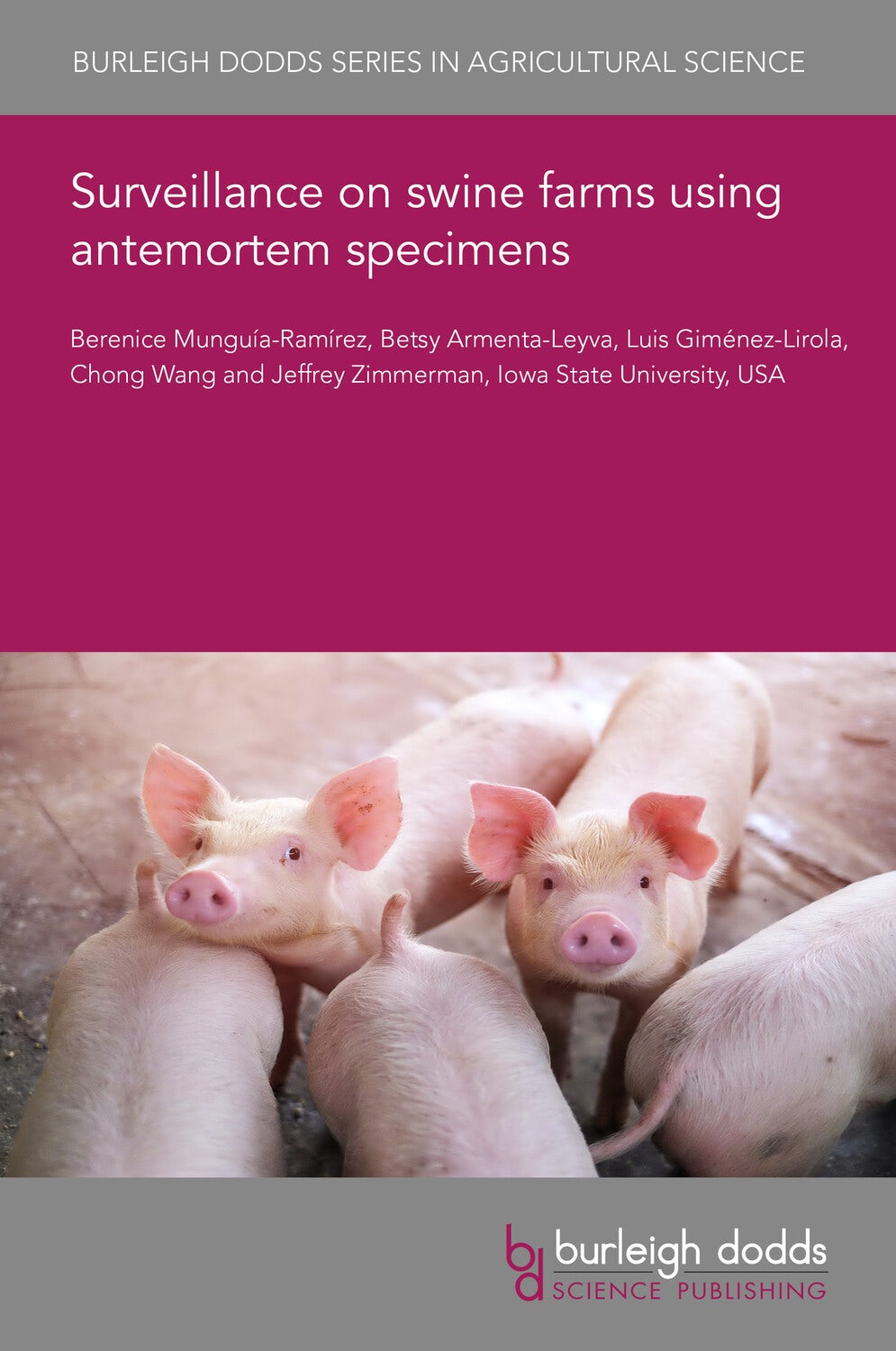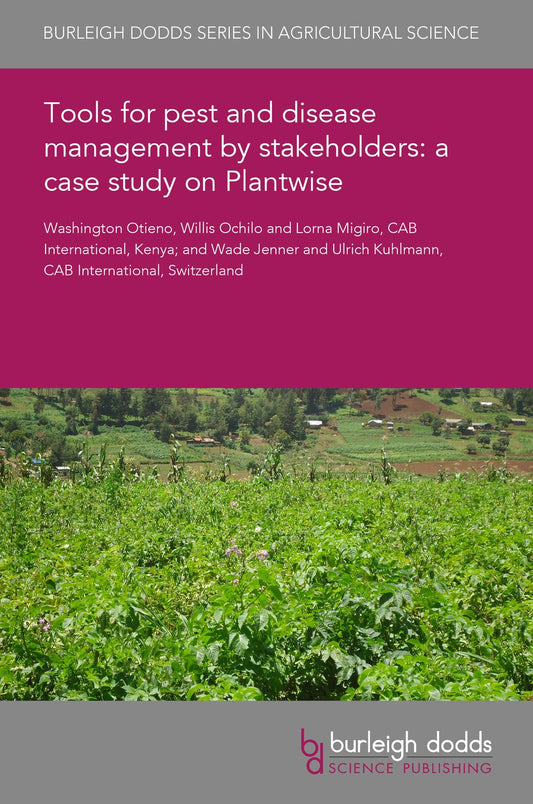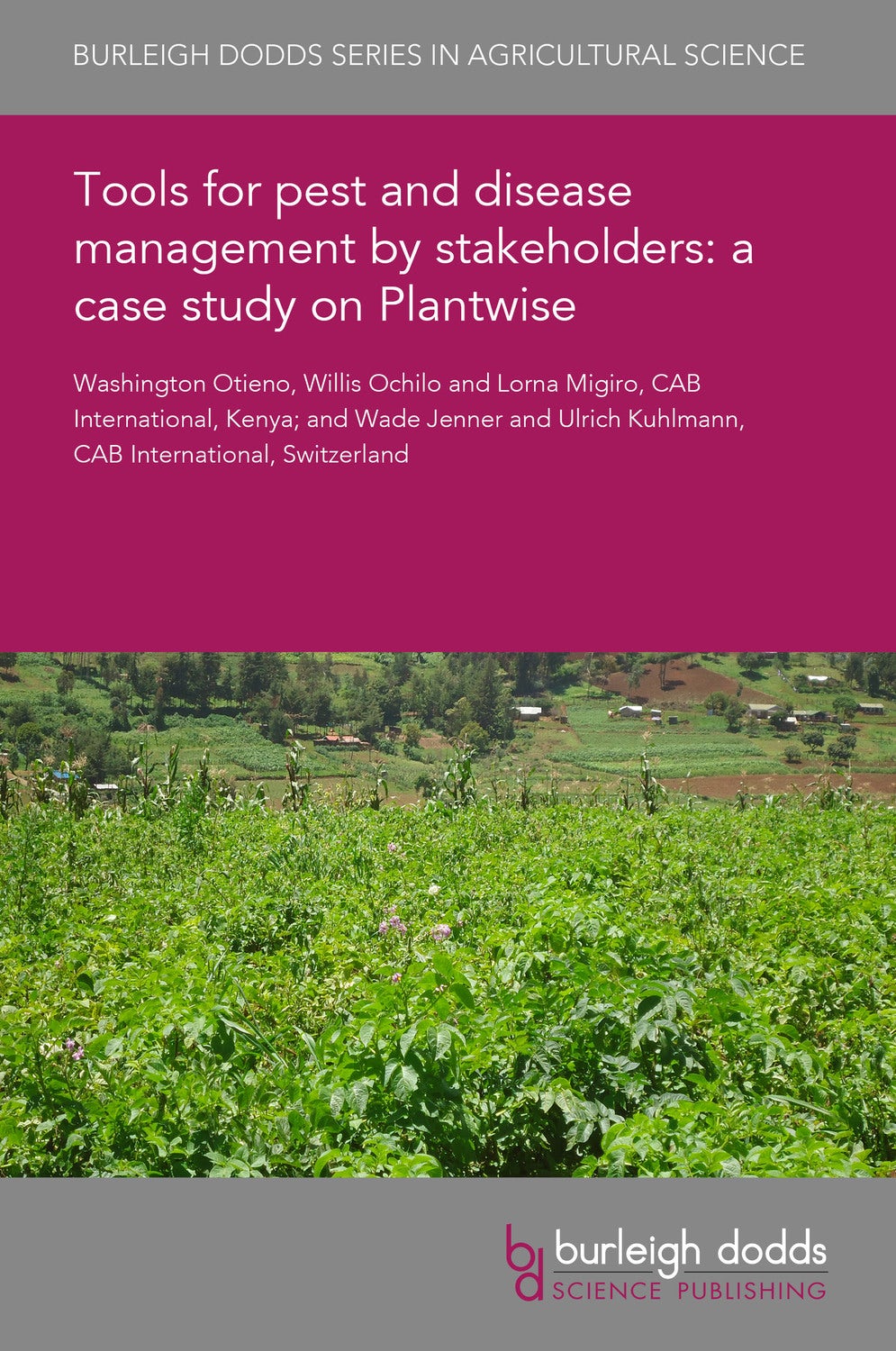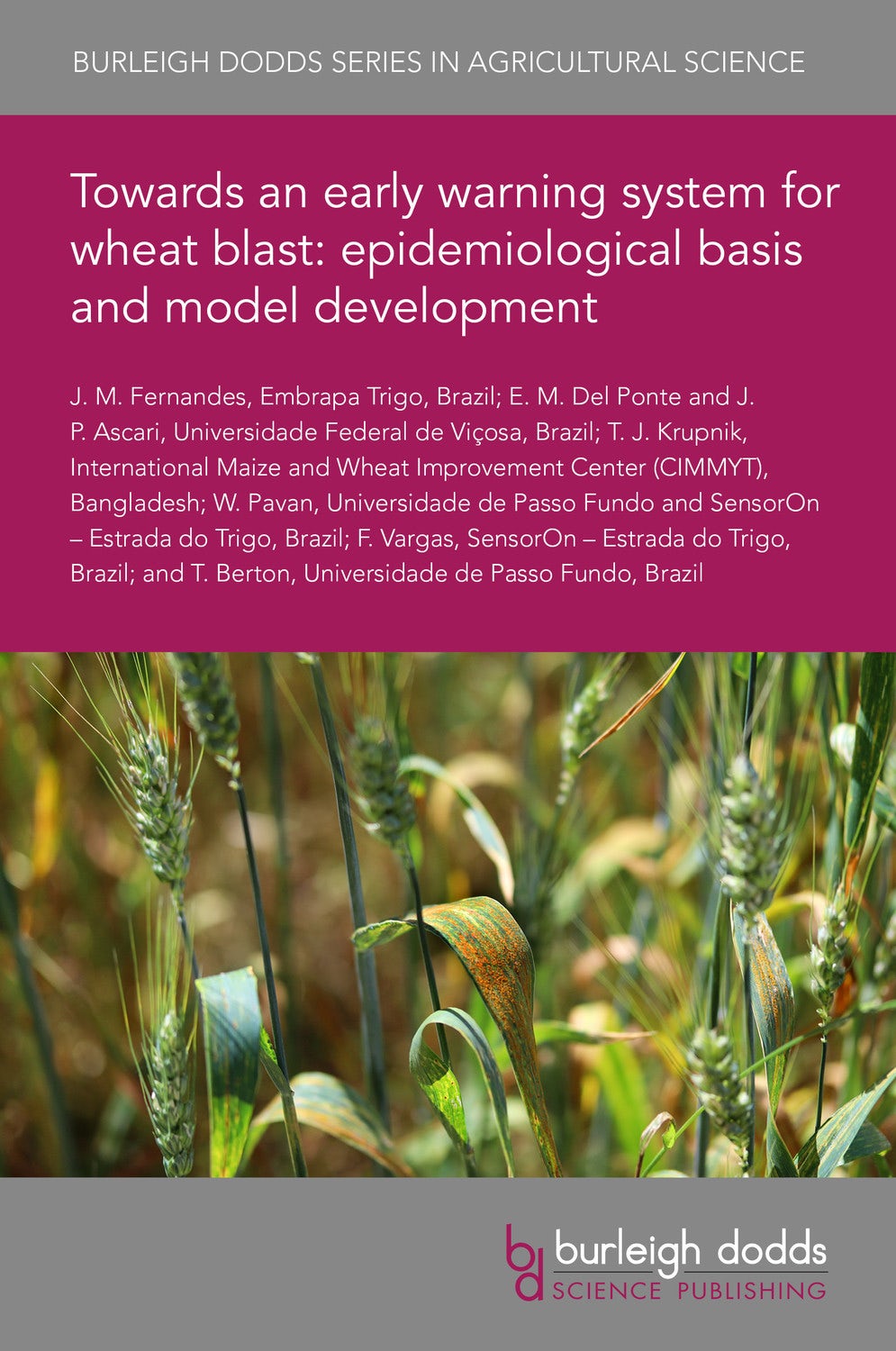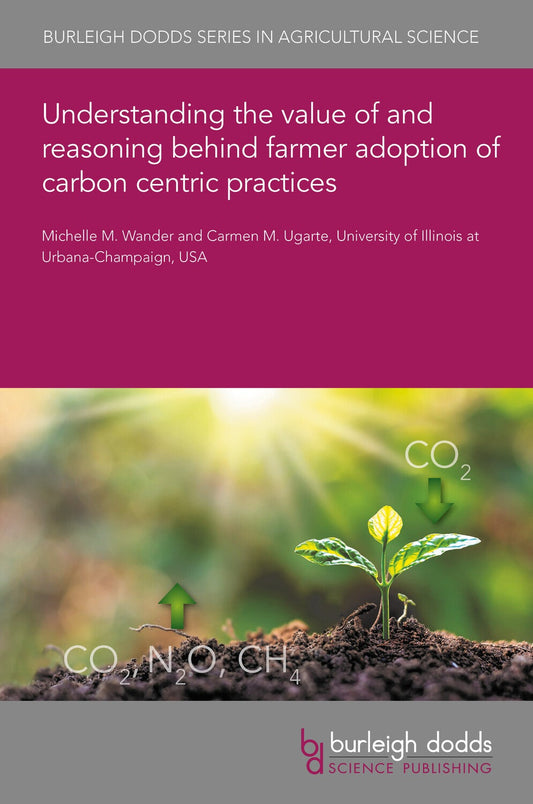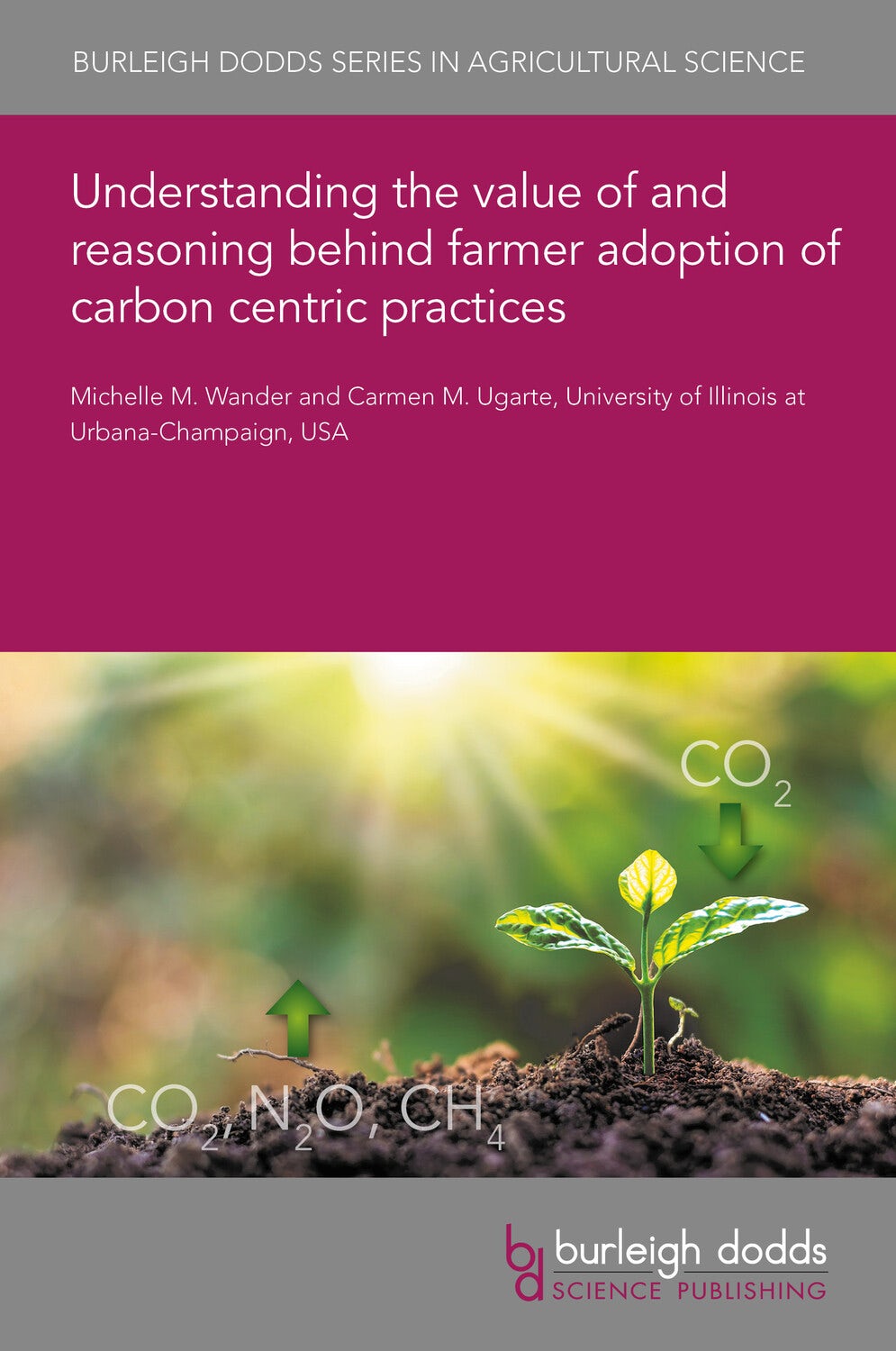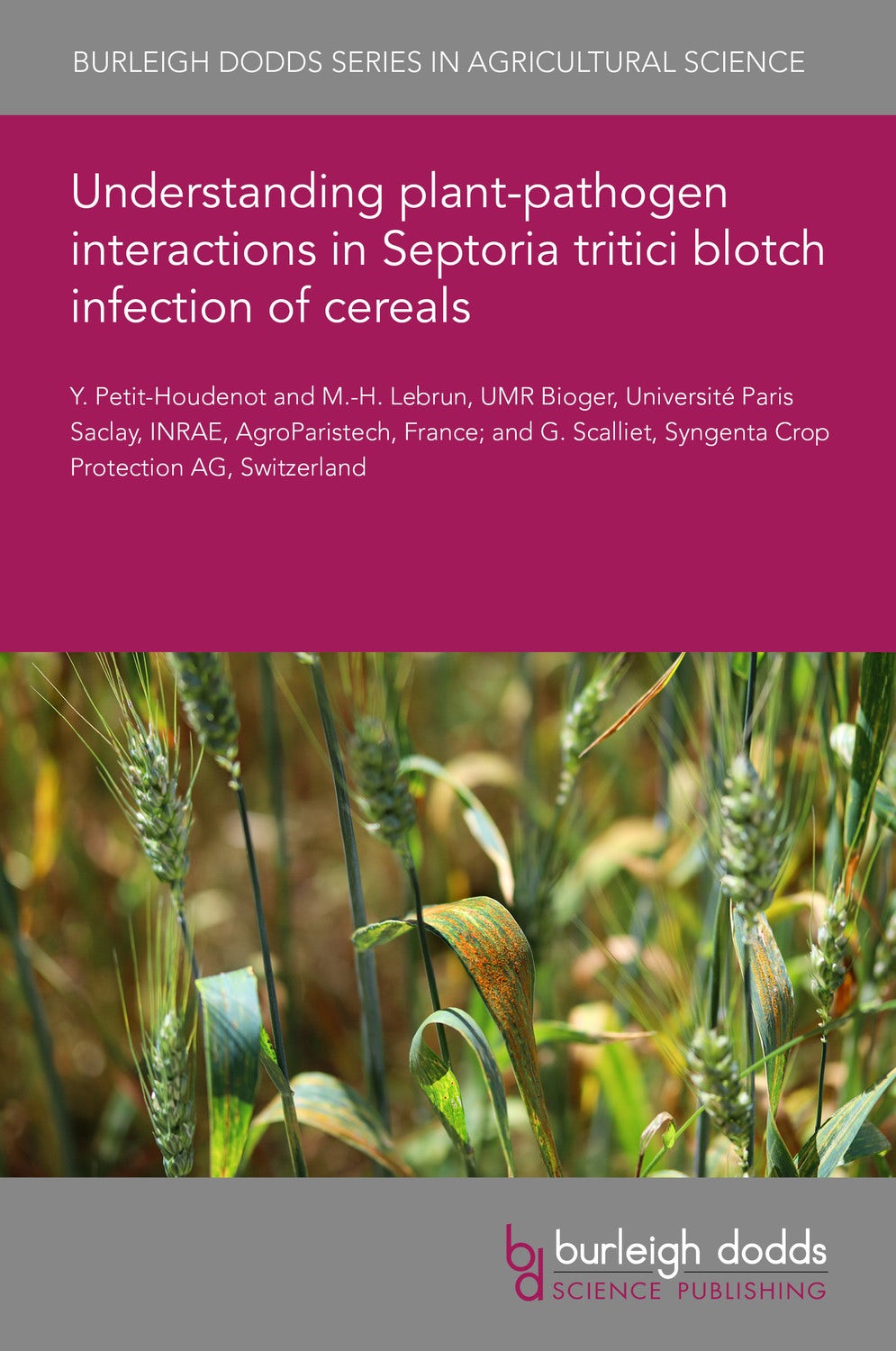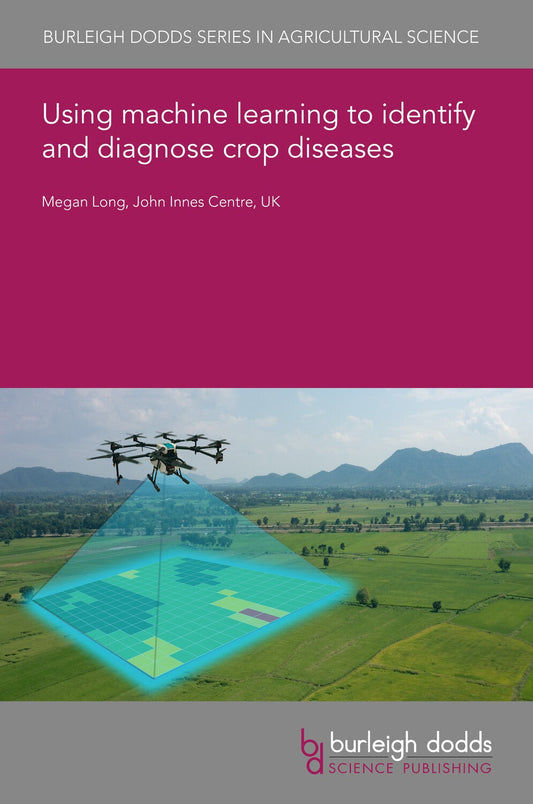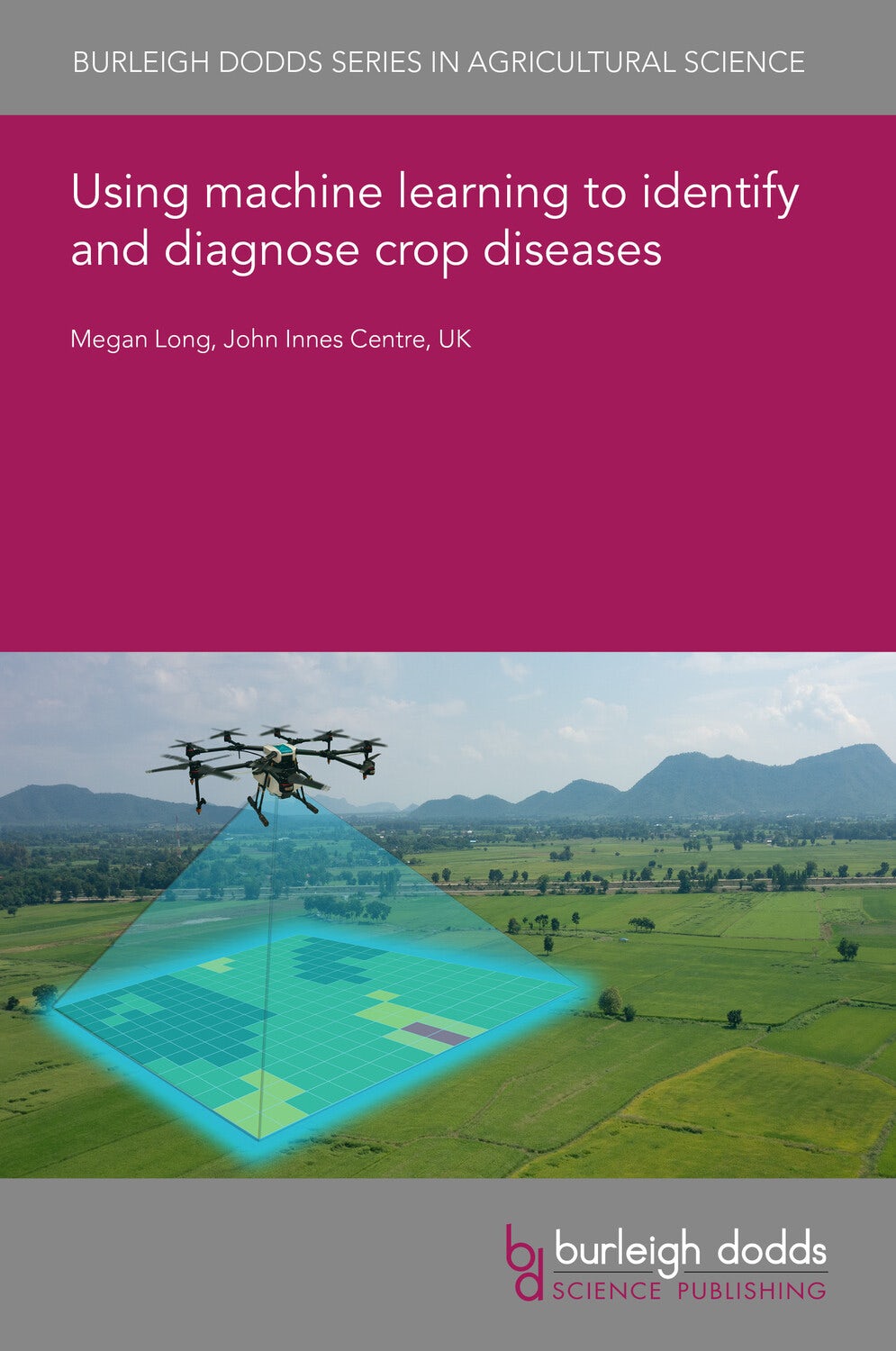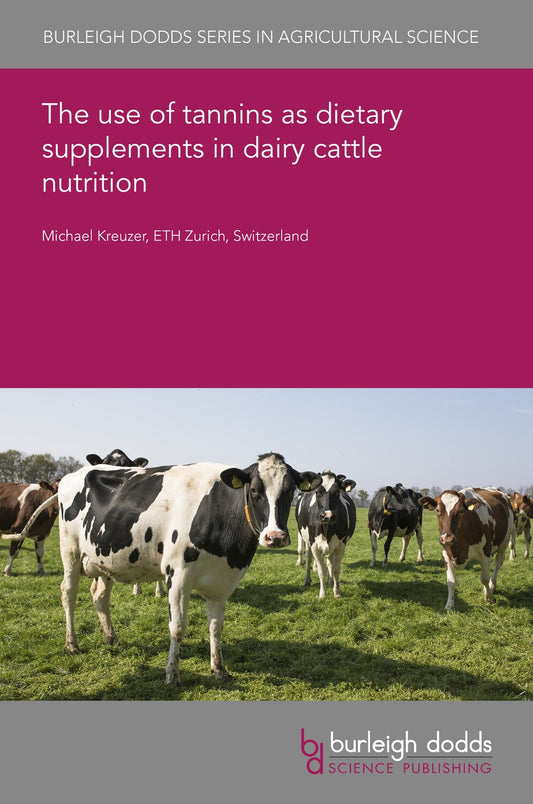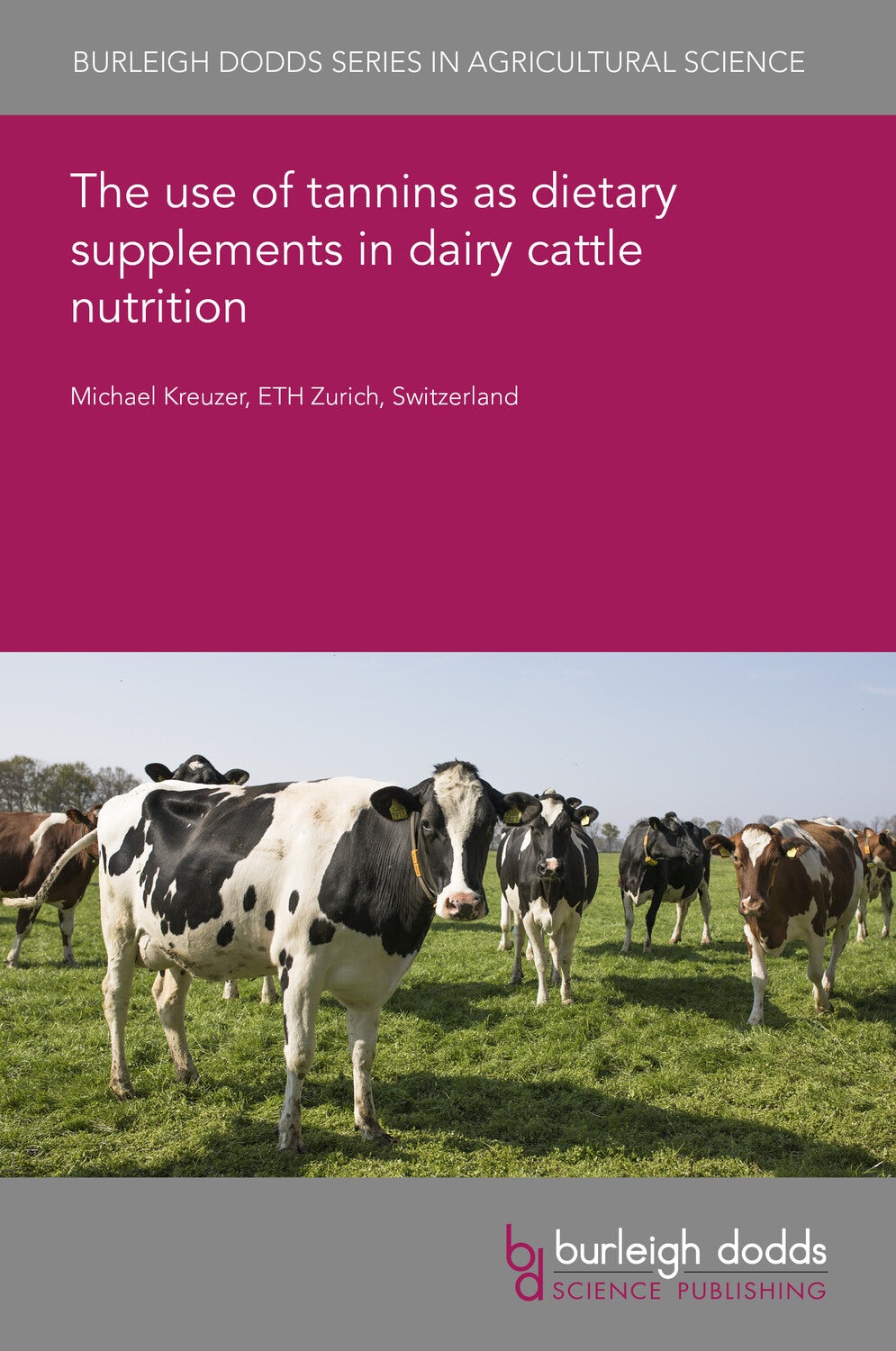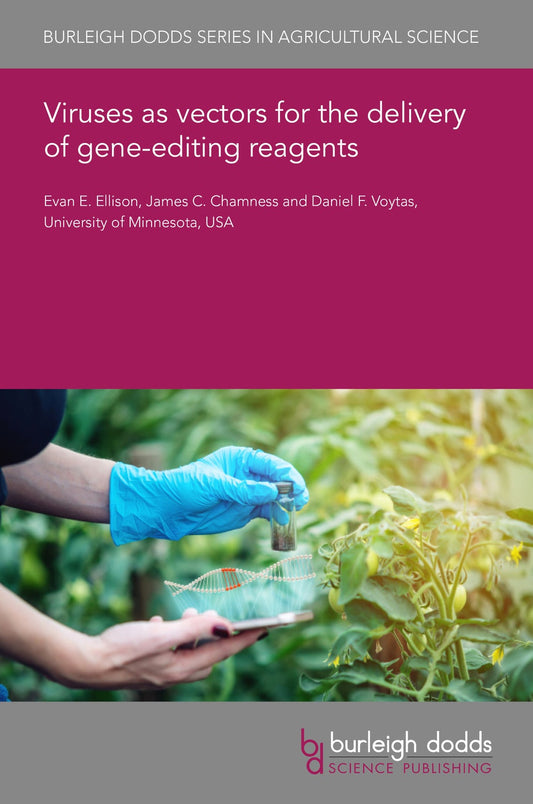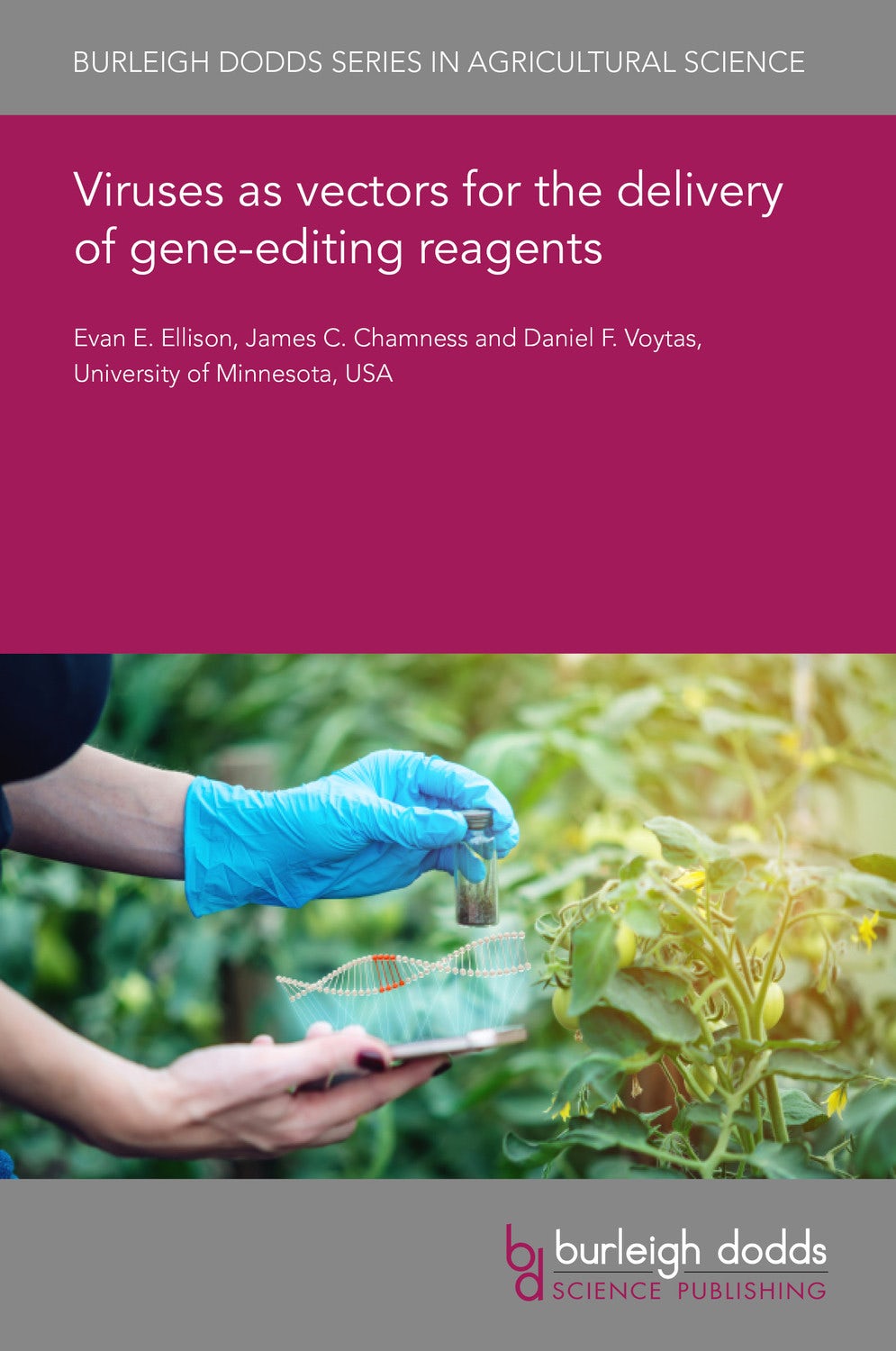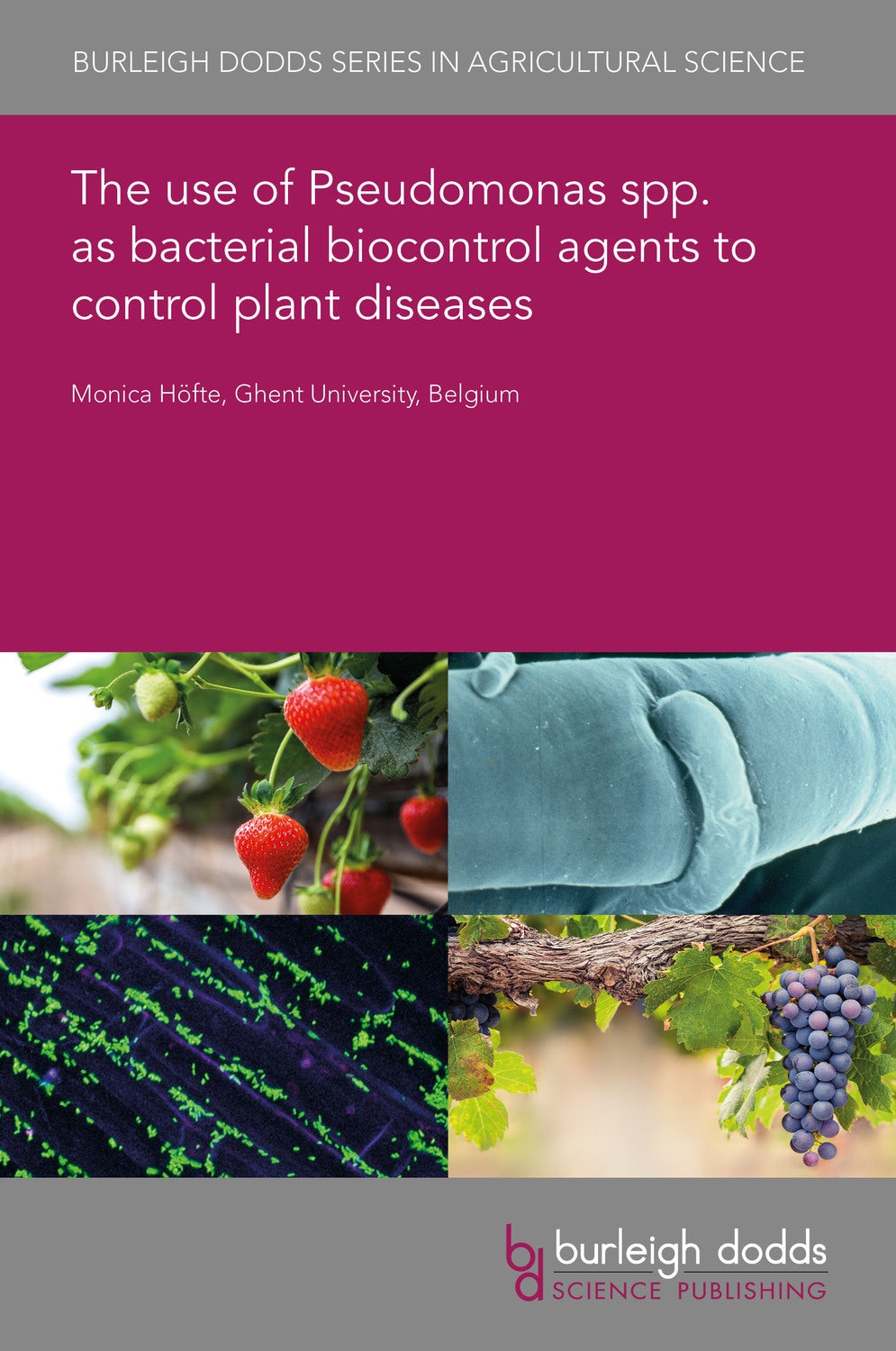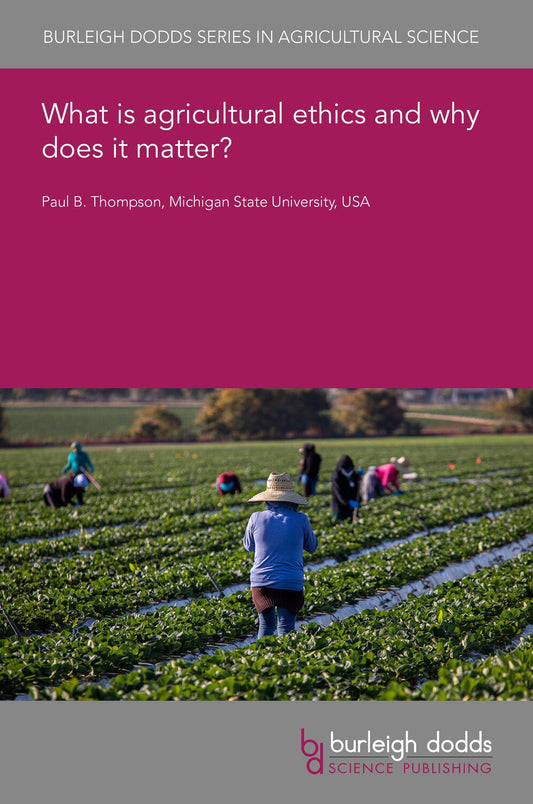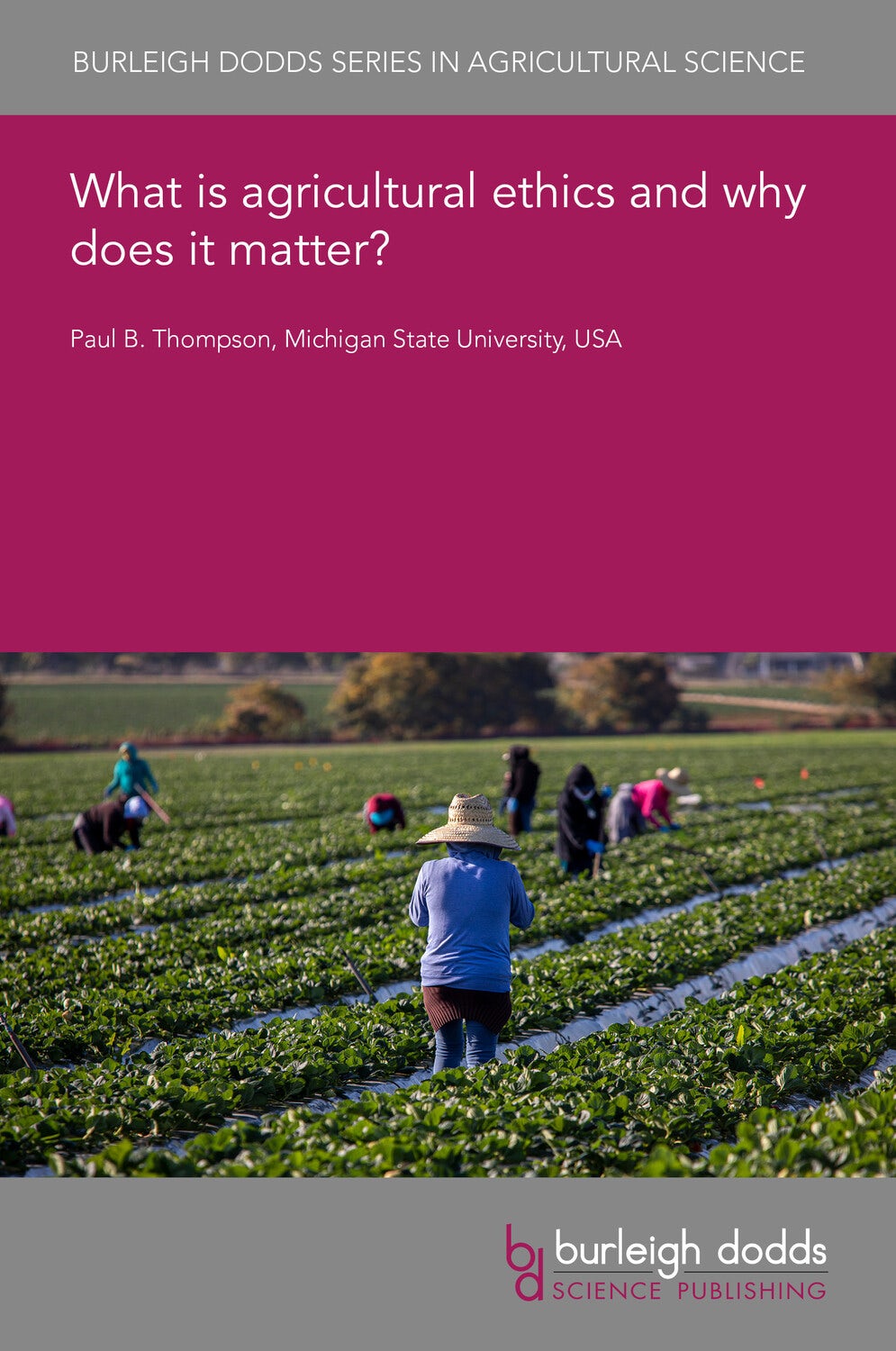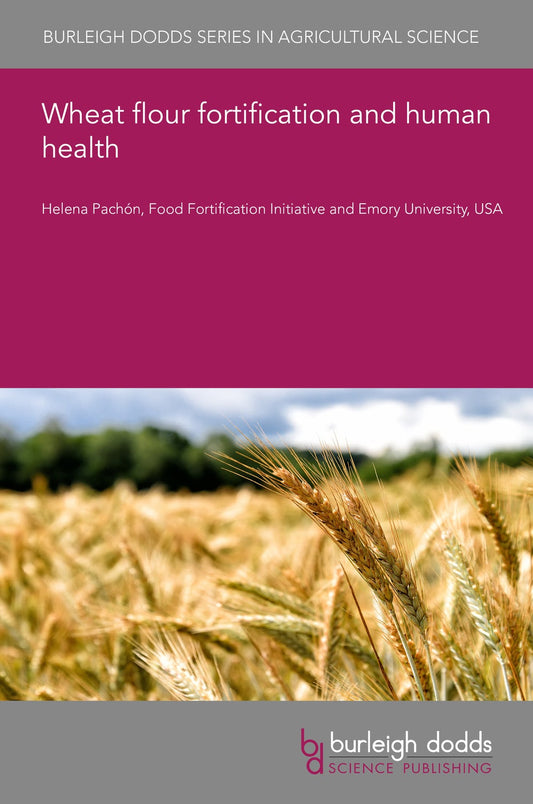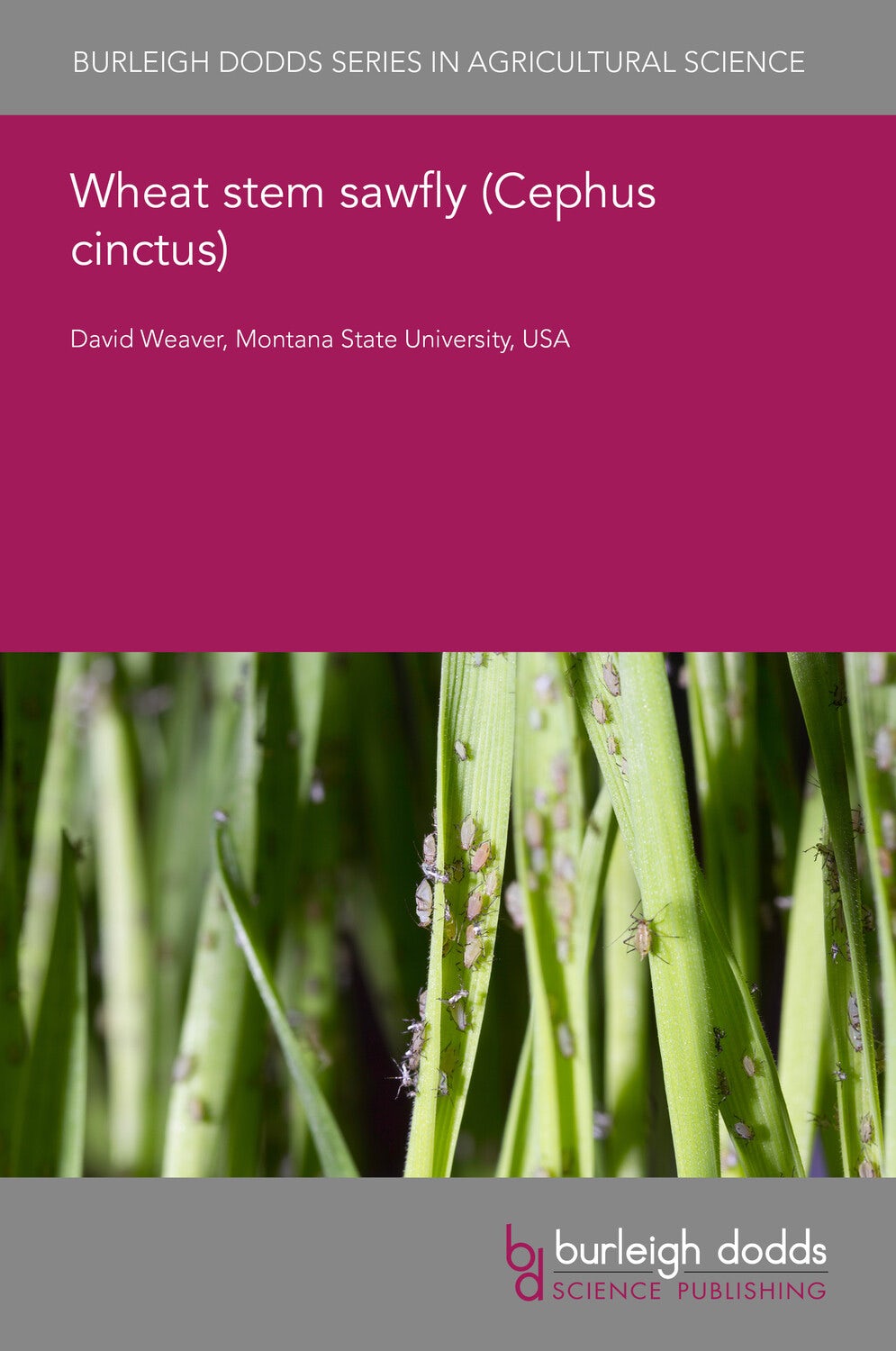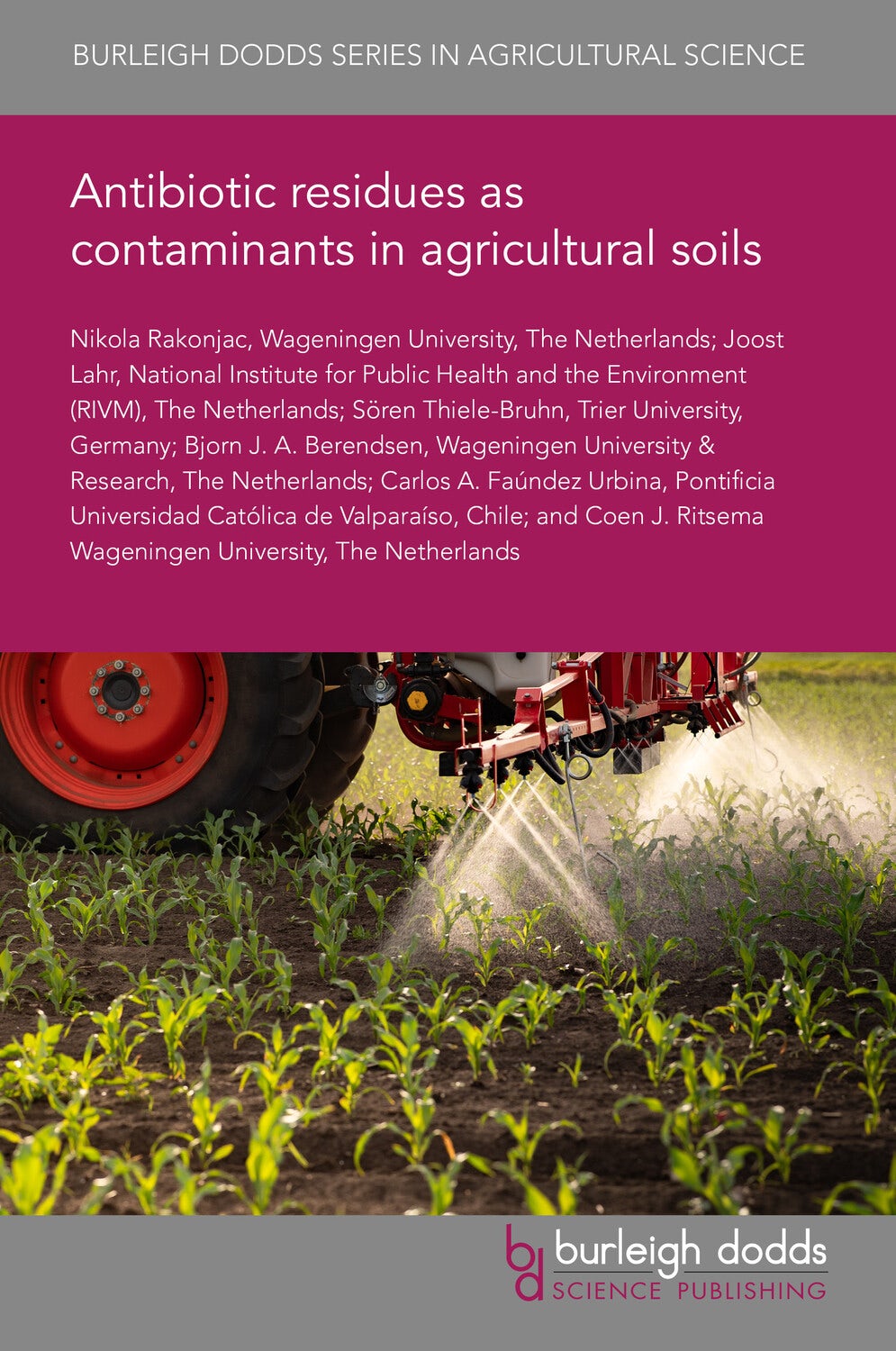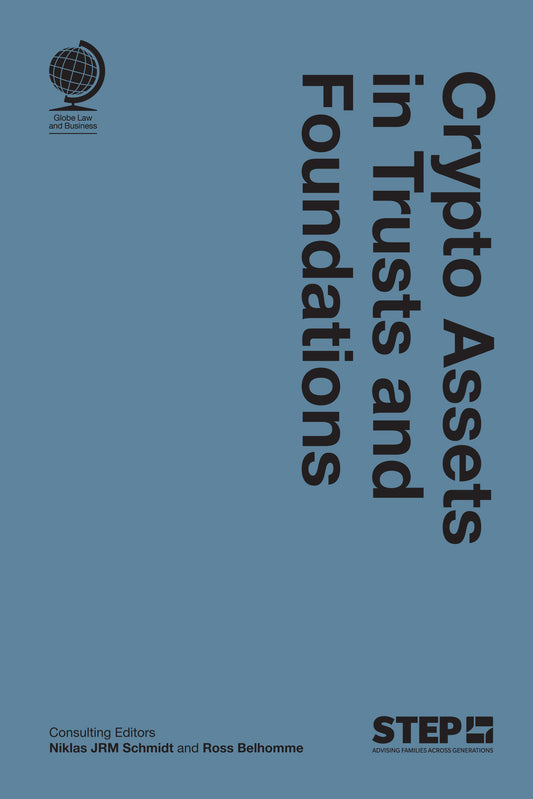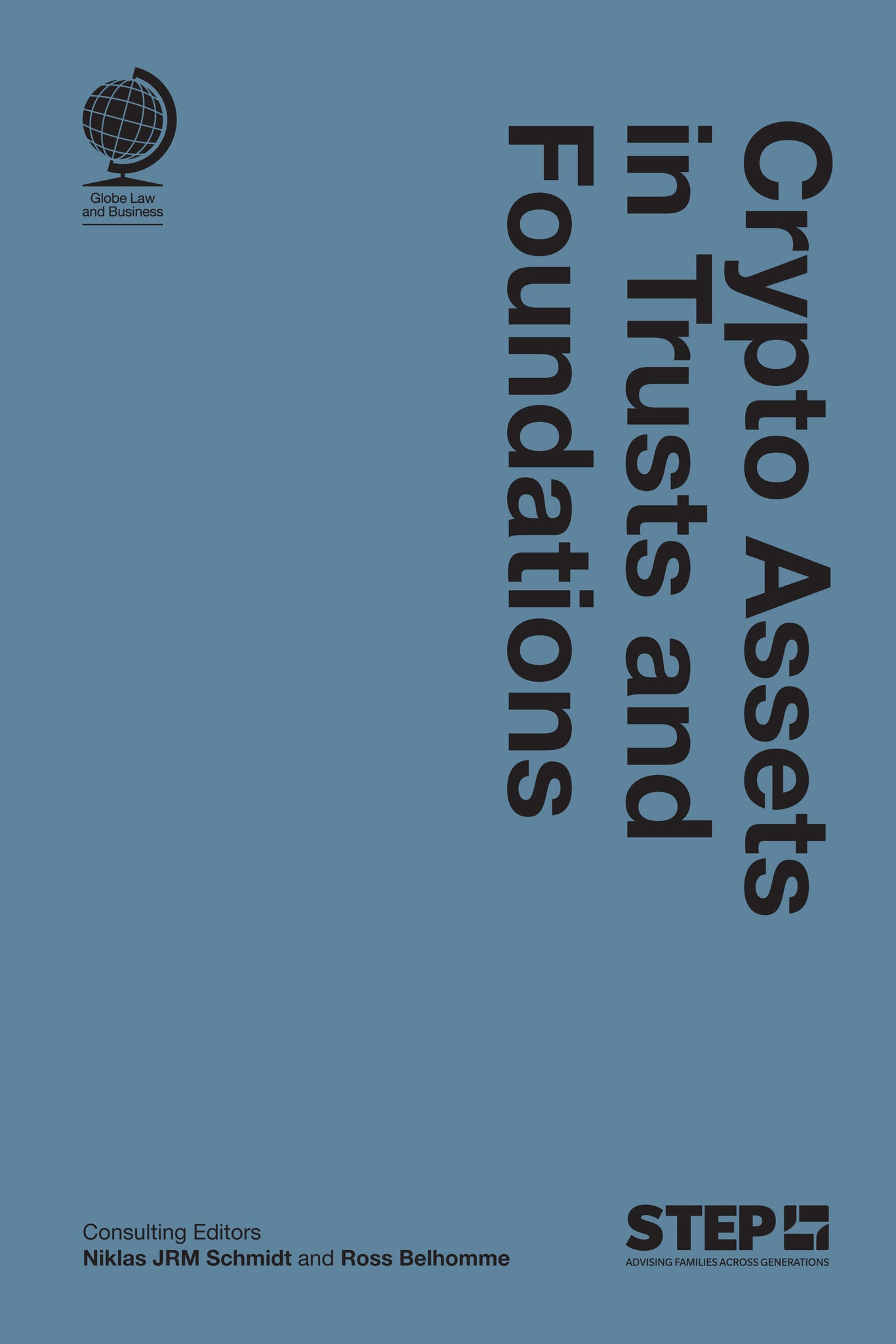Collection: All Books
-
We're sorry. An error has occurred
Please cancel or retry.
Biocontrol via mycoviruses: a neglected option for bioprotection?
Virocontrol involves biocontrol of pathogens via hypovirulence-causing mycoviruses. This chapter discusses the characteristics of mycoviruses and the conditions that need to be met to make a successful virocontrol agent. The chapter describes one of the success stories so far, that of virocontrol...
Read MoreRegular price £0.01Sale price £0.01 Regular price £0.00Unit price / per -
We're sorry. An error has occurred
Please cancel or retry.
Benefits and trade-offs of soil organic carbon sequestration
Soil organic carbon sequestration has received increasing attention due to the important benefits it can have for ecosystem services and in particular food production, climate change mitigation and adaptation. Indeed, soils rich in organic carbon are, in general, more fertile and support plant gr...
Read MoreRegular price £0.01Sale price £0.01 Regular price £0.00Unit price / per -
We're sorry. An error has occurred
Please cancel or retry.
Clonostachys rosea to control plant diseases
The fungus Clonostachys rosea was recognized as an aggressive parasite on other fungi already in the late 1950s. Research into its potential use in biological control of plant diseases soon followed. Today, there are several commercial products based on C. rosea available for biocontrol applicati...
Read MoreRegular price £0.01Sale price £0.01 Regular price £0.00Unit price / per -
We're sorry. An error has occurred
Please cancel or retry.
Coffee wilt disease
In the early 20th century, coffee wilt disease (CWD) caused by the vascular wilt pathogen, Fusarium xylarioides, spread across Africa destroying coffee trees, reducing yields and significantly impacting producer livelihoods. Through systematic sanitation and establishment of breeding programmes ...
Read MoreRegular price £0.01Sale price £0.01 Regular price £0.00Unit price / per -
We're sorry. An error has occurred
Please cancel or retry.
Chicken egg storage and transport
Chicken eggs will not maintain peak hatchability for long when the eggs are stored. The chapter describes how both egg quality and embryo development will influence the effect of egg storage, considers practical aspects of using storage temperature, humidity and egg turning to keep eggs in good c...
Read MoreRegular price £0.01Sale price £0.01 Regular price £0.00Unit price / per -
We're sorry. An error has occurred
Please cancel or retry.
Considerations with soil testing in turfgrass
Soil testing can be a valuable method to help turfgrass managers make fertilizer decisions and choosing the most appropriate soil test extractant is key. This depends on soil properties and the availability of correlation data for turfgrass species in the desired region. This chapter describes co...
Read MoreRegular price £0.01Sale price £0.01 Regular price £0.00Unit price / per -
We're sorry. An error has occurred
Please cancel or retry.
Creating an infrastructure for cultured meat
Mass producing animal protein damages global ecosystems. To mitigate the environmental impacts of factory farming, one proposed alternative is producing animal protein using cultured meat technologies. Research in this field is rapidly evolving and requires the concurrent development of an infras...
Read MoreRegular price £0.01Sale price £0.01 Regular price £0.00Unit price / per -
We're sorry. An error has occurred
Please cancel or retry.
Considerations with water for turfgrass in arid environments
Golf course managers in arid environments must manage every drop of water like it is their last. Water restrictions continue to tighten and water costs are increasing exponentially in many areas. While superintendents in arid environments utilize onsite weather data to schedule irrigation, curren...
Read MoreRegular price £0.01Sale price £0.01 Regular price £0.00Unit price / per -
We're sorry. An error has occurred
Please cancel or retry.
Creating frameworks to foster soil carbon sequestration
Restorative land management has potential to remove atmospheric carbon dioxide and store carbon in stable forms in soils contributing to climate change mitigation, healthier soils and food security supporting Paris Agreement targets and Sustainable Development Goals. We examine the evidence for a...
Read MoreRegular price £0.01Sale price £0.01 Regular price £0.00Unit price / per -
We're sorry. An error has occurred
Please cancel or retry.
Contribution of animal breeding to reducing the environmental impact of livestock production
Animal production is responsible for 14.5% of total anthropogenic greenhouse gas (GHG) emissions. Approximately half of these emissions originate directly from animal production, whereas the other half comes from feed production. Animal breeding aims at improving animal production and efficient u...
Read MoreRegular price £0.01Sale price £0.01 Regular price £0.00Unit price / per -
We're sorry. An error has occurred
Please cancel or retry.
Development and scale-up of bioprotectants to keep staple foods safe from aflatoxin contamination in africa
Aflatoxins pose a significant public health risk, decrease productivity and profitability and hamper trade. To minimize aflatoxin contamination a biocontrol technology based on atoxigenic strains of Aspergillus flavus that do not produce aflatoxin is used widely in the United States. The technolo...
Read MoreRegular price £0.01Sale price £0.01 Regular price £0.00Unit price / per -
We're sorry. An error has occurred
Please cancel or retry.
Improving biodiversity in agricultural grassland systems
Biodiversity conservation is a rapidly advancing research area in sustainable grassland management. This chapter explores evidence-based approaches to enhance biodiversity on agricultural grasslands. The biodiversity value of these grasslands varies widely, primarily influenced by production-driv...
Read MoreRegular price £0.01Sale price £0.01 Regular price £0.00Unit price / per -
We're sorry. An error has occurred
Please cancel or retry.
Genetic factors affecting the composition and quality of cow’s milk
This chapter reviews the genetic factors affecting the composition and quality of cow's milk. It starts by discussing how different breeds of cattle can affect the composition of milk. The chapter then goes on to examine milk proteins, genetic variants and post-translational modifications. It the...
Read MoreRegular price £0.01Sale price £0.01 Regular price £0.00Unit price / per -
We're sorry. An error has occurred
Please cancel or retry.
Identifying and exploiting genes controlling root system architecture for improving drought tolerance in cereals
In water-limited environments, productivity is directly related to crop evapotranspiration: increased grain yield requires increased inputs of water, whether through rainfall, irrigation or removal of stored soil moisture. The supply of water to the shoot depends on the growth, development and fu...
Read MoreRegular price £0.01Sale price £0.01 Regular price £0.00Unit price / per -
We're sorry. An error has occurred
Please cancel or retry.
Improving data flow and integration in models assessing the impact of climate change on agriculture
This chapter examines improving data flow and integration in models assessing the impact of climate change on agriculture. It starts by first describing model-data integration, focusing on multi-criteria calebration of mechanistic agro-ecosystem models. The chapter moves on to review informing sp...
Read MoreRegular price £0.01Sale price £0.01 Regular price £0.00Unit price / per -
We're sorry. An error has occurred
Please cancel or retry.
Improving the global exchange of germplasm for crop breeding
Different norms, rules and practices organize the exchange of germplasm to address broader global challenges such as advancement of science and innovation, food security, sustainable agriculture or global equity. Some of these institutions are now embedded in various treaties and national regulat...
Read MoreRegular price £0.01Sale price £0.01 Regular price £0.00Unit price / per -
We're sorry. An error has occurred
Please cancel or retry.
In ovo vaccination of chicken eggs
This chapter reviews in ovo vaccination of chicken eggs. It first discusses the history and evolution of in ovo vaccination, then goes on to highlight the various interacting factors of in ovo vaccination success. A section on additional interactions and considerations are also provided, focusing...
Read MoreRegular price £0.01Sale price £0.01 Regular price £0.00Unit price / per -
We're sorry. An error has occurred
Please cancel or retry.
Integrated weed management in grasslands
This chapter describes the current status of IWM for grasslands. Its focus is on management practices available to influence transitions in a weed’s life cycle: from the soil seed bank to seedling establishment, from the seedling stage to the mature plant, and from the mature plant to the soil se...
Read MoreRegular price £0.01Sale price £0.01 Regular price £0.00Unit price / per -
We're sorry. An error has occurred
Please cancel or retry.
Life cycle assessment of indoor vertical farms
Indoor vertical farms (IVF) have expanded rapidly in recent years as an approach to secure resilient food provisioning in urban areas. Sustainability is often promoted by IVFs, focusing primarily on farm-level metrics and information about work with packaging. However, there are few assessments o...
Read MoreRegular price £0.01Sale price £0.01 Regular price £0.00Unit price / per -
We're sorry. An error has occurred
Please cancel or retry.
Managing grasslands to optimize soil carbon sequestration
In this chapter, we will discuss the effect of different grassland management practices on greenhouse gas (GHG) emissions and soil organic carbon (SOC) sequestration. This includes comparison of grasslands with arable croplands, the role of N fertilization, and grazing strategies. Special emphasi...
Read MoreRegular price £0.01Sale price £0.01 Regular price £0.00Unit price / per -
We're sorry. An error has occurred
Please cancel or retry.
Management of organic soils to reduce soil organic carbon losses
Organic soils of intact peatlands store 1/4 of the global soil organic carbon (SOC). Despite being an important source of methane (CH4), they are climate coolers because they continuously accumulate new organic carbon. However, when these organic soils are drained for agriculture, the resulting a...
Read MoreRegular price £0.01Sale price £0.01 Regular price £0.00Unit price / per -
We're sorry. An error has occurred
Please cancel or retry.
Modifying mesophyll conductance to optimise photosynthesis in crops
Mesophyll conductance (gm), the ease with which carbon dioxide can diffuse into and through plant cells, is a promising target for improving photosynthetic rates in plants. Barriers including cell walls, membranes, liquid phases and the anatomy and orientation of the cells and their subcellular o...
Read MoreRegular price £0.01Sale price £0.01 Regular price £0.00Unit price / per -
We're sorry. An error has occurred
Please cancel or retry.
New technologies to improve the ex situ conservation of plant genetic resources
Access to plant genetic resources is fundamental to the development of more resilient and nutritious crops. The efficient and effective conservation of plant genetic resources is therefore key to ensuring global food security. There are more than 1750 genebanks around the world, storing various t...
Read MoreRegular price £0.01Sale price £0.01 Regular price £0.00Unit price / per -
We're sorry. An error has occurred
Please cancel or retry.
Molecular evolution and mechanisms of fungicide resistance in plant pathogenic fungi
Since the introduction in the late 1960s of systemic fungicides with modes of action involving inhibition of single target sites, resistance to many of these products has evolved in populations of fungal pathogens. Many important pathogens have developed reduced sensitivity to many of the major c...
Read MoreRegular price £0.01Sale price £0.01 Regular price £0.00Unit price / per -
We're sorry. An error has occurred
Please cancel or retry.
Mechanisms of soil organic carbon sequestration and implications for management
Organic carbon sequestration is delineated from the different mechanisms underlying the storage of organic matter in mineral soils. The scene is set with definitions of the major terms within the complex of organic matter formation in soils, followed by describing the types of organic matter ente...
Read MoreRegular price £0.01Sale price £0.01 Regular price £0.00Unit price / per -
We're sorry. An error has occurred
Please cancel or retry.
Progress in precise and predictable genome editing in plants with base editing
Base editors are gene editing tools that allow targeted nucleic acid conversions, most commonly C>T and A>G, through pairing of deamination domains with impaired nucleases. Multiple deaminase domains and architectures have been demonstrated in planta across a wide array of species, with bot...
Read MoreRegular price £0.01Sale price £0.01 Regular price £0.00Unit price / per -
We're sorry. An error has occurred
Please cancel or retry.
Origins and drivers of crop phenotyping
Plant phenotyping has seen rapid recent development in methods and technologies. This chapter outlines how plant phenotyping has developed over recent decades, driven by factors such as advances in optical sensors, image analysis and automation as well as multidisciplinary cooperation in establis...
Read MoreRegular price £0.01Sale price £0.01 Regular price £0.00Unit price / per -
We're sorry. An error has occurred
Please cancel or retry.
Quantifying captures from insect pest trap networks
In this chapter a high-level overview of the goals of trap networks, some examples and details for tephritid fruit flies, and then a detailed description of the TrapGrid model are given. TrapGrid can be used to quantify the probability of capturing insects instantaneously or over time using a fun...
Read MoreRegular price £0.01Sale price £0.01 Regular price £0.00Unit price / per -
We're sorry. An error has occurred
Please cancel or retry.
Sampling and statistics in assessment of fresh produce
New measurement technologies are facilitating new approaches to the improvement of safety and quality in agri-food supply chains. However, measurement uncertainty and choice of sampling strategy can influence the outcomes of assessment programmes. This chapter provides a sampler of calculations ...
Read MoreRegular price £0.01Sale price £0.01 Regular price £0.00Unit price / per -
We're sorry. An error has occurred
Please cancel or retry.
Role of bioprotectants for disease control in integrated crop protection approaches
Bioprotectants have the potential to replace chemical pesticides in agricultural cropping systems and crop protection approaches. Development of new bioprotectants in combination with more restricted use of chemical crop protection will result in their much stronger market position in the future....
Read MoreRegular price £0.01Sale price £0.01 Regular price £0.00Unit price / per -
We're sorry. An error has occurred
Please cancel or retry.
Relaxing non-photochemical quenching (npq) to improve photosynthesis in crops
Sunlight intercepted by crop plants drives photosynthesis and growth. However, the light-harvesting antenna complexes that capture light energy for photosynthesis can also absorb too much light, which enhances the formation for reactive oxygen species and can result in damage to photosynthetic re...
Read MoreRegular price £0.01Sale price £0.01 Regular price £0.00Unit price / per -
We're sorry. An error has occurred
Please cancel or retry.
Strategies for crispr/cas9-mediated genome editing: from delivery to production of modified plants
Despite the conspicuous and rapid development of genome editing tools, implementing this technology in plants often remains constrained by our inability to regenerate fertile genome-modified plants. Finding a viable combination of delivery method, genome editing reagents, and plant regeneration s...
Read MoreRegular price £0.01Sale price £0.01 Regular price £0.00Unit price / per -
We're sorry. An error has occurred
Please cancel or retry.
Talking points on the cultural politics of cultured meat
Cultured meat is a technology that seeks to change the world for the better, by making meat products with a much lower burden on the environment, our health, and animals, compared to conventional meat production. However, any intervention that may cause significant changes to our planet and socie...
Read MoreRegular price £0.01Sale price £0.01 Regular price £0.00Unit price / per -
We're sorry. An error has occurred
Please cancel or retry.
Surveillance on swine farms using antemortem specimens
In the recent past, disease control on swine farms was based on vaccination or intentional exposure to pathogens to stimulate immunity and protect against clinical disease. This one-dimensional strategy became increasingly inadequate as farms increased in size and as pathogens resistant to immune...
Read MoreRegular price £0.01Sale price £0.01 Regular price £0.00Unit price / per -
We're sorry. An error has occurred
Please cancel or retry.
Tools for pest and disease management by stakeholders: a case study on plantwise
This chapter presents Plantwise as an innovative process for pest management in small holder crop production systems. The tools and applications developed under Plantwise constitute innovations that have potential to contribute to broad aspects of pest management. They can be easily repurposed to...
Read MoreRegular price £0.01Sale price £0.01 Regular price £0.00Unit price / per -
We're sorry. An error has occurred
Please cancel or retry.
Towards an early warning system for wheat blast: epidemiological basis and model development
Wheat blast is caused by the fungus Pyricularia oryzae Triticum pathotype (PoT). Significantly damaging wheat blast epidemics are sporadic and limited to tropical wheat growing areas in South America. Unexpectedly, wheat blast was reported in Bangladesh and Zambia in 2016 and 2020, respectively. ...
Read MoreRegular price £0.01Sale price £0.01 Regular price £0.00Unit price / per -
We're sorry. An error has occurred
Please cancel or retry.
Understanding the effects of humidity/ air composition on embryo and post-hatch chick development
Incubational conditions influence embryo growth and viability, which subsequently affect egg hatchability. Along with temperature, environmental factors in the incubator that are of primary importance for optimum hatchability and chick quality include humidity and vital gas (carbon dioxide (CO2) ...
Read MoreRegular price £0.01Sale price £0.01 Regular price £0.00Unit price / per -
We're sorry. An error has occurred
Please cancel or retry.
Understanding the value of and reasoning behind farmer adoption of carbon centric practices
Understanding how to promote farmers’ use of carbon (C) centric practices known to increase soil C sequestration is needed to design information systems and orient policy, investment and environmental markets. Farmers undertake individual and collective actions using techniques that have varied o...
Read MoreRegular price £0.01Sale price £0.01 Regular price £0.00Unit price / per -
We're sorry. An error has occurred
Please cancel or retry.
Understanding plant-pathogen interactions in septoria tritici blotch infection of cereals
Zymoseptoria is a major fungal pathogen of wheat, responsible for the Septoria Tritici Blotch (STB) disease. Recently, STB has been the subject of intensive molecular studies. Notably, massive transcriptomic analyses have helped to explore this particular bi-phasic (asymptomatic/necrotrophic) inf...
Read MoreRegular price £0.01Sale price £0.01 Regular price £0.00Unit price / per -
We're sorry. An error has occurred
Please cancel or retry.
Using machine learning to identify and diagnose crop diseases
Crop diseases can cause major yield losses and the ability to detect and identify them in their early stages is important for disease control. Machine learning methods, in particular deep learning, have shown promise in classifying multiple diseases across many different crop types. In this chapt...
Read MoreRegular price £0.01Sale price £0.01 Regular price £0.00Unit price / per -
We're sorry. An error has occurred
Please cancel or retry.
Use of tannins as dietary supplements in dairy cattle nutrition
This chapter focuses on the use of tannins as dietary supplements in dairy cattle nutrition. It begins by first identifying sources of tannins for supplementation, focusing specifically on the tropics and temperate climates. It then moves on to discuss the effects of tannins in dairy cows, such a...
Read MoreRegular price £0.01Sale price £0.01 Regular price £0.00Unit price / per -
We're sorry. An error has occurred
Please cancel or retry.
Viruses as vectors for the delivery of gene-editing reagents
A significant challenge for plant gene editing is the delivery of editing reagents to germline or regenerable cells to recover heritable genetic modifications. Reagent delivery using biolistics or Agrobacterium is only possible with a limited range of species and genotypes, and inefficient editin...
Read MoreRegular price £0.01Sale price £0.01 Regular price £0.00Unit price / per -
We're sorry. An error has occurred
Please cancel or retry.
Use of pseudomonas spp. as bacterial biocontrol agents to control plant diseases
Most Pseudomonas biocontrol strains are associated with the rhizosphere of plants, where they control soil pathogens by antibiosis or competition, and leaf pathogens via induced systemic resistance. Genome mining and the division of the vastly heterogeneous genus Pseudomonas in phylogenomic (sub)...
Read MoreRegular price £0.01Sale price £0.01 Regular price £0.00Unit price / per -
We're sorry. An error has occurred
Please cancel or retry.
What is agricultural ethics and why does it matter?
This chapter begins by first providing an overview of the key concepts of ethics and common morality, then moves on to review common morality in agriculture and food systems. The chapter also highlights some of the topics involved agricultural ethics, before reviewing the various social science r...
Read MoreRegular price £0.01Sale price £0.01 Regular price £0.00Unit price / per -
We're sorry. An error has occurred
Please cancel or retry.
Wheat flour fortification and human health
Using varied study designs (none of which can confirm causality), investigators assessed the health impact of wheat flour fortification after it was implemented at large scale in countries. Folic acid was the most studied nutrient and the most studied outcomes were neural tube defects, cancer, fo...
Read MoreRegular price £0.01Sale price £0.01 Regular price £0.00Unit price / per -
We're sorry. An error has occurred
Please cancel or retry.
Wheat stem sawfly (cephus cinctus)
This chapter reviews wheat stem sawfly and its effect on wheat production. The chapter first reviews the pest's historical distribution, then moves on to examine how it damages crops, focusing specifically on life cycle driven losses and yield losses. A section on ways to manage the pest is also ...
Read MoreRegular price £0.01Sale price £0.01 Regular price £0.00Unit price / per -
We're sorry. An error has occurred
Please cancel or retry.
Antibiotic residues as contaminants in agricultural soils
Nikola rakonjacAntibiotics, which are extensively used to treat or prevent microbial diseases in animals and humans, can pose significant environmental risks when they enter soil ecosystems. This chapter provides a comprehensive overview of the pathways through which antibiotics reach the soil, the processes th...
Read MoreRegular price £0.01Sale price £0.01 Regular priceUnit price / per -
We're sorry. An error has occurred
Please cancel or retry.
Crypto assets in trusts and foundations
Niklas schmidt , Ross belhommeUser-friendly and comprehensive, it will make essential reading for trustees, board members of foundations, wealth managers, lawyers, tax professionals, family offices, high-net-worth individuals and, indeed, anyone keen to embrace the emerging landscape of crypto assets.
Regular price £195.00Sale price £195.00 Regular price £195.00Unit price / per



